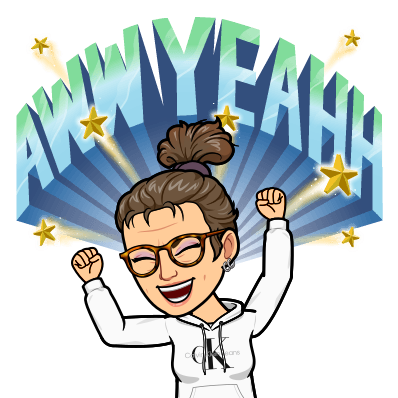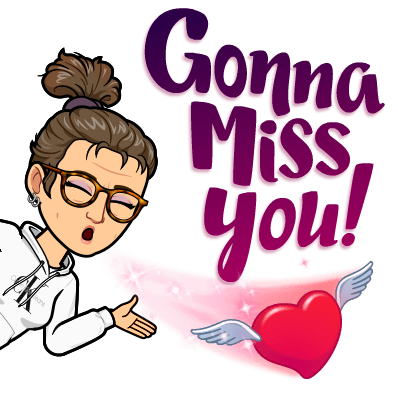10C2 Global Studies
Section outline
-
Kia ora 10C2,
A warm welcome to Takutai Whanua. My name is Ms Amanda Carter and I am you Global Studies teacher for this year.
I hope that you had an awesome holiday break and that you are all excited about your learning in Takutai Whanau.
Learning Intention:
We are learning to :
- understand the meaning of Global Studies.
- gain a better understanding about why Chinese New year is celebrated.
Success Criteria: I can/have
discuss with my buddy the meaning of Global Studies.
give examples of ways that Chinese New Year is celebrated.
So, what is Global Studies?

Most schools refer to Global Studies as the Social Sciences. We will be learning about how societies work and how people can participate as critical, active, informed, and responsible citizens. Our contexts are drawn from the past, present, and future and from places within and beyond New Zealand!
This year we will focus on including Aotearoa NZ's Histories in our teaching and learning.
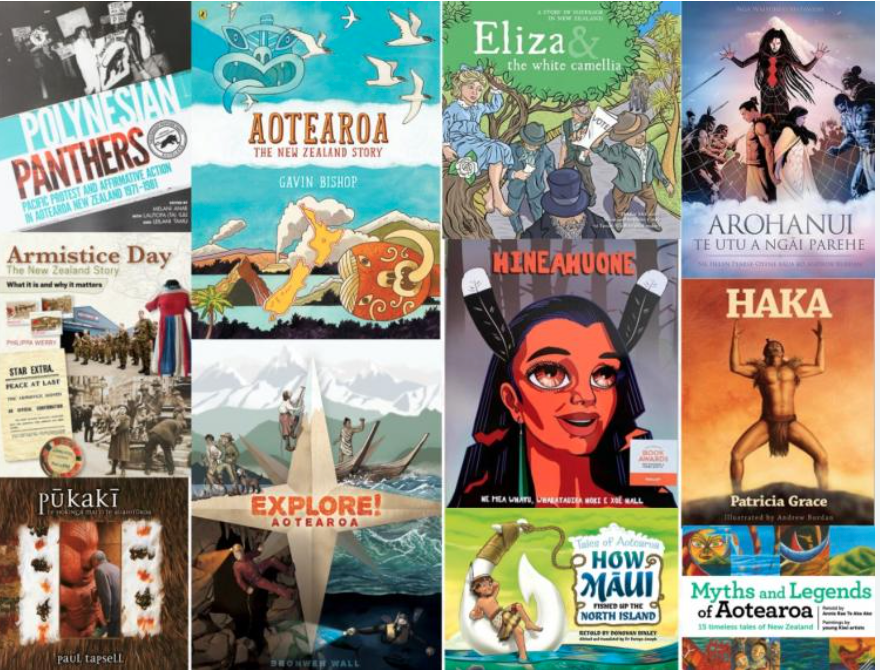
-
FOCUS / ARONGA learning intentions:
- We are FOCUSING on who we are and where we come from.
- We are FOCUSING on describing our family / whanau and genealogy
Introductions Activity Part I
Name: __________________________________________________
Answer the questions below:
If you had a free ticket to take a trip anywhere in the world, where would you go?
(Use this political world map if needed).
List your top 3 choices and and at least one reason why you chose each one:
Country or City Reason
1.
2.
3.
Now choose 3 places you would NOT want to visit and reasons why:
Country or City Reason
1.
2.
3.
Please tell me about your family. For example, do you have siblings? (If so, tell me their names and ages). Do you live with one or two parents, blended family, etc.
What is your ancestry? You may or may not know, but do your best to describe where your ancestors came from, and if possible, approximately when they arrived in the New Zealand.
What after school activities, or hobbies do you enjoy doing in your free time?
Even if you don’t know for sure, what are your plans after high school?
What career do you see yourself having in the future?
Name one global issue that most concerns you and what you think we should do about it.
PART II
After everyone has completed the form, Ms Carter will ask you to reintroduce yourselves to the other people in your group:
Shake their hand, look them in the eye and tell them your name. Write their names here:
___________________________________
___________________________________
After introductions, you will get to know one another. Starting with the person on the left, take 2 min to ask the person on your right some questions to learn more about them. You can use the questions above as a guideline or just get to know one another. BOTH group members should write a few brief notes in the spaces above.
Be ready to turn in this form and introduce each other tomorrow!
-
FOCUS / ARONGA learning intentions:
- We are FOCUSING on understanding the big ideas of Aotearoa New Zealand’s histories
- We are FOCUSING on knowing national, rohe, and local contexts
- We are FOCUSING on thinking critically about the past and interpret stories about it.
Make sure you have completed Part 1 of the worksheet.
Begin on your country presentation as Part 2 as attached.
Introductions Activity Part II
Your task is to choose a country that at least one of you listed as one of the last places you would want to visit, and convince the class to travel there. You will give a 1-2 minute presentation to the class using a Google Slides presentation for visuals. The presentation that earns the most votes (ie: their classmates would choose to visit their country) will earn extra credit. You cannot vote for your own country.
Add you country to the Country List Doc - be respectful and kind and only one person per country.
Procedure:- Compare your list of countries that you ranked last lesson.
- Choose one and get approval from Ms Carter (I may make your choice for you)
- Begin researching your country and look for things that might interest people, including beautiful photographs, interesting facts/history, and famous landmarks or people. Today your task is to JUST LEARN!
- Be creative! Brainstorm as many possible reasons someone may want to visit this country and choose the best ones!
- Create a slideshow that supports your argument that the class should visit this country!
Requirements:- Presentation must last 1-2 minutes
- Slideshow must contain:
- A world map highlighting the location of the country
- Photos of the country
- Minimal text that lists the country name, basic facts, etc.
- Sources of information (websites)
- Share your slideshow with me through Google Classroom assignment.
-
REFLECT / WHAIWHAKAARO learning intentions:
- We are REFLECTING on past events worldwide and EVALUATING the repercussions in Aotearoa New Zealand
EXPLORE / TŪHURA learning intentions:
- We are EXPLORING to know there are different types of sources available to interpret historical events
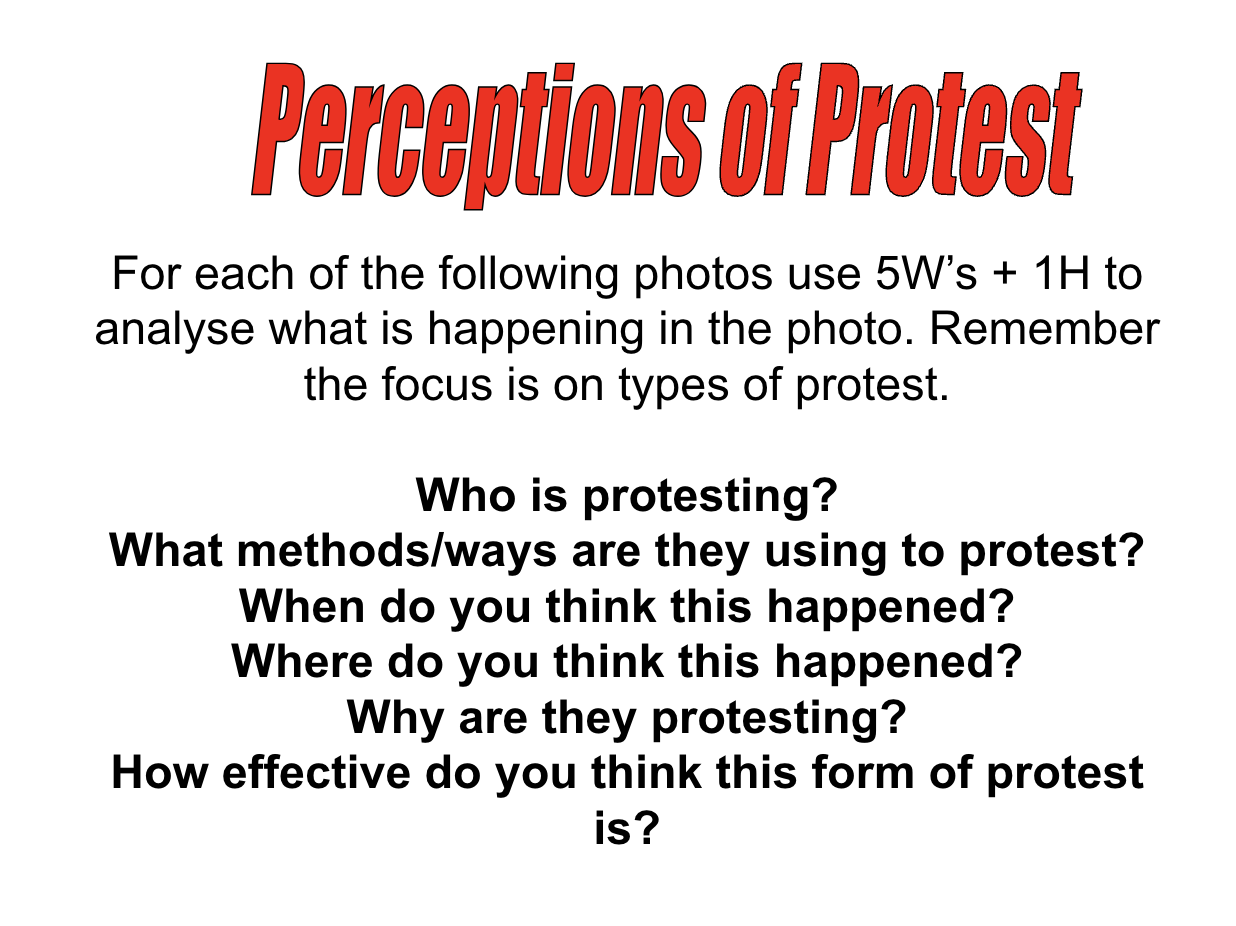
Answer the following questions in your book:
1. Your Name:
2. When your family came to Aotearoa/NZ:
3. Where your family originally came from:
4. Why you or your family came to Aotearoa/NZ:
5. What you or your family knew about the Treaty of Waitangi before coming here:
Tiananmen Square Massacre
What do you think is happening in this picture?
June 4th marks the anniversary of the Tiananmen Square massacre of 1989.
Watch the clip to find out what happened. While you are watching it, fill in the following details:
1. Who was protesting?
2. What were they protesting about?
3. Where were they protesting?
4. What human rights were being denied?
Now watch this clip http://news.bbc.co.uk/1/hi/world/asia-pacific/8082328.stm
5. How has the twentieth anniversary of the massacre been remembered in China?
6. What has been the international reaction to this?
7. Are any human rights being denied to Chinese citizens?
Now click here http://images.google.cn/images?hl=zh-CN&q=%E5%A4%A9%E5%AE%89%E9%96%80%E4%BA%8B%E4%BB%B6&gbv=2&aq=f&oq= This is the page you receive in China when conducting a Google search on the events of Tiananmen Square 1989.
8. Why do you think this is the case?
-
EXPLORE / TŪHURA learning intentions:
- We are EXPLORING to know there are different types of sources available to interpret historical events
- We are EXPLORING to understand that different types of sources have different strengths and weaknesses.
- We are EXPLORING to be able to weigh up the strengths and weaknesses of sources and decide how reliable a source is.
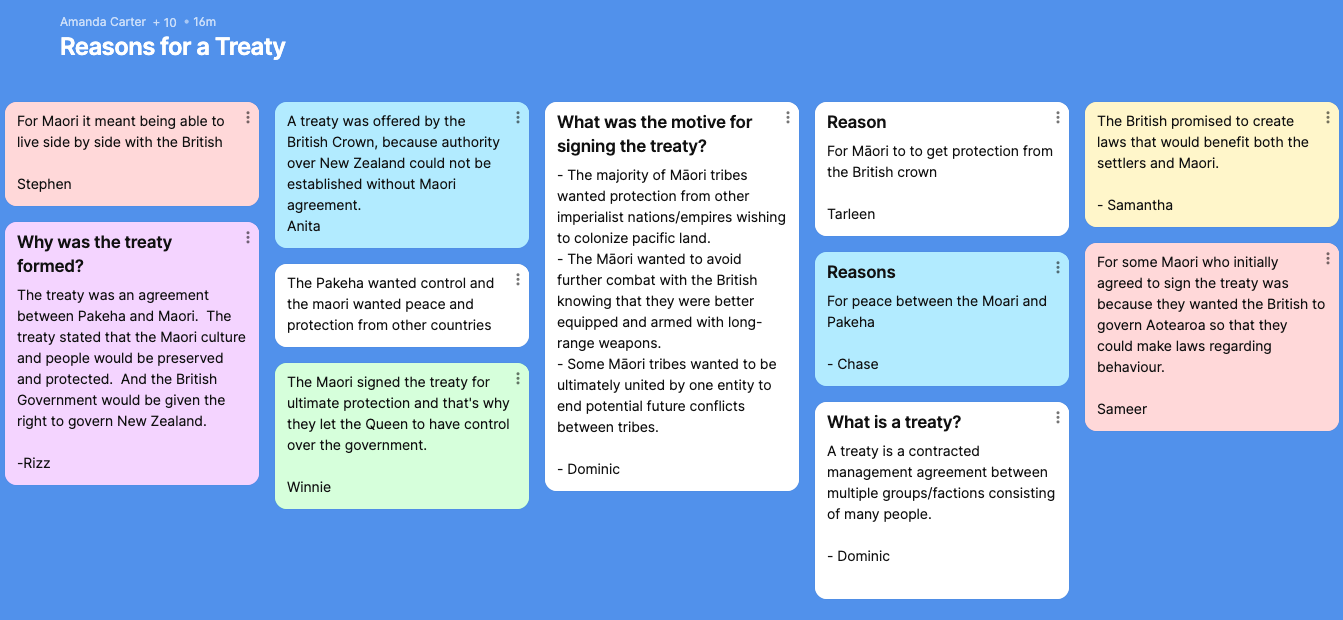
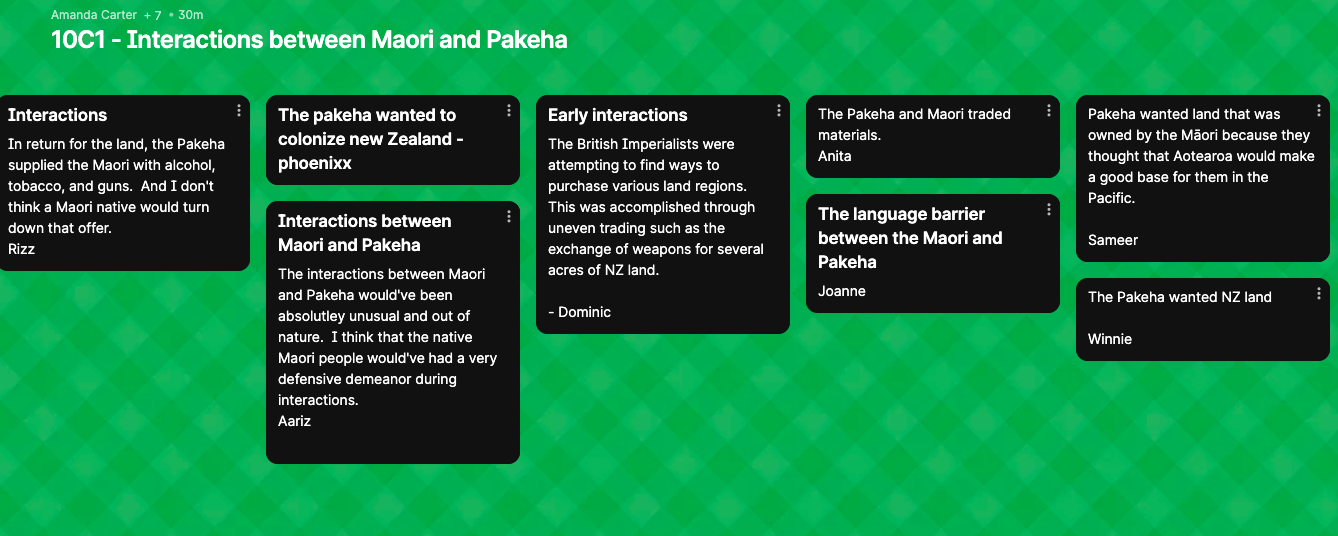
- We are EXPLORING to know there are different types of sources available to interpret historical events
- We are EXPLORING to understand that different types of sources have different strengths and weaknesses.
- We are EXPLORING to be able to weigh up the strengths and weaknesses of sources and decide how reliable a source is.
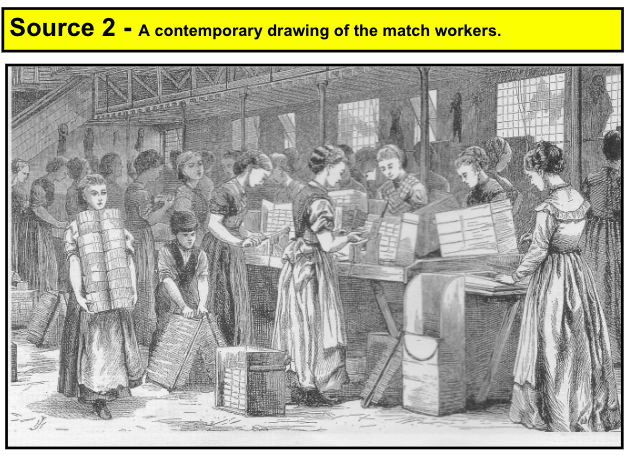
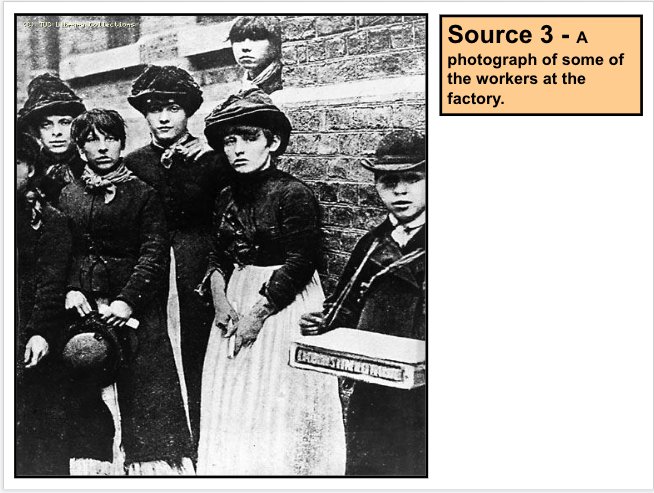

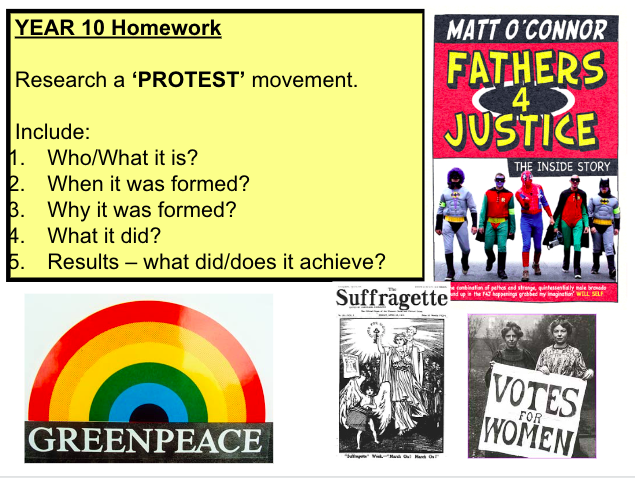
-
EXPLORE / TŪHURA learning intentions:
- We are EXPLORING to know there are different types of sources available to interpret historical events
- We are EXPLORING to understand that different types of sources have different strengths and weaknesses.
- We are EXPLORING to be able to weigh up the strengths and weaknesses of sources and decide how reliable a source is.
Finishing off Source Comparison Activity

-
EXPLORE / TŪHURA learning intentions:
- We are EXPLORING to know there are different types of sources available to interpret historical events
- We are EXPLORING to understand that different types of sources have different strengths and weaknesses.
- We are EXPLORING to be able to weigh up the strengths and weaknesses of sources and decide how reliable a source is.
WebQuest
As a class, you will be given a number, this number relates to the Webquest you will be conducting today.
Treaty of Waitangi - Whalers 1830
Treaty of Waitangi - Missionaries
Treaty of Waitangi - Muskets
Declaration of Independence.
Use the links to aid your research, answer the questions on the scanned sheets in your book, write in TEXAS paragraph for the last question, complete the document in Google Classroom.
Your groups are:
You may work independently and then collaborate or work as a group.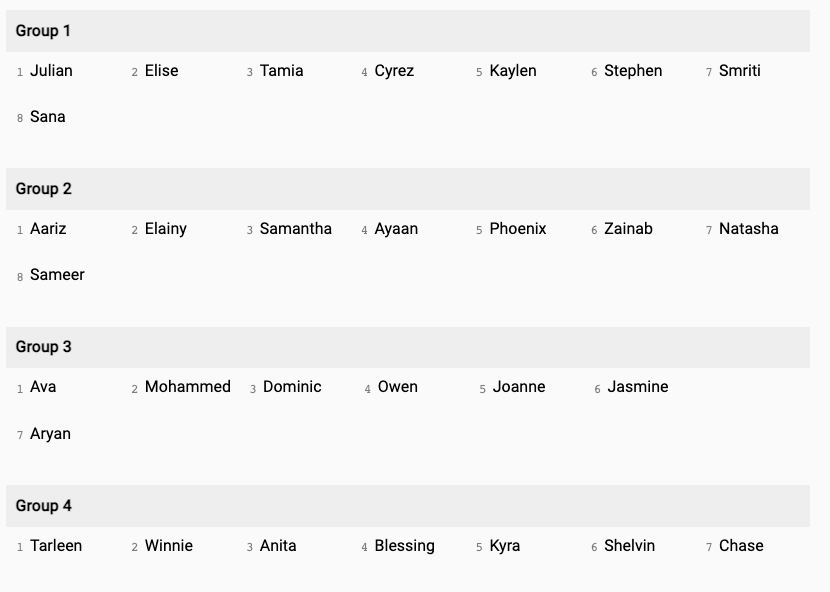
-
EXPLORE / TŪHURA learning intentions:
- We are EXPLORING to know there are different types of sources available to interpret historical events
- We are EXPLORING to understand that different types of sources have different strengths and weaknesses.
- We are EXPLORING to be able to weigh up the strengths and weaknesses of sources and decide how reliable a source is.
The Treaty of Waitangi: Its terms
A Treaty
A Treaty is an agreement between groups of people or countries
Other words for a Treaty are pact, contract, charter, covenant
The Treaty may have a preamble or introduction
Then come the points of the treaty, called articles
If the treaty is between two groups who speak different languages it will need a translation so both groups can understand it
TASK: The differences between the Treaty of Waitangi
In front of you are three different clauses from the English and Maori versions of the Treaty of Waitangi
Match the clauses with each other and put in the correct order
In your own words describe the difference between the English and Maori clauses of the Treaty of Waitangi
English version
Maori Version
Maori people guaranteed “exclusive and undisturbed possession of their lands and estates, forests, fisheries, and other properties. Crown has exclusive right to purchase land.
Tikanga (rules, laws and customs) would be preserved. Equality in the law.
Maori give the Queen “all the rights and powers of sovereignty” over their land
Maori guaranteed full and unreserved possession/te tino rangitiratanga” chieftanship over their lands (whenua) and all proprty/treasures. (Taonga). Premption: land to be sold must be offered to the crown first.
Maori have equal rights and privileges (under the law) as British citizens
Maori give the queen governorship of their land
To understand how the Maori and English versions of the Treaty differ, and that the Maori version is the official version used in NZ law.
Write a debate argument from your research on the different perspectives of the following question:
WERE MAORI DELIBERATELY TRICKED INTO SIGNING THE TREATY -
PLAN & DO / WHAKAMAHI learning intentions:
- We are PLANNING to learn how statistics are used in geography so that we can practise mean, median and mode when analysing data.
Geographers use numbers and data to interpret patterns and trends in what they are studying.
Geographers want to find the average within this data. We do this by finding the following:Mean
Median
Mode
We also always put numbers in order from smallest to biggest
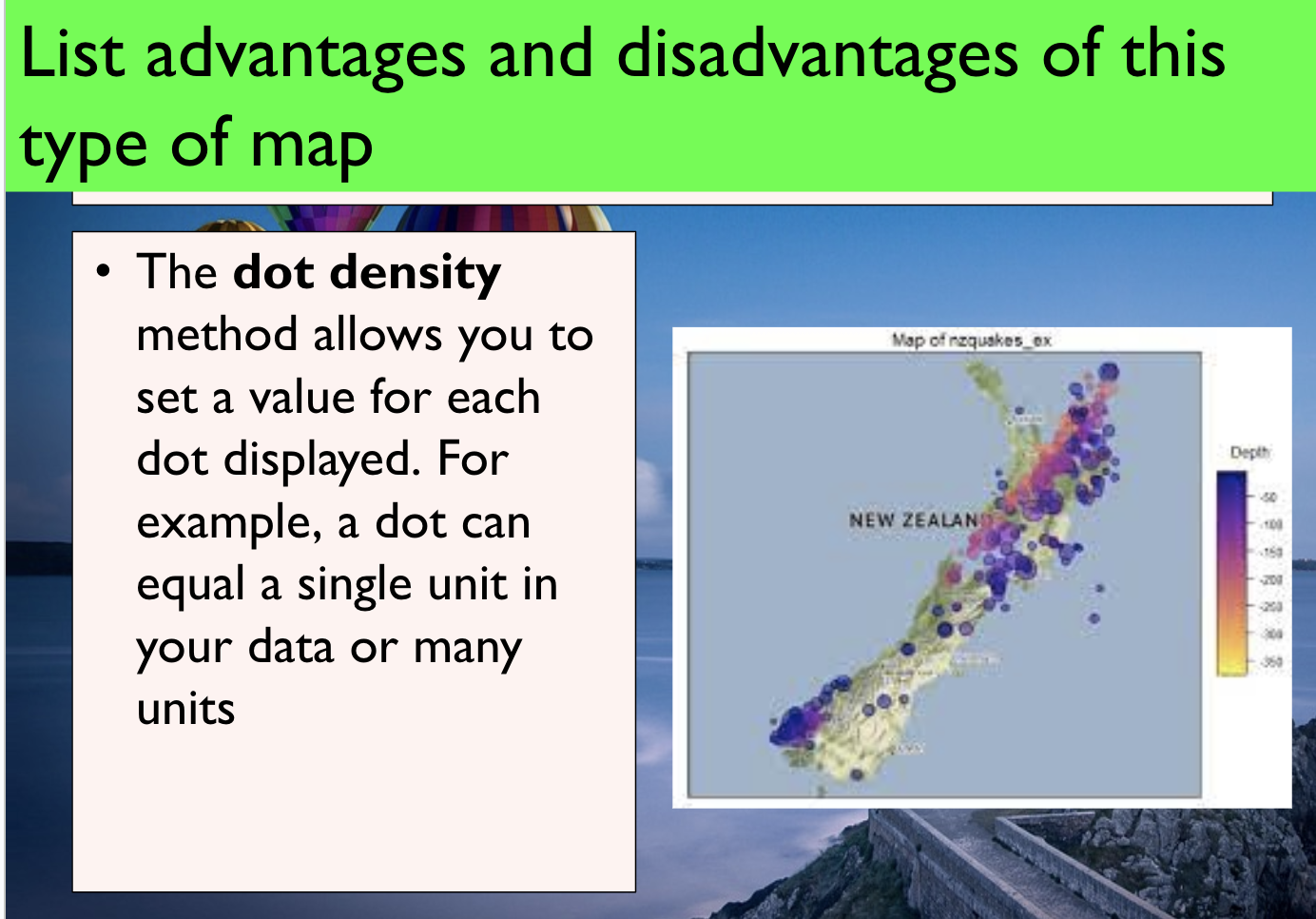
ADVANTAGES
DISADVANTAGES
ALLOWS FEATURES OF DISTRIBUTION TO BE SHOWN
GOOD VISUAL REPRESENTATION
LACKS PRECISION OF LOCATIONS
TOO MANY DOTS COULD MERGE SO UNCLEAR
AREAS COULD BE MISSED OUT IF THEY DO NOT CONFORM TO THE SCALE
ONLY INDICATE GENERAL VARIATIONS BETWEEN AREAS
difficulty of counting large numbers of dots in order to get a precise value
Need a large amount of information to draw a map
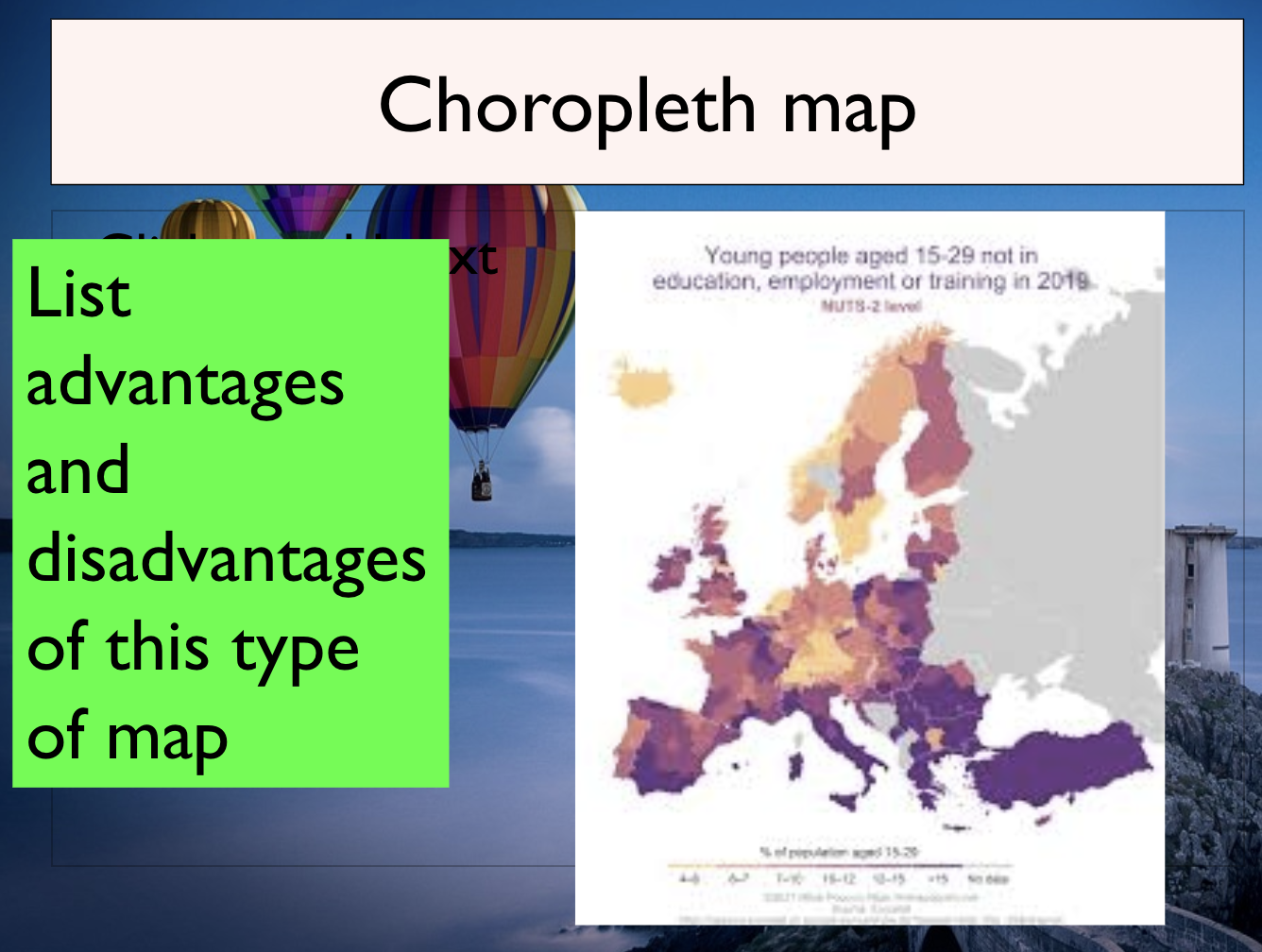
ADVANTAGES
DISADVANTAGES
VISUAL
SHOW PATTERNS CLEARLY
DOES NOT SHOW VARIATION WITHIN AN AREA
GIVE IMPRESSION THAT DENSITY CHANGES ABRUPTLY BETWEEN AREAS. IN REALITY CHANGES WOULD BE GRADUAL
CAN BE DIFFICULT TO SEE SHADING
SMALL VARIATIONS MAY BE HIDDEN
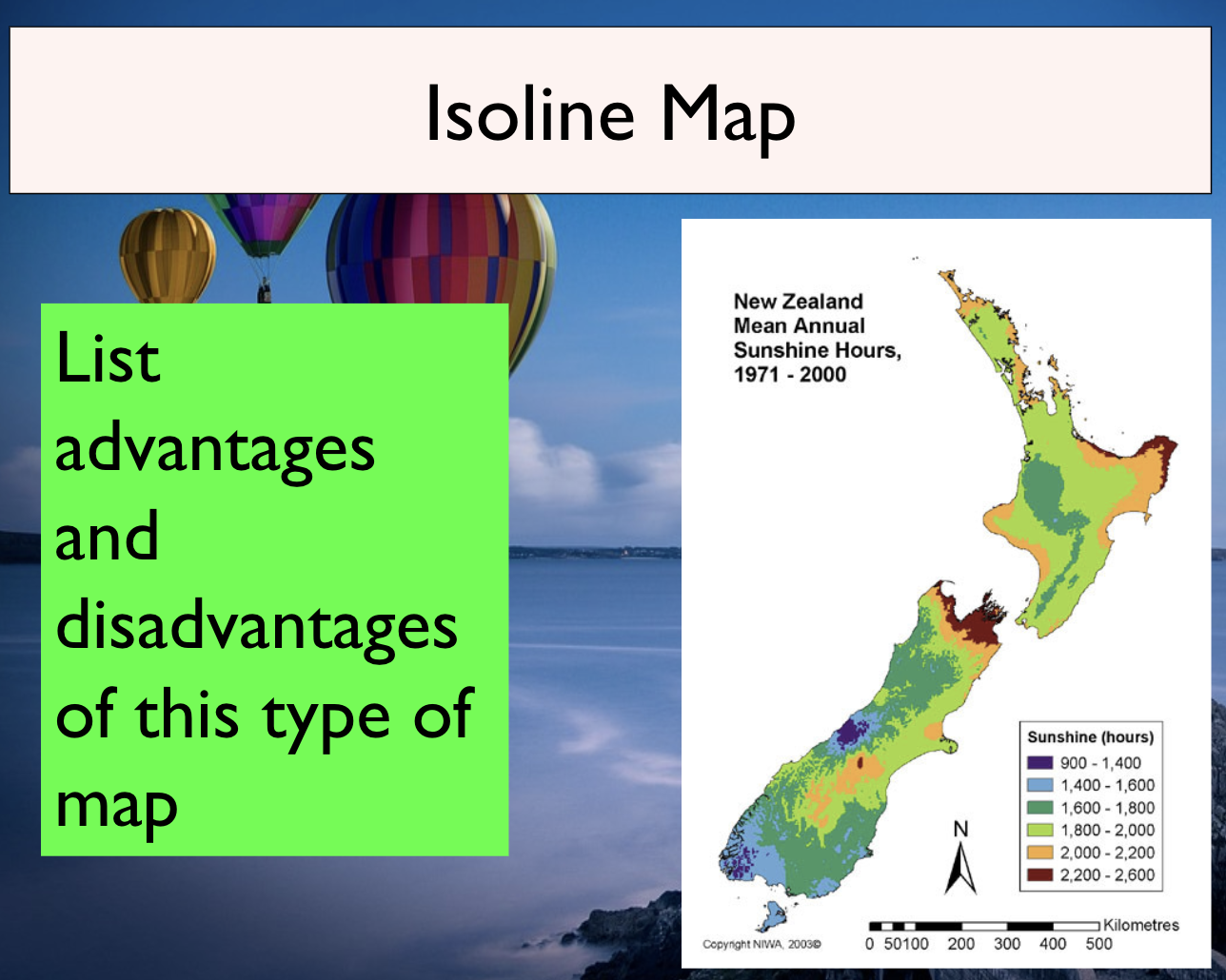
ADVANTAGES
DISADVANTAGES
No artificial boundaries so changes occur with a smooth line not an abrupt one
Can interpret general trends easily
Visually good
Not suitable for showing discontinuous data
Large amount of data needed
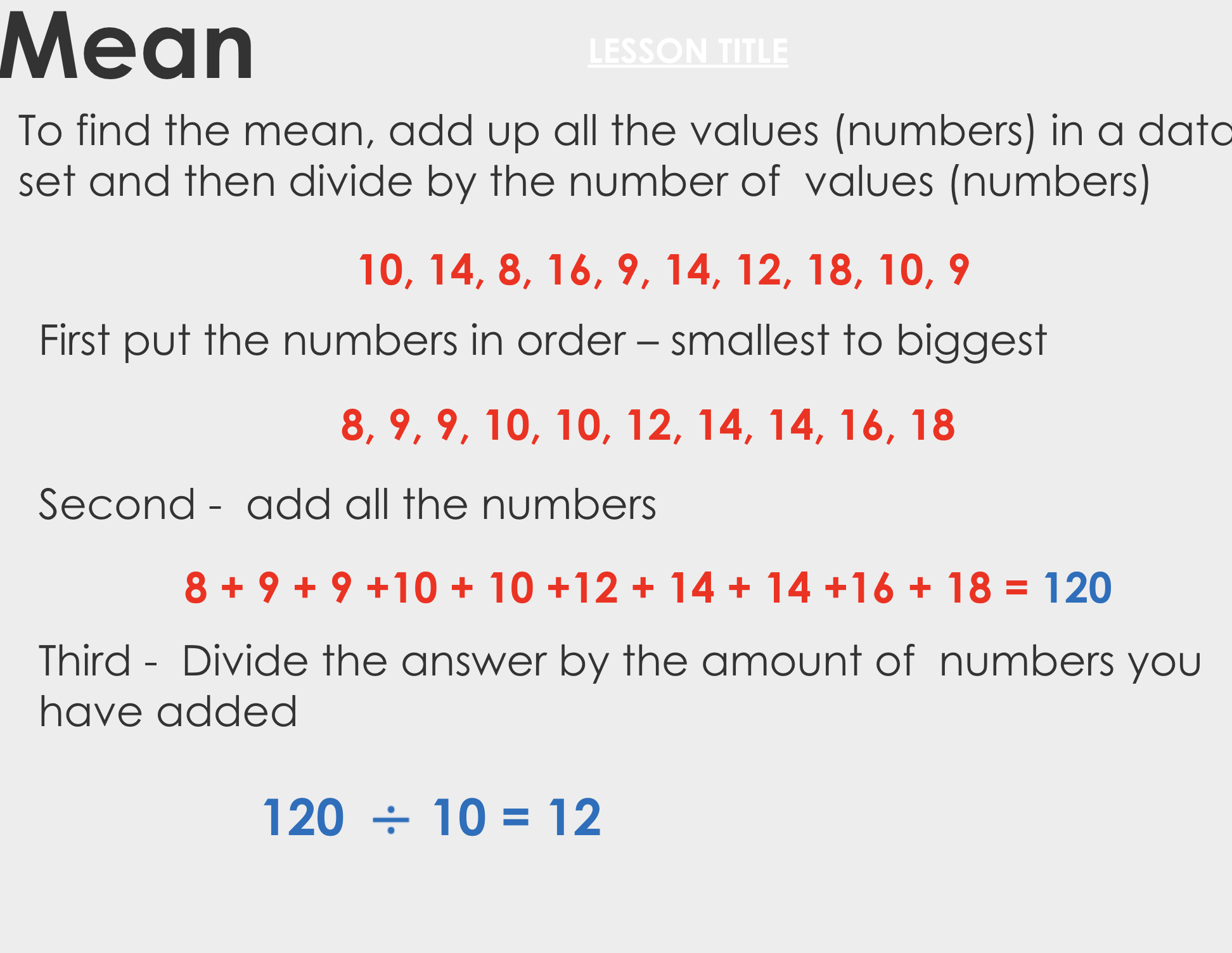
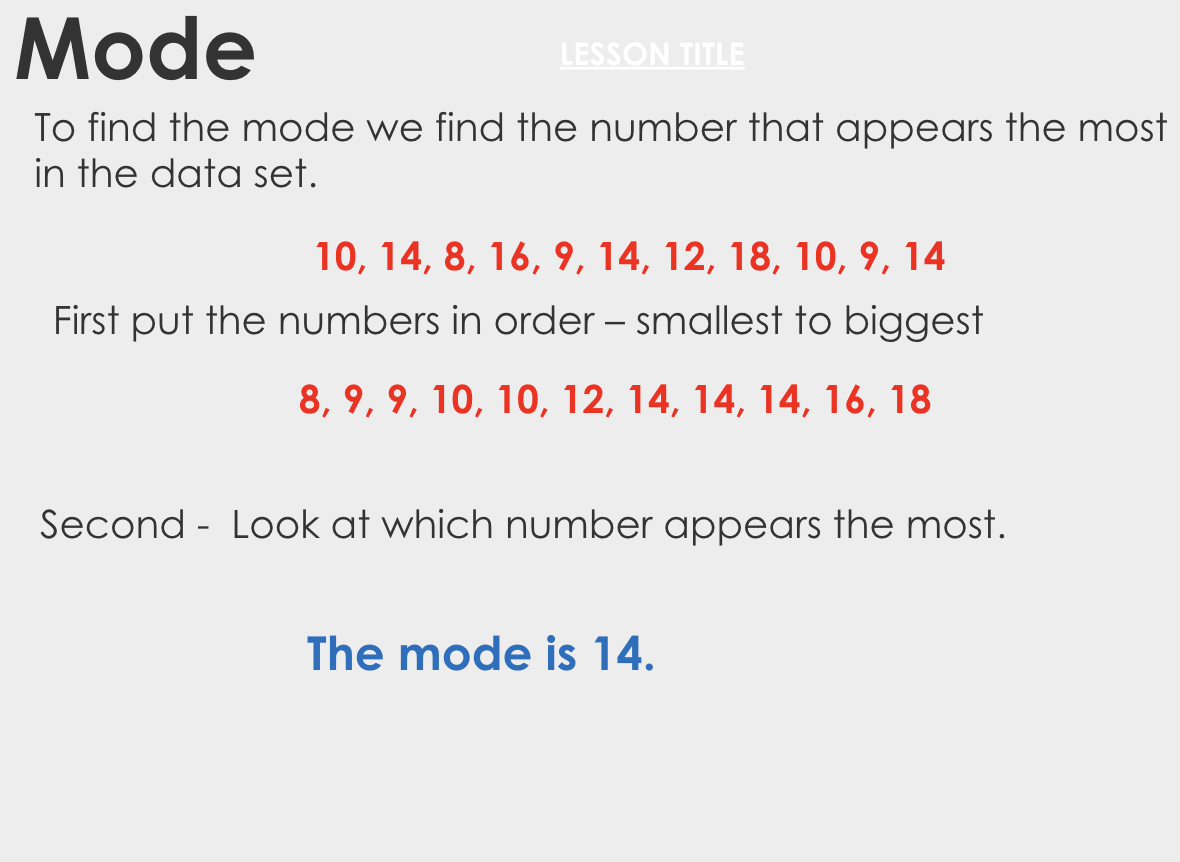
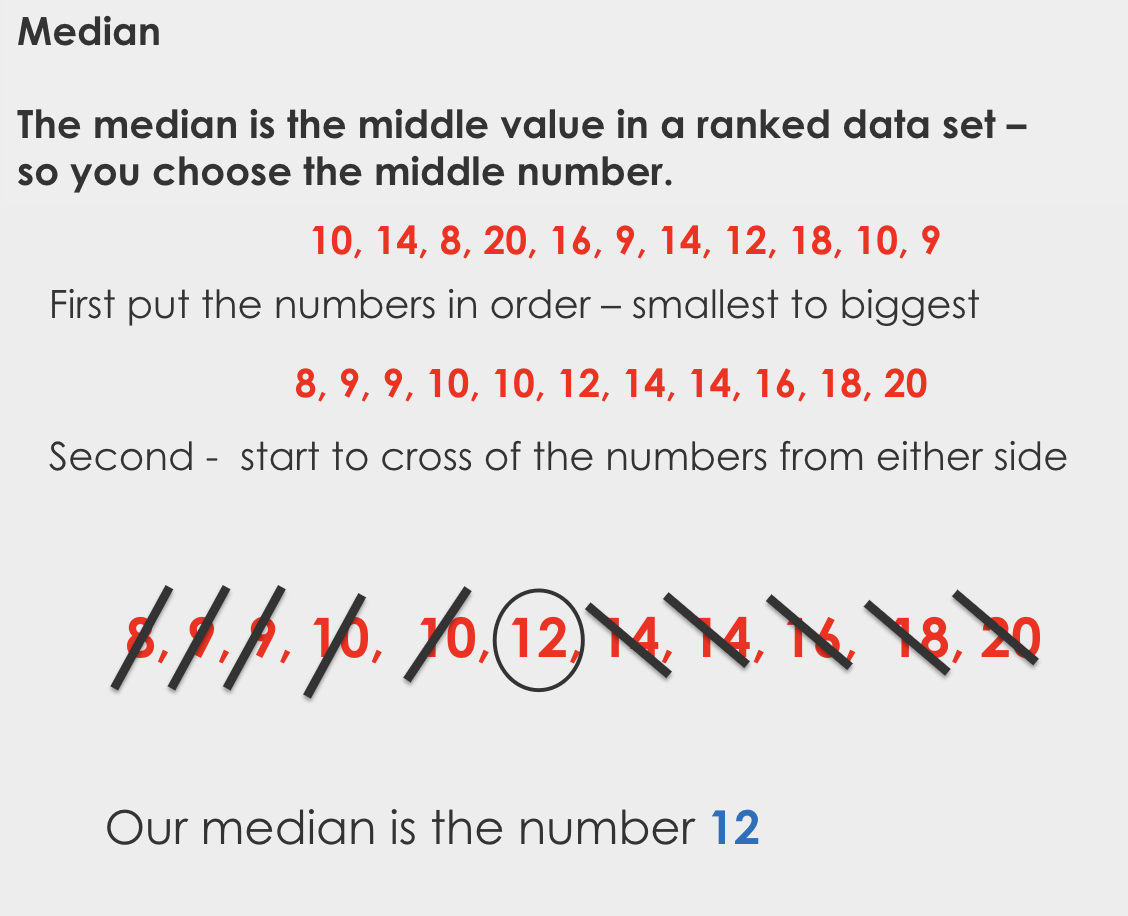
-
EXPLORE / TŪHURA learning intentions:
- We are EXPLORING to know there are different types of sources available to interpret historical events
- We are EXPLORING to understand that different types of sources have different strengths and weaknesses.
- We are EXPLORING to be able to weigh up the strengths and weaknesses of sources and decide how reliable a source is
ASSESSMENT
Bastion Point
Task: You are to complete a research assessment on a place called Bastion Point. You are to make a copy of this ppt and complete the tasks for each question below.
Resources: Below are links to the sites that can help you in your inquiry.
Conditions of Assessment: You are working in pairs on this assessment.
AIM: To understand how the Treaty of Waitangi is responded to differently by people in different times and places.See Google Classroom for resources and assessment.
-
Complete work in your Global Studies Book.
- Read through Climate Graph guidelines
- Work through information on Climate Graph Data
- Plot graph using graph paper and glue into your Global Studies book
- Compare graphs using information provided in Comparing Climate Graphs
Use PDF's in Google Classroom
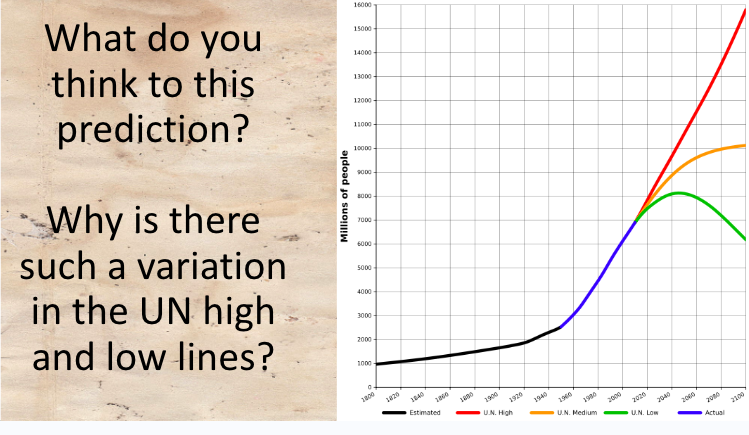
Introduction
What do you think to this prediction?
Why is there such a variation in the UN high and low lines?
Starter
Match up the key words with the correct definitions using the whiteboard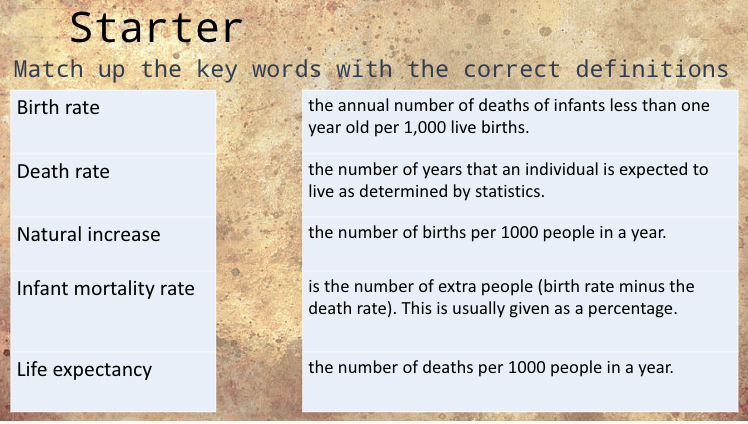
Main
Look through the different types of charts and graphs that can be used to present categories of data in regards to populations.
A population pyramid is a way to visualize two variables: age and sex. A population pyramid is a graph that shows the distribution of ages across a population divided down the center between male and female members of the population. The graphic starts from youngest at the bottom to oldest at the top. It is called a population pyramid because when a population is growing (there are more babies being born than there are people dying), the graphic forms the shape of a triangle.
Watch the video on population pyramids
What information does a population pyramid show us?
How can we compare two countries using one?
What does this tell us about how developed each country is?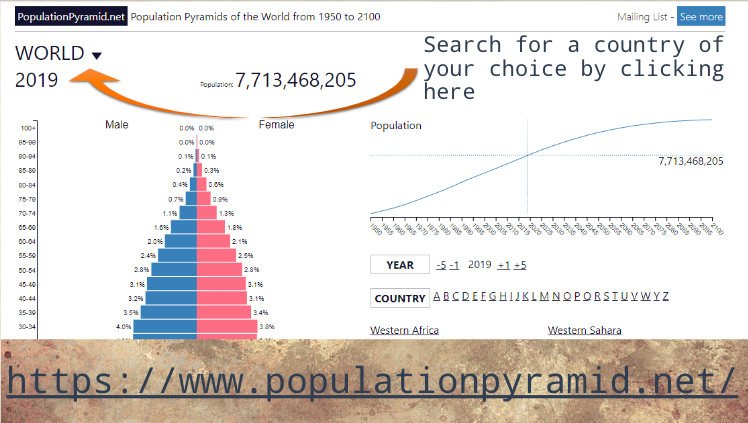
Use the website https://www.populationpyramid.net/ to search for countries of your choosing and compare them and discuss the differences.
Activity 1
Introduce the three categories of countries LIC, MIC and HIC (low, medium and high-income countries).
Label each population pyramid using the above terms. Then use the information slide to copy down facts relating to each pyramid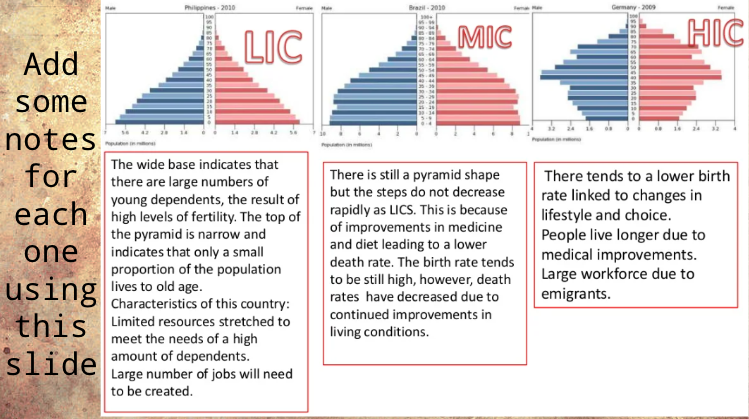
Activity 2
To use 3 population periods from different periods of time that also illustrate the populations of developed and developing countries. Pupils are to answer the multiple choice questions by highlighting the correct answers.
Use the website https://www.populationpyramid.net/ to search for countries to complete 3 population graphs for 3 different countries in your Global Studies book.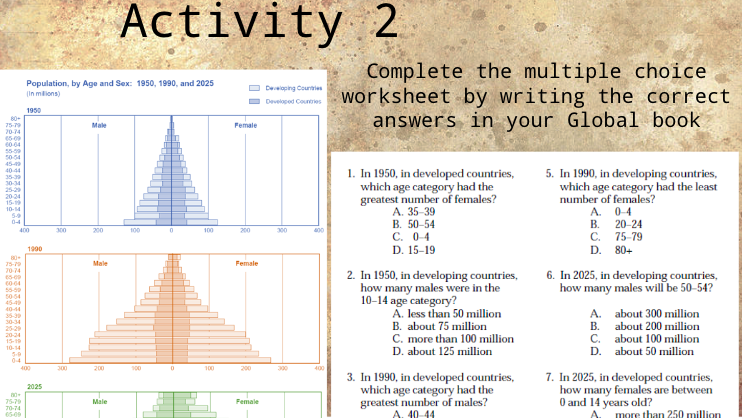
-
EXPLORE / TŪHURA learning intentions:
- We are EXPLORING to know there are different types of sources available to interpret historical events
- We are EXPLORING to understand that different types of sources have different strengths and weaknesses.
- We are EXPLORING to be able to weigh up the strengths and weaknesses of sources and decide how reliable a source is.
- Learning Intentions:
To describe the main powers in pre-war Europe.
To explain how the powers were drawn into alliances.
See Google Classroom for Google Slides work. -
EXPLORE / TŪHURA learning intentions:
- We are EXPLORING to know there are different types of sources available to interpret historical events
- We are EXPLORING to understand that different types of sources have different strengths and weaknesses.
- We are EXPLORING to be able to weigh up the strengths and weaknesses of sources and decide how reliable a source is
Germany
Before 1870 Germany was a collection of small independent states including Prussia, the most powerful. In 1870 it had won a war against France and wanted to ensure that it had help from neighbouring countries in case of a future attack from France.
By the 1890s they had become aggressive under Kaiser Wilhelm II.
The Kaiser wanted to build up its overseas colonies like France and Britain had.
Kaiser ordered the building of a large Navy which was only second to Britain.
German leaders were worried about the country being encircled by enemies.
Germany feared the build up of arms by countries such as Russia in the East.
Learning Intentions:
To describe the main powers in pre-war Europe.
To explain how the powers were drawn into alliances.The Triple Entente (French for agreement): this was between Britain, Russia and France.
- The Triple Alliance: This was between Germany, Italy and Austria Hungary.
The Alliance System
By 1914 the most powerful countries in Europe were divided into two opposing Alliances.
In your groups you have been given an information card for the main countries that were involved in World War One. Each of them were part of an alliance with countries that shared their ideas and could be counted as allies.
Task
You must decide what countries should form an alliance based on the information on the cards.
You will have to justify you answer.
Germany
Before 1870 Germany was a collection of small independent states including Prussia, the most powerful. In 1870 it had won a war against France and wanted to ensure that it had help from neighbouring countries in case of a future attack from France.
By the 1890s they had become aggressive under Kaiser Wilhelm II.
The Kaiser wanted to build up its overseas colonies like France and Britain had.
Kaiser ordered the building of a large Navy which was only second to Britain.
German leaders were worried about the country being encircled by enemies.
Germany feared the build up of arms by countries such as Russia in the East.
Austria-Hungary
Austria-Hungary was a sprawling empire in central Europe. It was made up of people of different ethnic groups: Germans, Czechs, Slovaks, Serbs and many others. Each group had its own customs and language. Many of these groups wanted independence from Austria-Hungary.
By 1914 the main concern for the Emperor of Austria-Hungary was how to keep the empire together.
The Serbs living in the south wanted to be joined to the neighbouring state of Serbia.
Serbia was becoming a powerful force in the Balkans and Austria-Hungary did not want it to become even stronger.
Another neighbour Russia supported the Serbs and had a very strong army.
Italy
Like Germany, Italy was formed from a collection of smaller states. At first, its main concern was to get its government established, but by 1914 the country was settled and looking to ‘flex its muscles’.
Just as Germany had Italy wanted to set up colonies and build up an overseas empire. It therefore looked for allies that shared similar interests.
Italy wasn’t a strong industrial of military power and there for looked for powerful allies.
Britain
Britain had tried to avoid European politics by adopting a n isolation policy from the rest of Europe.
By 1900s this had changed.
France and Britain and reached a number of agreements about colonies in North Africa.
Russia had been seen as a threat but their loss to Japan in 1904 meant that they were no longer seen as a threat.
Britain's industrial output had been overtaken by Germany in this period and they now seemed to be the biggest threat to Britain and its neighbours.
France
France had been defeated by Germany in 1870. Since then, Germany had built up its army and industry under the ambitious leadership of Kaiser Wilhelm II. France responded by also building up their military and industries.
France also developed a strong relationship with Russia in response to the fear from the central European powers.
France had two great aims:
To protect itself from attack
To regain the rich industrial region of Alsace-Lorraine which had been taken from them by Germany in 1870.
Russia
Russia was by far the largest of the six powers but it was also the least advanced. It depended on agriculture predominantly and any industry had relied on loans from France.
It shared the worries France had about Germany as well as having a long standing rivalry with Austria-Hungary which led to their friendly relationship with Serbia as they were both Slav nations and believed that they should have influence over the other Slavs in Austria-Hungary.
1905 Russia lost a war to Japan and the ruler Tsar Nicolas II knew that he could not afford to lose another conflict and therefore built up their army in case of future conflict.
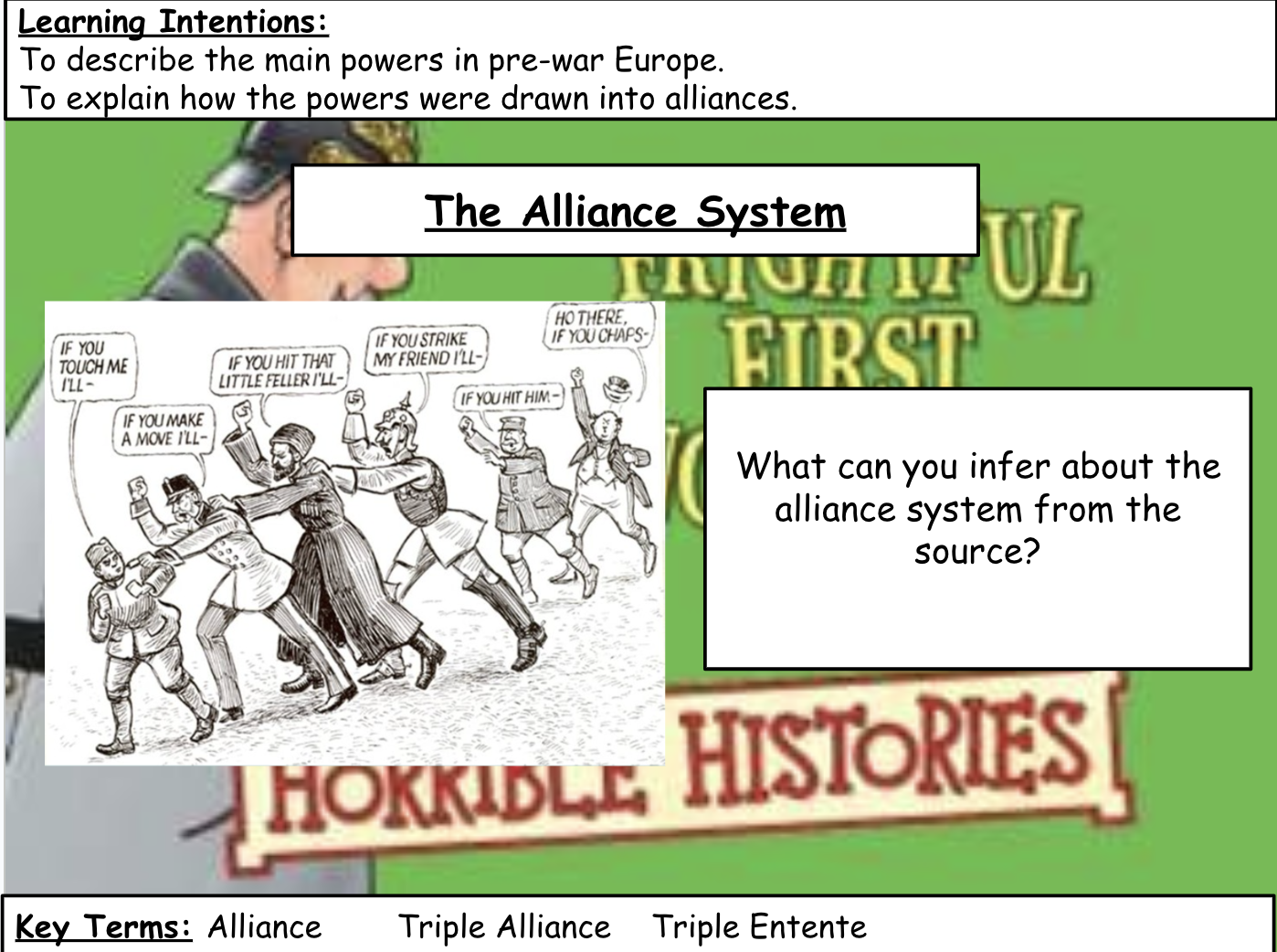
Task
How might the alliance system lead to large scale conflict in Europe?
Success criteria:
Make a judgement on how it could lead to conflict.
Give a reason for your judgement.
Use the source as evidence to support your answer.
Finished? How useful is this source in telling us about the alliances?
“The first world war broke out because of Germany’s acquisition of overseas colonies and the development of a large navy.”
What evidence do we have that this statement is accurate?
What evidence do we have that it isn’t?
-
EXPLORE / TŪHURA learning intentions:
- We are EXPLORING how places reflect past interactions of people with the environment
- We are EXPLORING causes and effects of events that have shaped the lives of a group of people;
- We are EXPLORING how and why people experience events in different ways.

“The first world war broke out because of Germany’s acquisition of overseas colonies and the development of a large navy.”
Over the next few lessons you are going to investigate the accuracy of this statement, and come to your own judgement about how accurate you think it is.
Learning Intentions:- To identify causes and consequences of the arms and naval races.
- To judge whether Germany’s development of a large navy was one of the main causes of the First World War.
Causes of World War One
Militarism - policy of maintaining a large military establishment.
Alliances -
Imperialism
Nationalism
Significant individuals
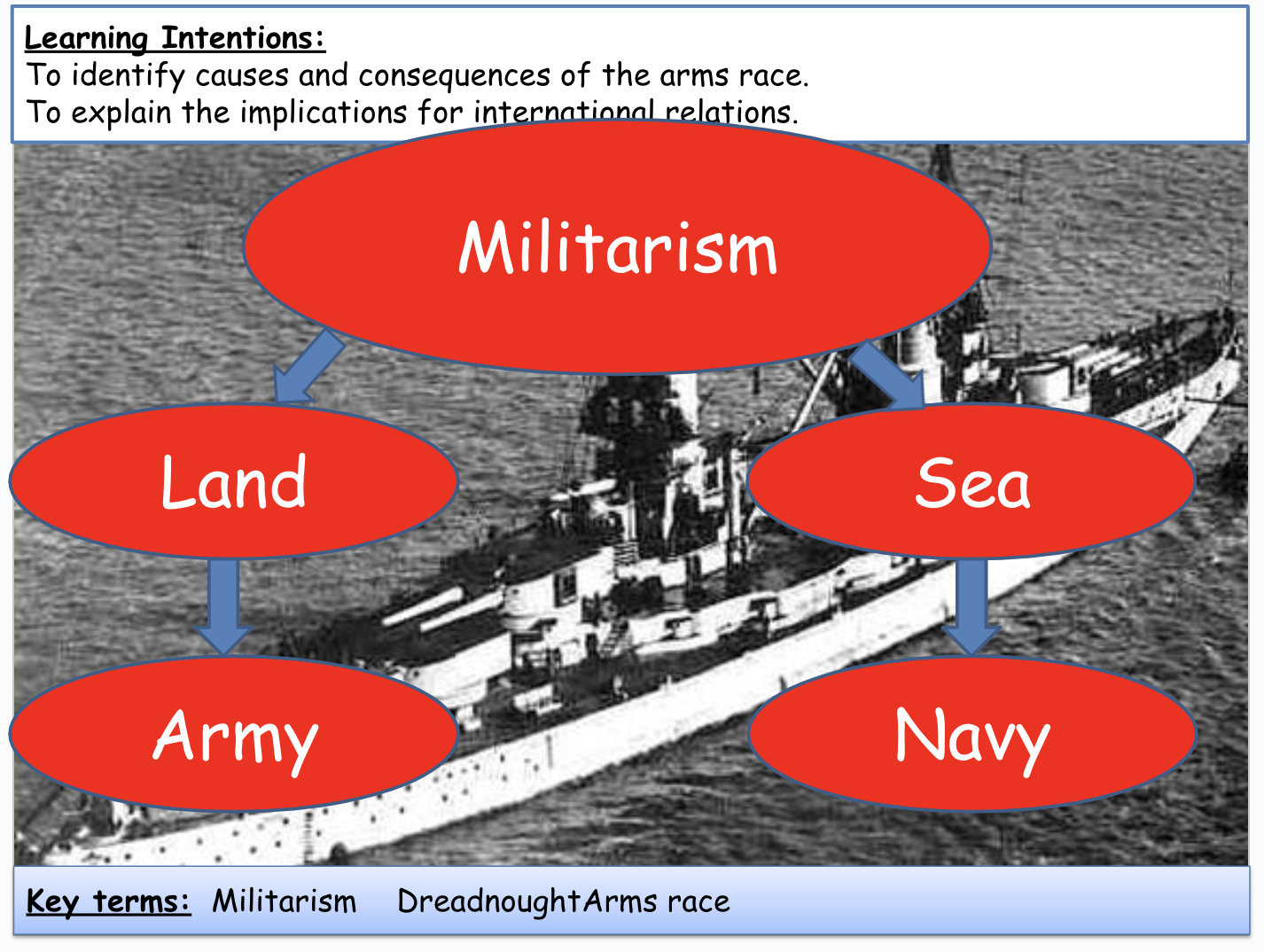
Why did Britain need a strong navy?
Britain was an island – it needed a navy to protect its coastline
To protect her vast overseas Empire
Britain relied on trade with other nations – it needed the navy to protect its trade ships
Why did Germany expand her navy?
Wilhelm II was jealous of Britain’s power and Empire – he wanted Germany to become just as powerful
He claimed that since Germany had an Empire, she needed a large navy to protect it
What would you do if you were in Britain’s position?
Let Germany continue to build ships?
Ask them to stop?
Increase the size of your own navy?
C. Increase the size of your own navy
This became known as the…Naval Race
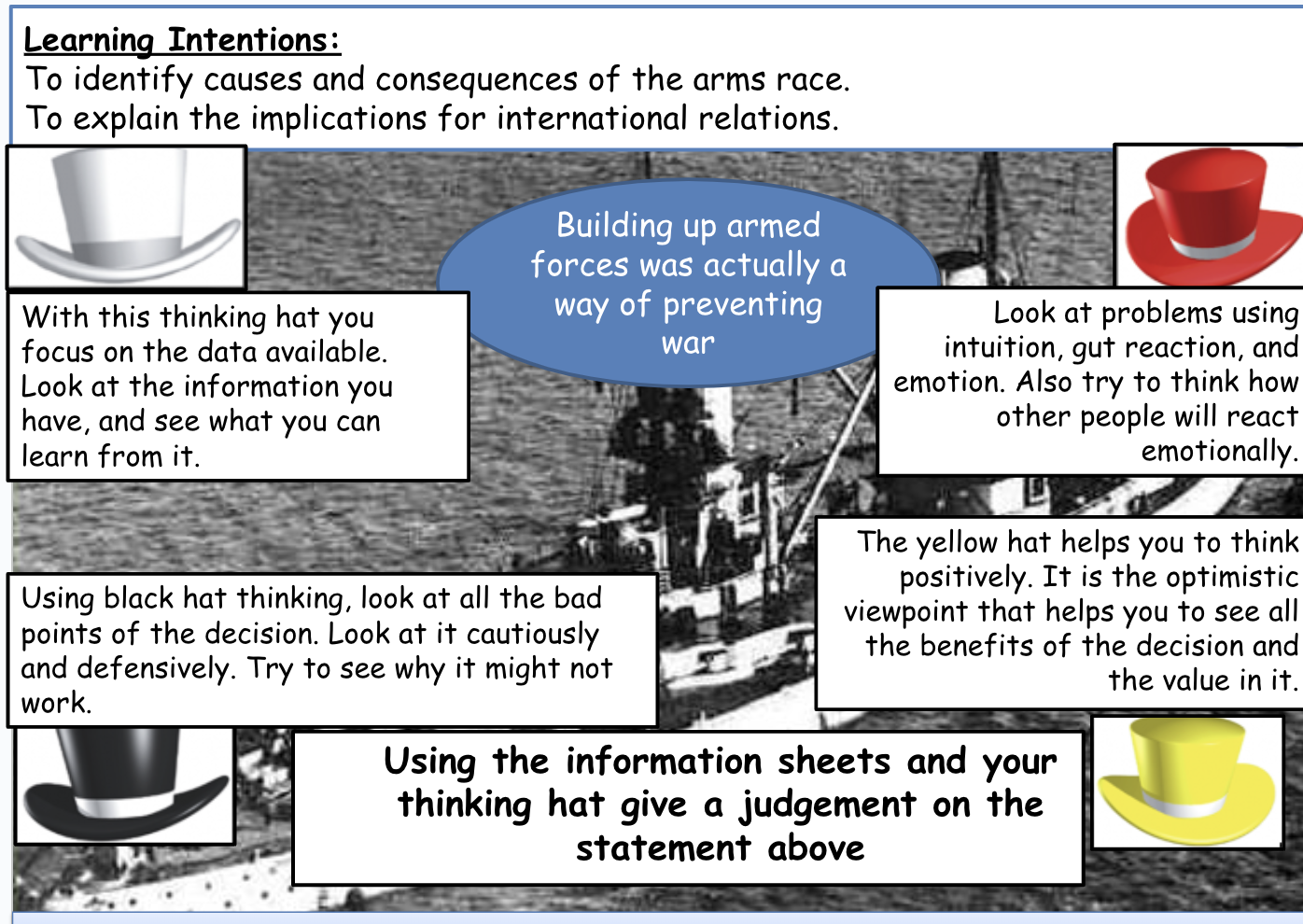
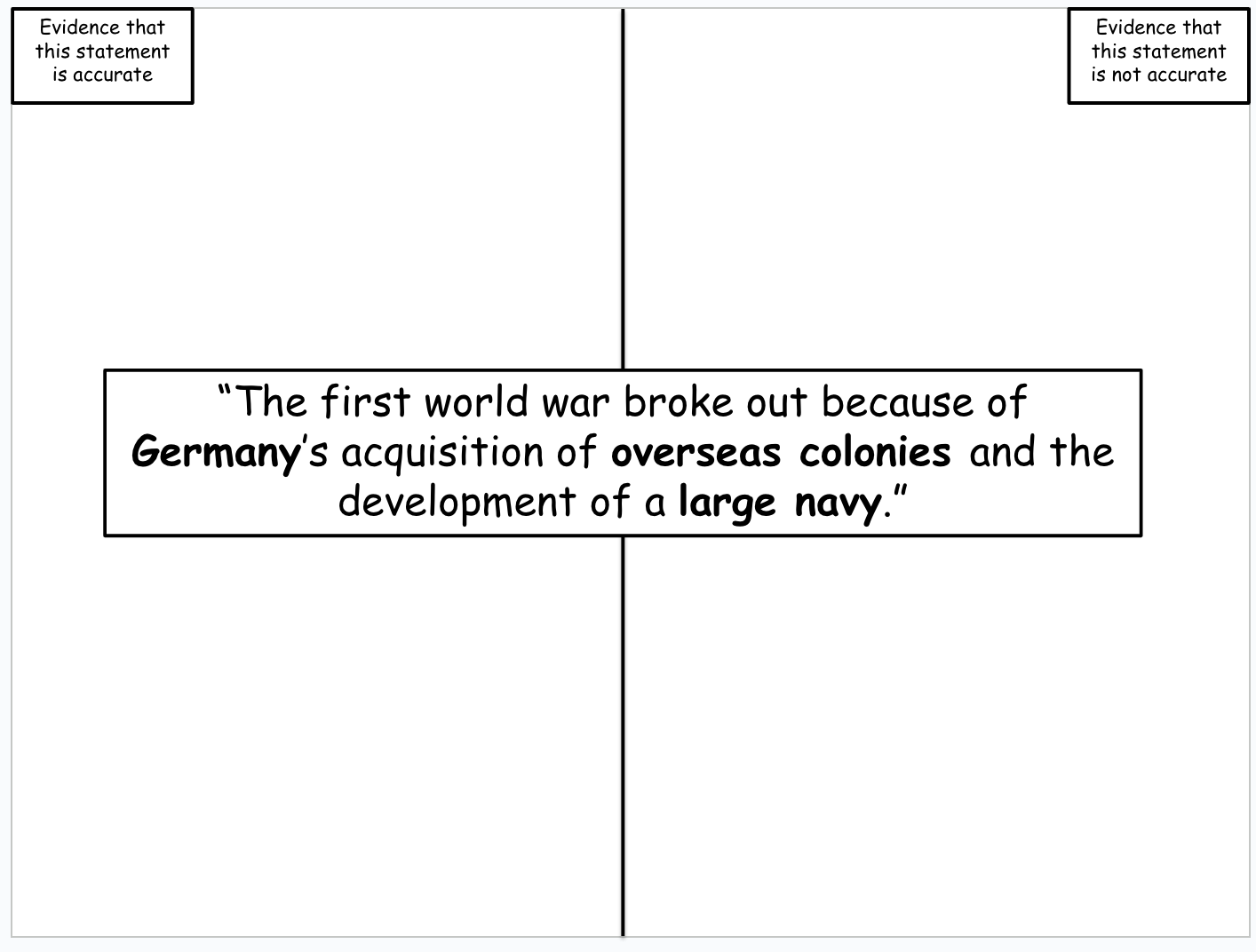
Dazzle Ships
When the First World War broke out in 1914 it became crucial to protect merchant navy ships carrying the food and military supplies to the front from enemy torpedoes.
Norman Wilkinson, an artists and Royal Navy volunteer came up with the idea of covering ships in bold shapes and violent contrasts of colour. The notion came to him in 1917 when serving as a Royal Navy volunteer, during which time he witnessed the siege that German U-boats had Britain's merchant ships under attack. It was a fierce blockade that was successfully cutting off much-needed supplies from abroad.
Wilkinson realised there was no camouflage that could conceal a ship - that had already been tried and failed - but he thought there might be one that could confuse the enemy. One that would buy a captain on a merchant ship enough time to identify a marauding U-boat and sink it before it sank him.
How about, he thought, a camouflage that didn't attempt invisibility, but one that did quite the opposite? One so eye-catching it would dazzle and disorientate. The Navy gave him the green light, and this is what he came up with.
The contrasting stripes, bold curves, and vivid spirals were devised to make it difficult for a U-boat commander to gauge the ship's direction of travel and speed, causing him to either dither long enough to give away his position, or miss his target when firing a torpedo.
Although there was no proof during WW1 that dazzle helped ships avoid U-boat attacks, crews reported feeling safer serving on board dazzle vessels.
Furthermore although Britain dropped the idea of dazzle ships shortly after the First World War, the US continued to use them in the Second World War.
Psychologists have recently found that dazzle ships do alter perceptions of speed, but this would not have made a difference to a WWI U-boat commander hunting slow merchant ships.
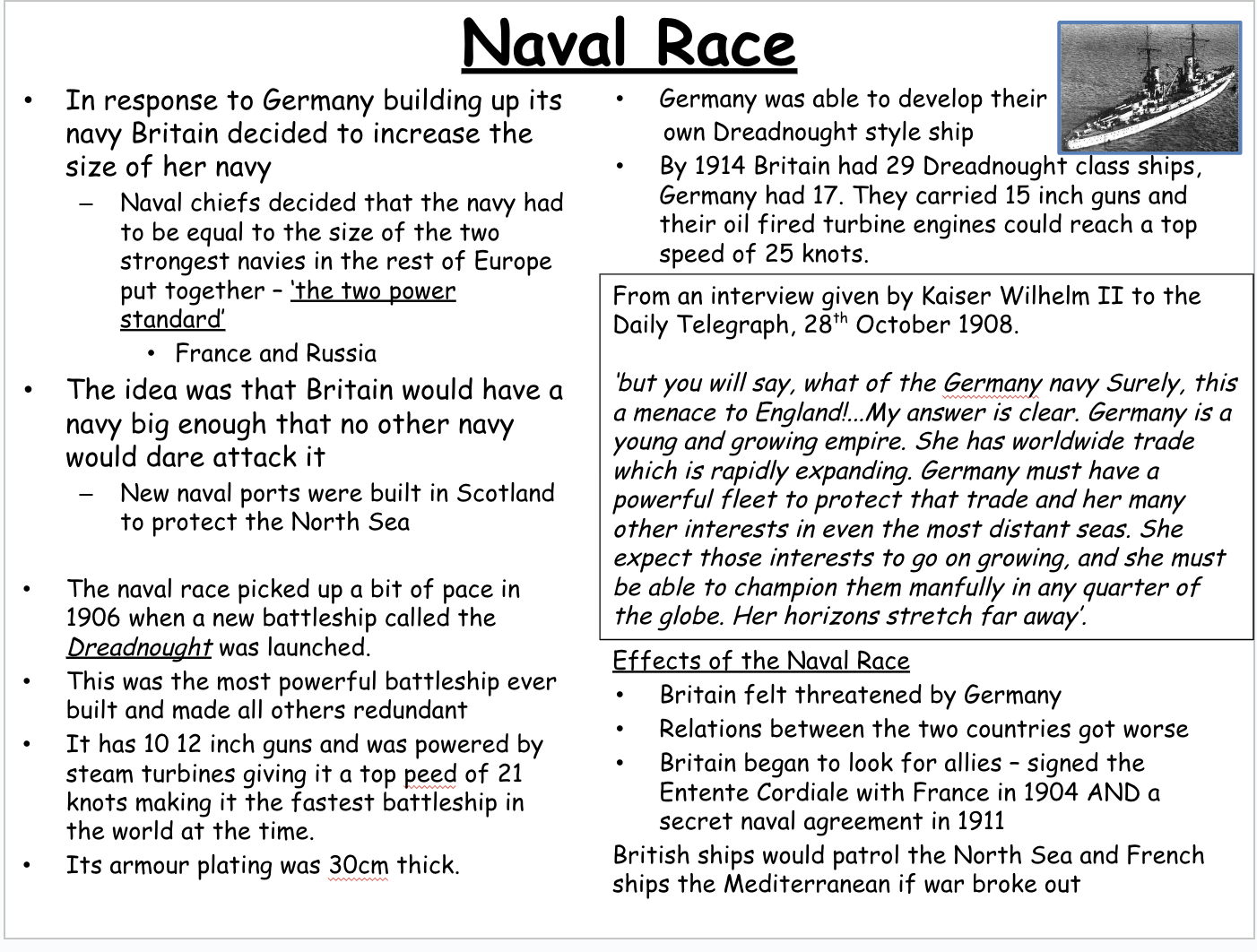
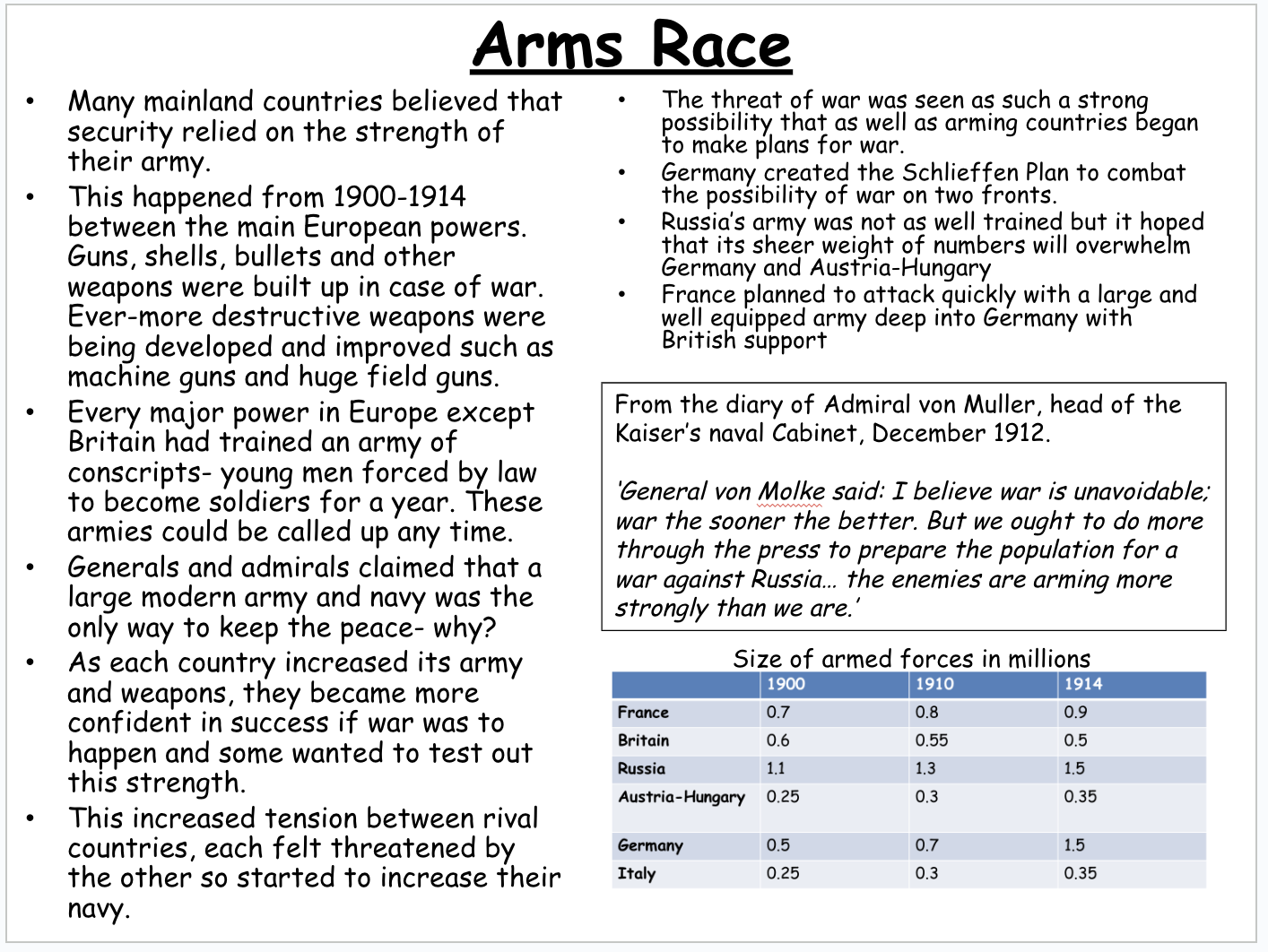
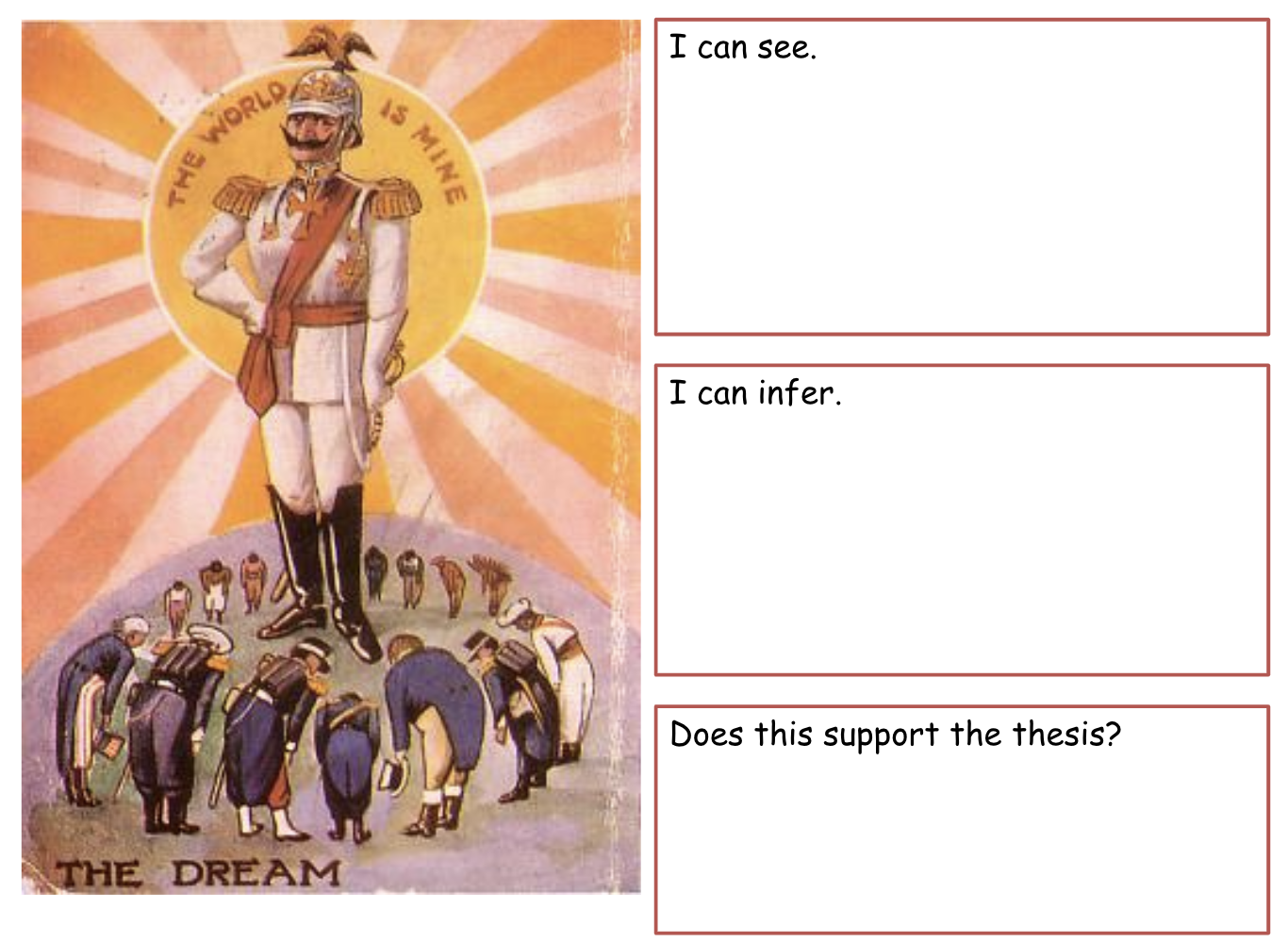
Learning Intentions:
To identify why countries wanted an empire.
To predict the impact of Germany’s desire to have a ‘place in the sun’.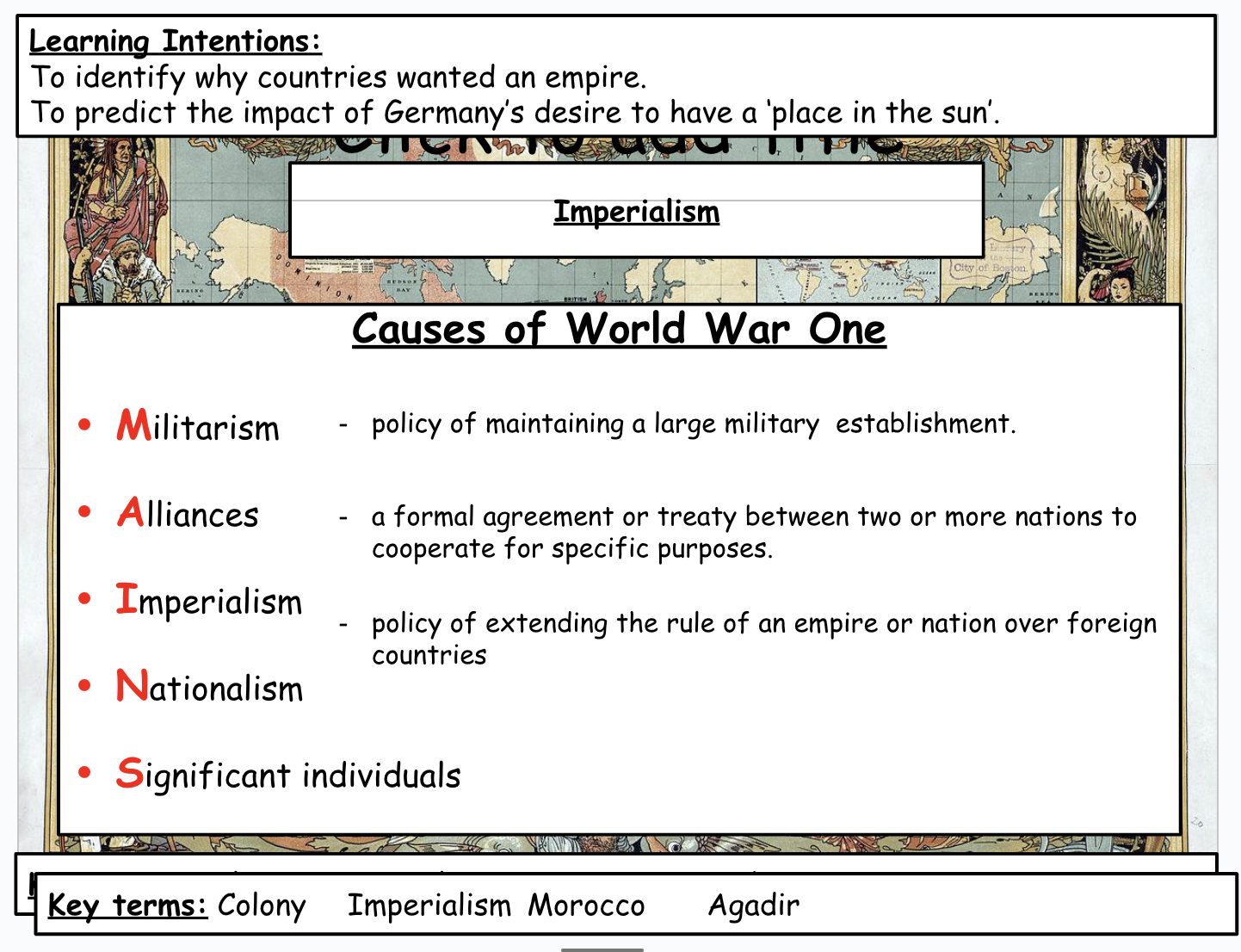
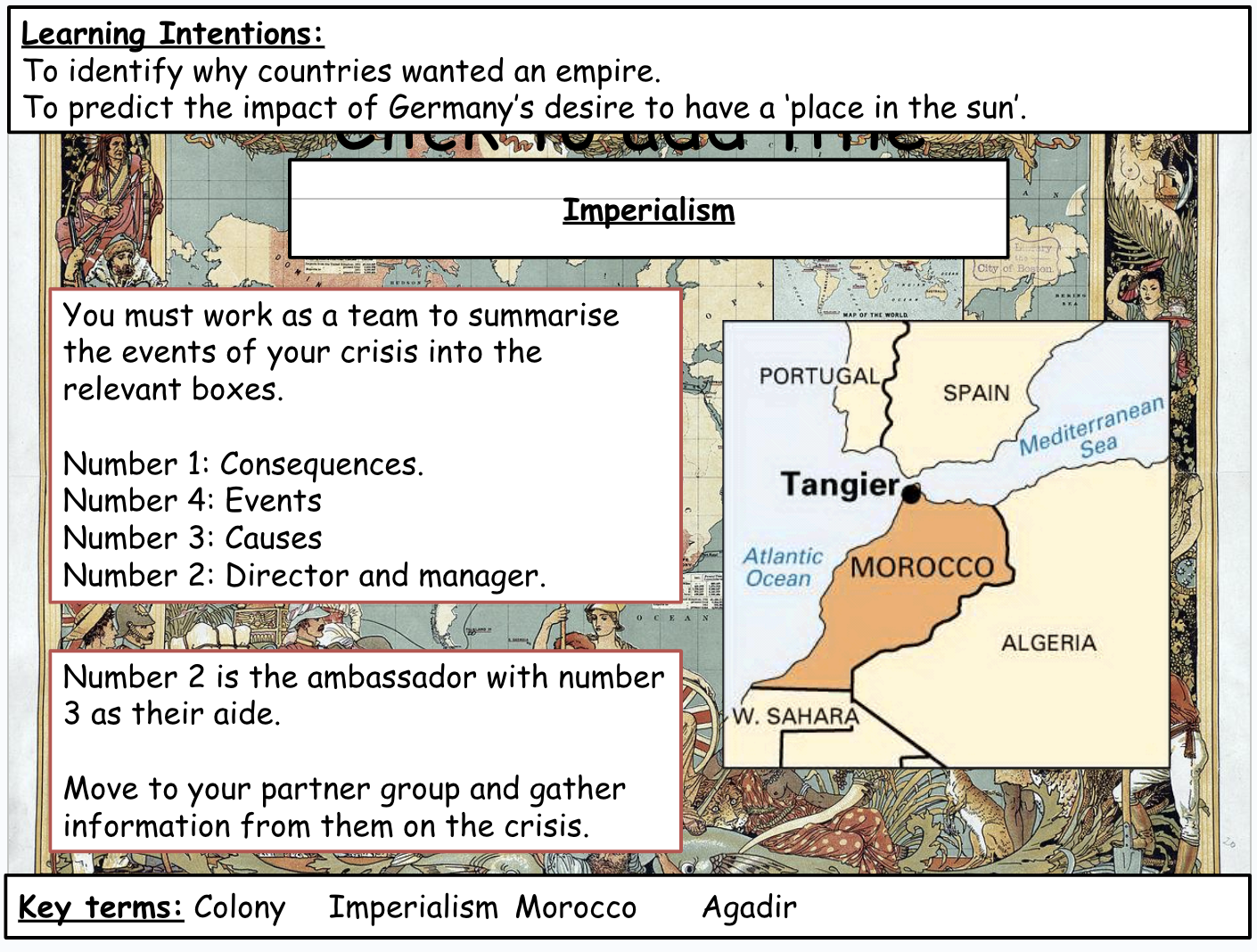
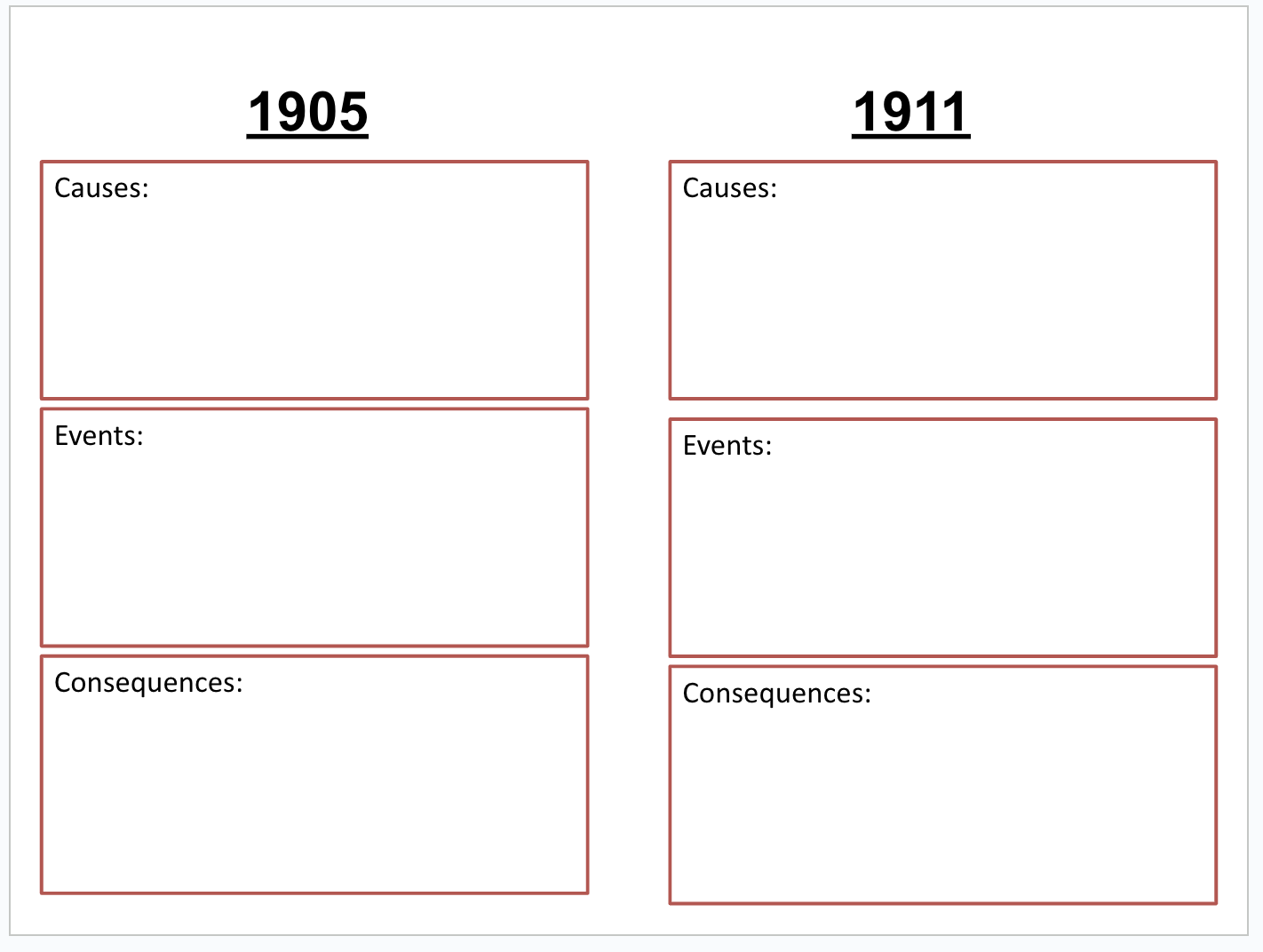
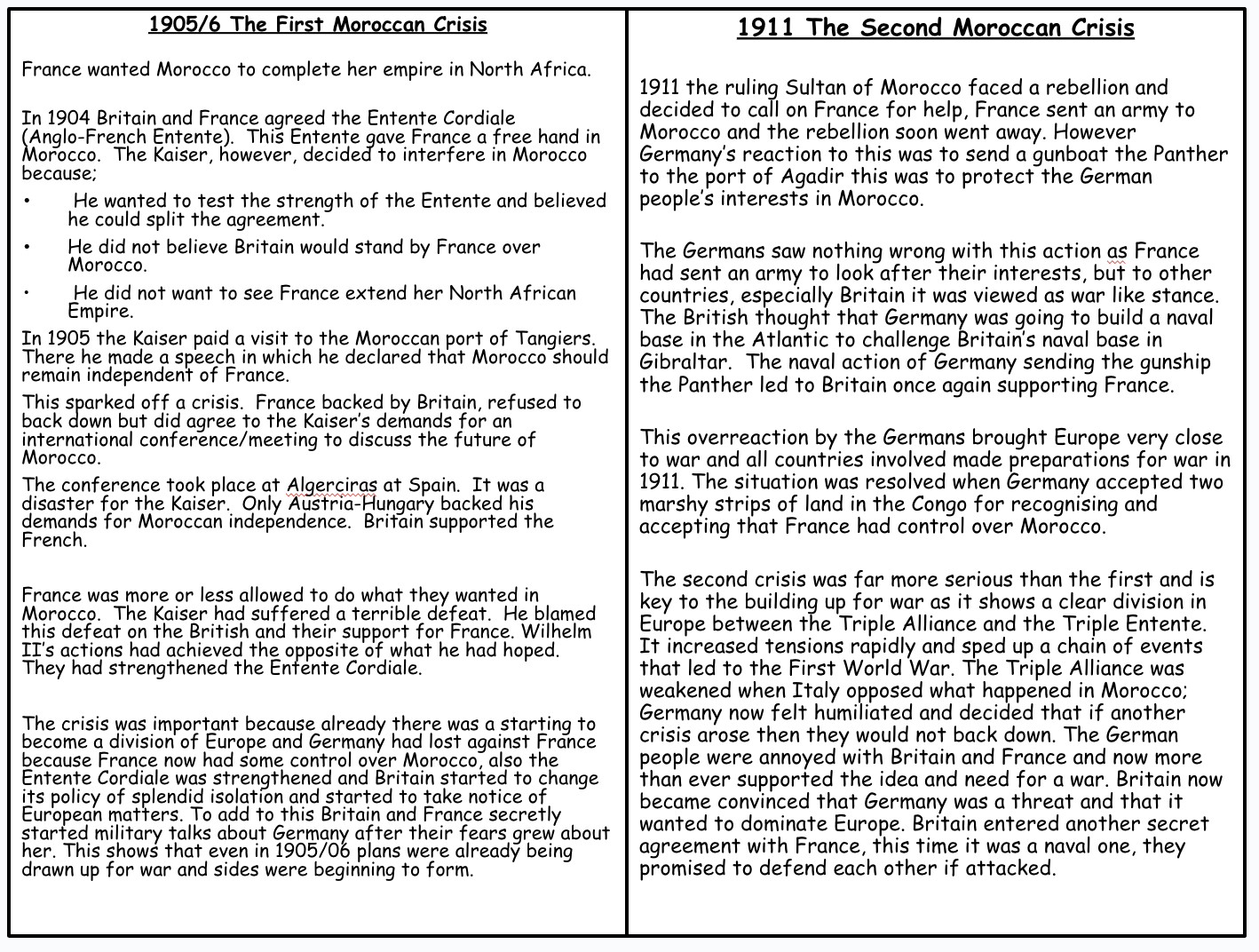
-
EXPLORE / TŪHURA learning intentions:
- We are EXPLORING how places reflect past interactions of people with the environment;
- We are EXPLORING causes and effects of events that have shaped the lives of a group of people;
- We are EXPLORING how and why people experience events in different ways.
Lesson 1
Starter
• Brainstorm as a class what students already know about the use of animals in World War One.
https://online.mhjc.school.nz/pluginfile.php/216987/course/section/489669/10C1%20Padlet.pdf
TO DO
1. Compile a list of all the different kinds of animals used by both sides in the war.
2. For each animal, make a list of all the different kinds of activities they performed.
3. Study sources 1 - 4 and comment on where the animals used in the war came from.
4. Use Resource sheet 4: Photos (5a, 5b and 5c) to report on how these animals were trained for their part in the war.
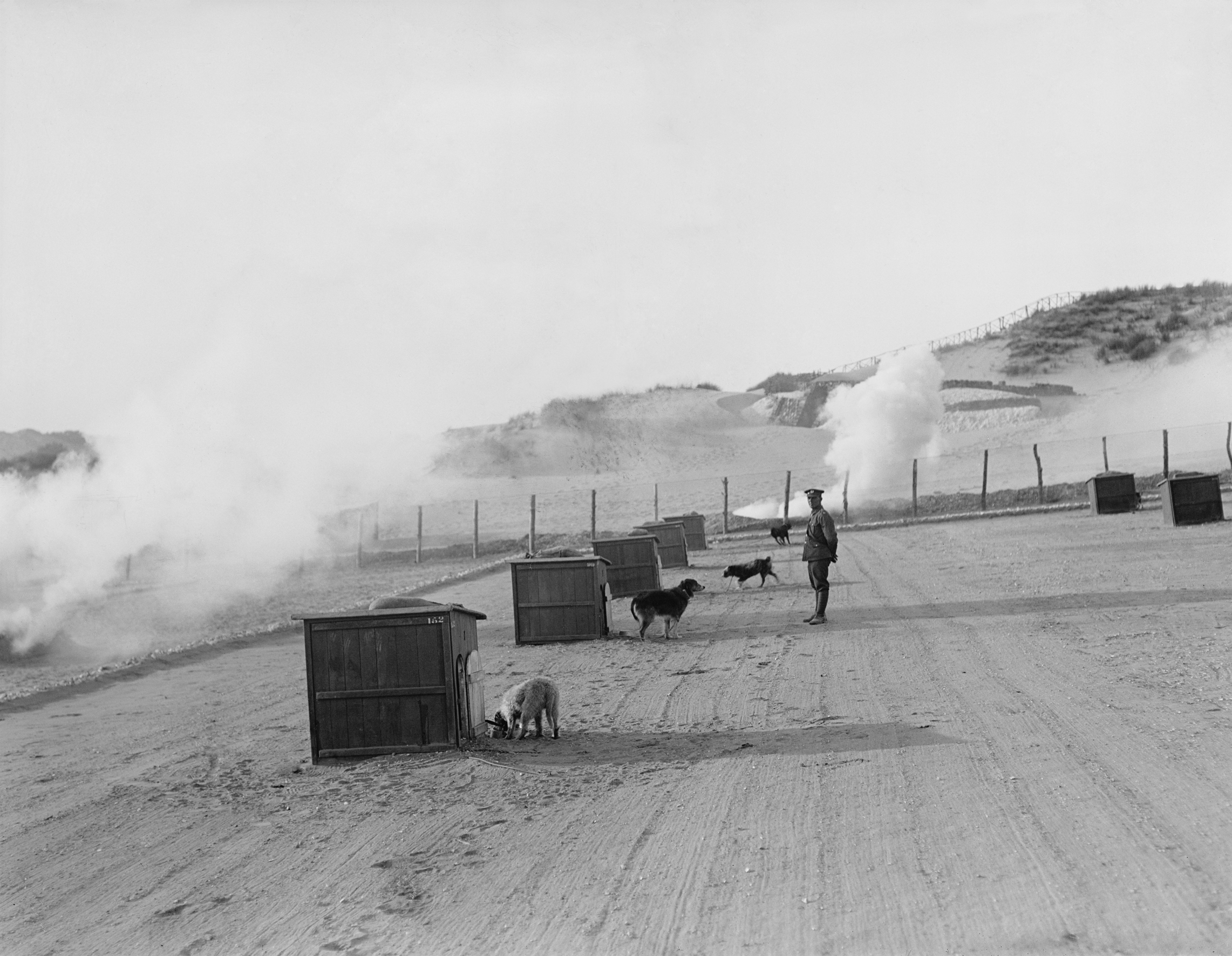
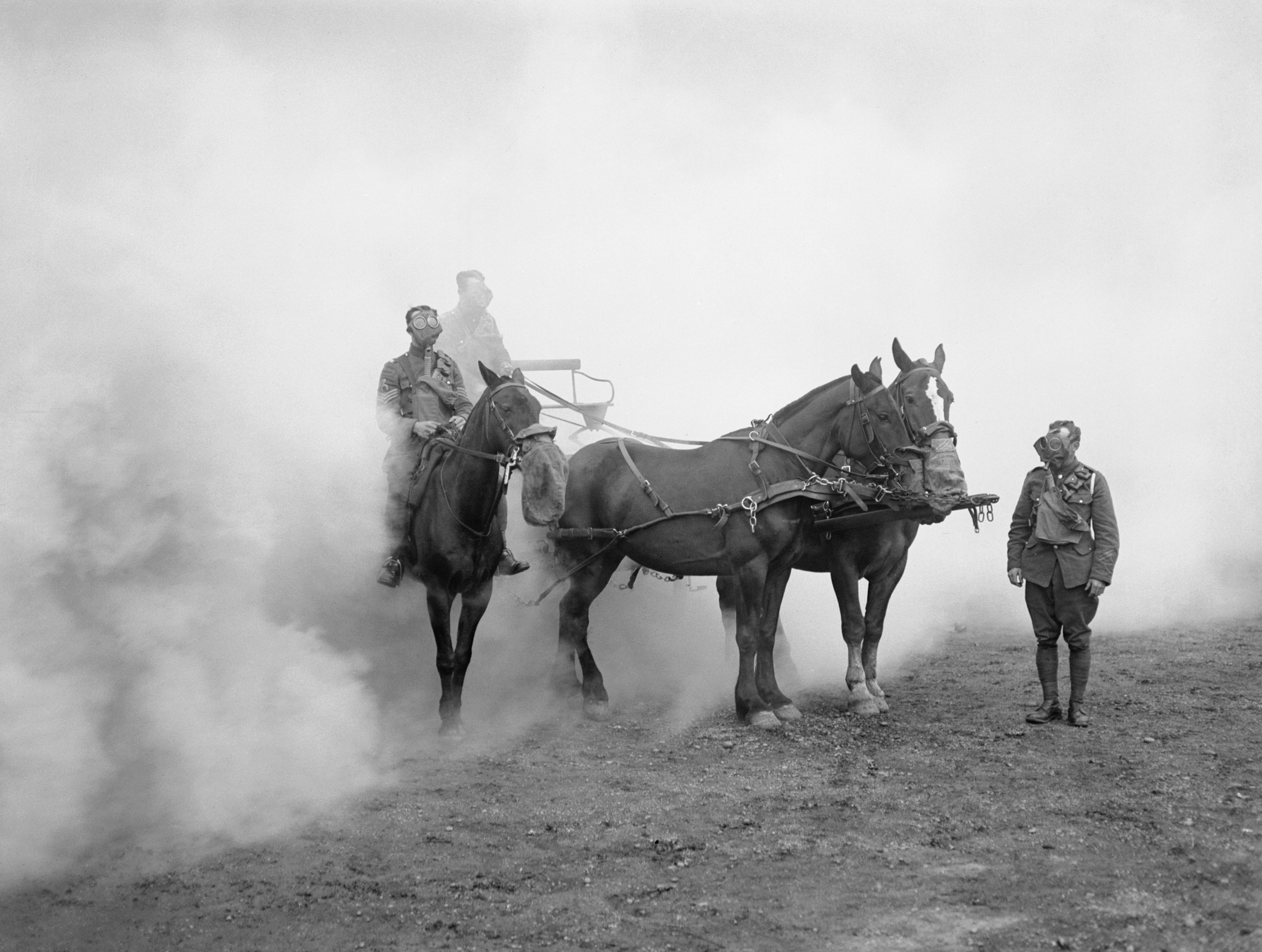
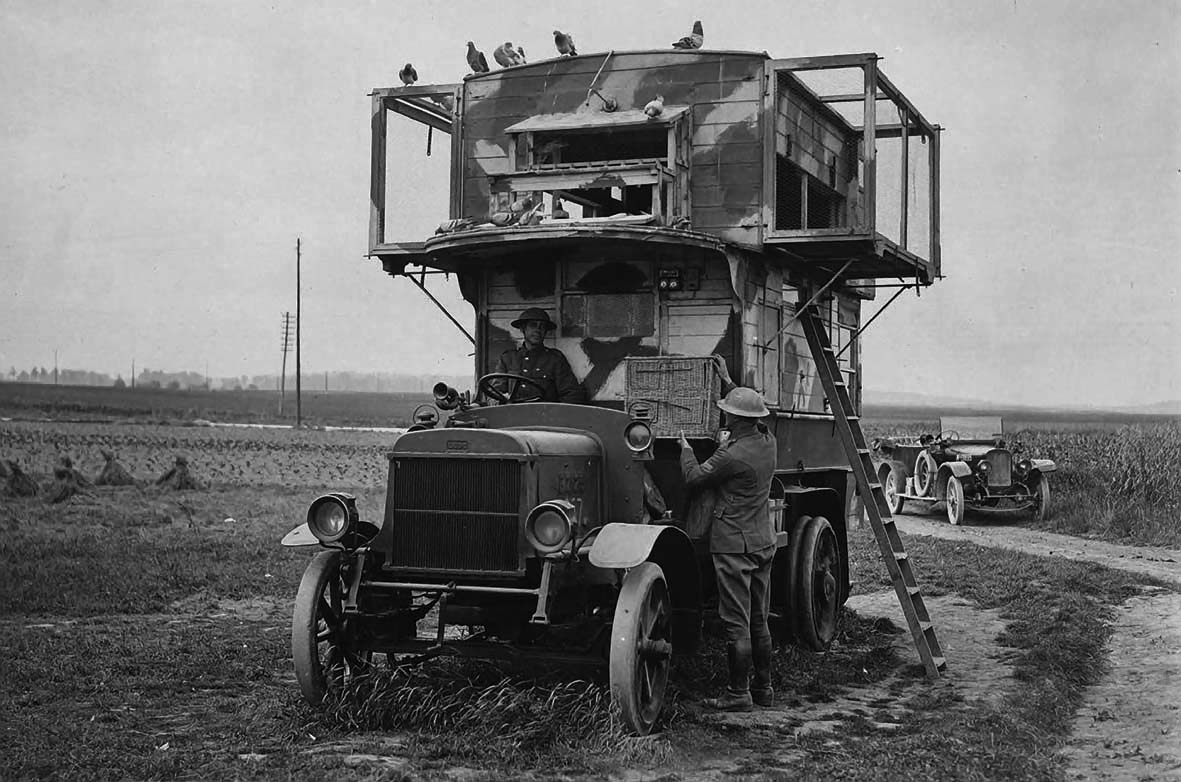
Lesson 2
Starter
Complete the image of the paw print and questions onto the whiteboard and invite students to come and write their responses on the board with their name/initials next to them.
• Question:
Which animal was most important to the armies? Why?
Main Event - Pub Quiz
1. Quiz
Teams of 4 - 6 and ask them to nominate a team captain and scribe and devise a team name, which must be written on their quiz paper (Resource 4).
You will be quizzed on the information from the factsheet(s) on animals in World War One.
2. Report (15 minutes)
• Ask students to use the factsheets to list the animals involved in the war in order of their importance to the armies and next to each give the reasons why.
Lesson 3
What was the war like for horses during WWI?
Starter (5 minutes)
• Display Alfred Munning’s painting ‘Charge of Flowerdew’s Squadron’ (Resource 2a), and/or Paul Nash’s painting ‘The Mule Track’ (Resource 2b), on the white board.
What the painting tells us about the use of horses during World War One.
How useful the painting is as a source of evidence.
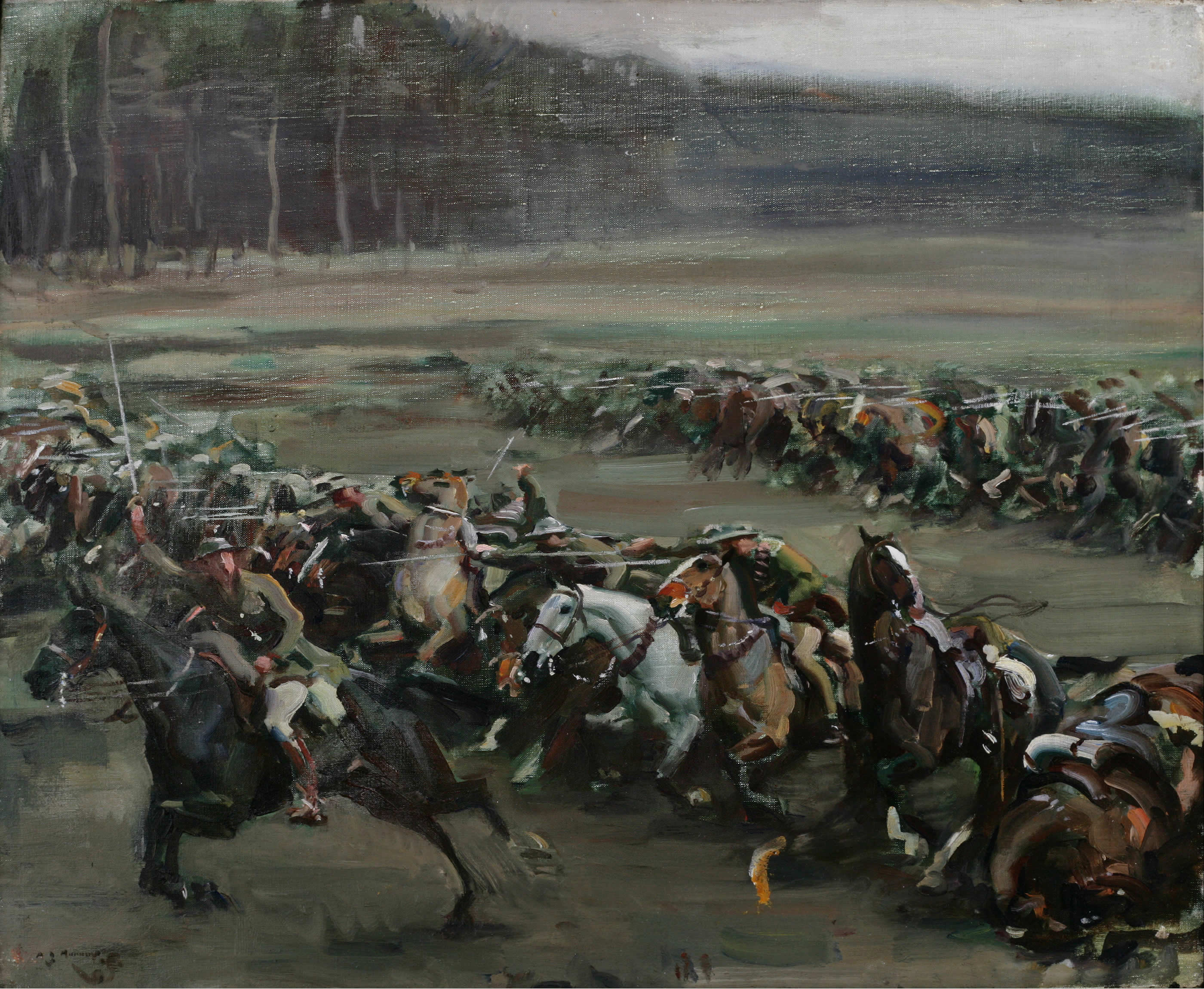
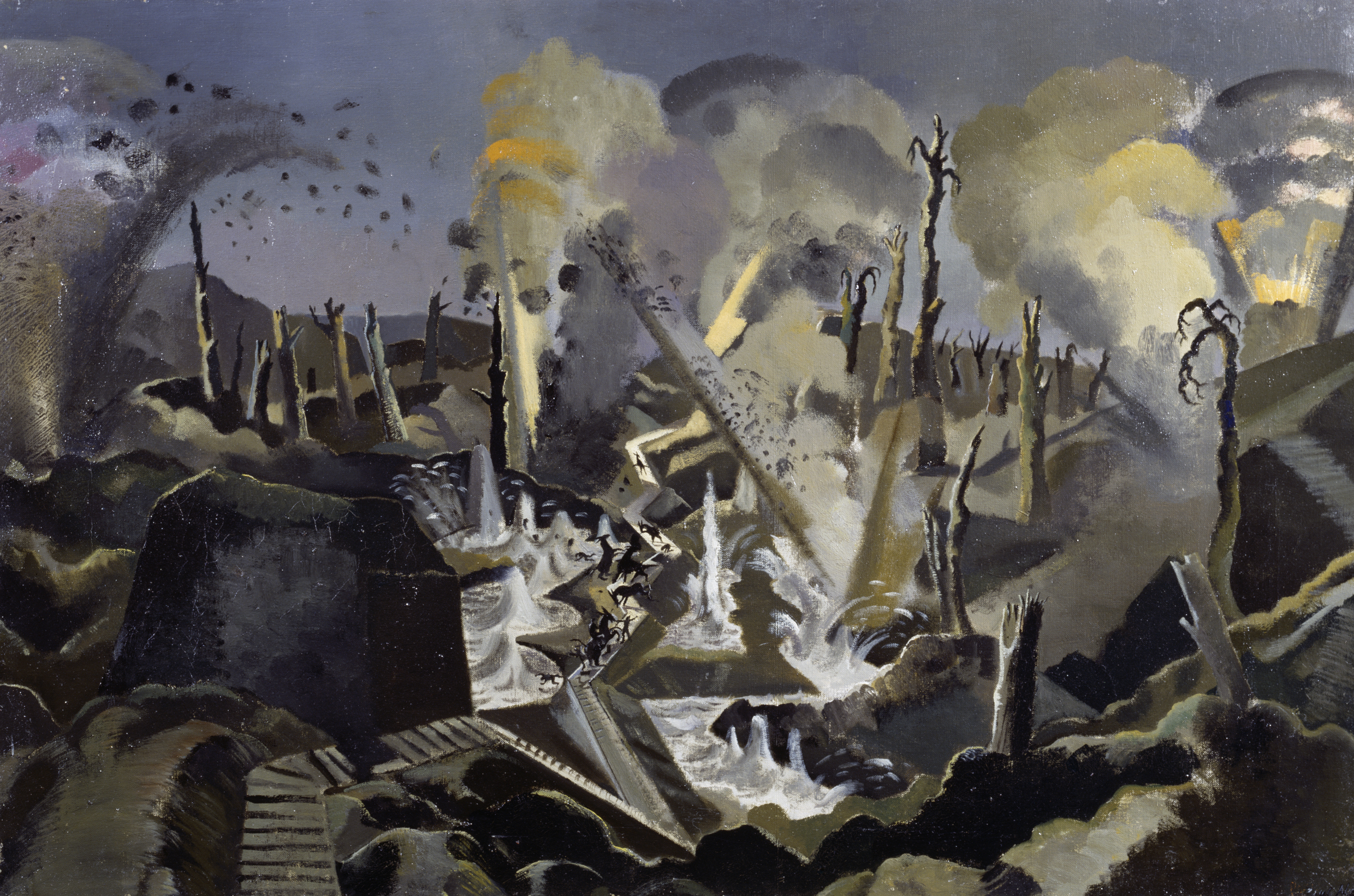
Main (50 minutes)
• Answer the question:
What was the war like for horses during World War One?
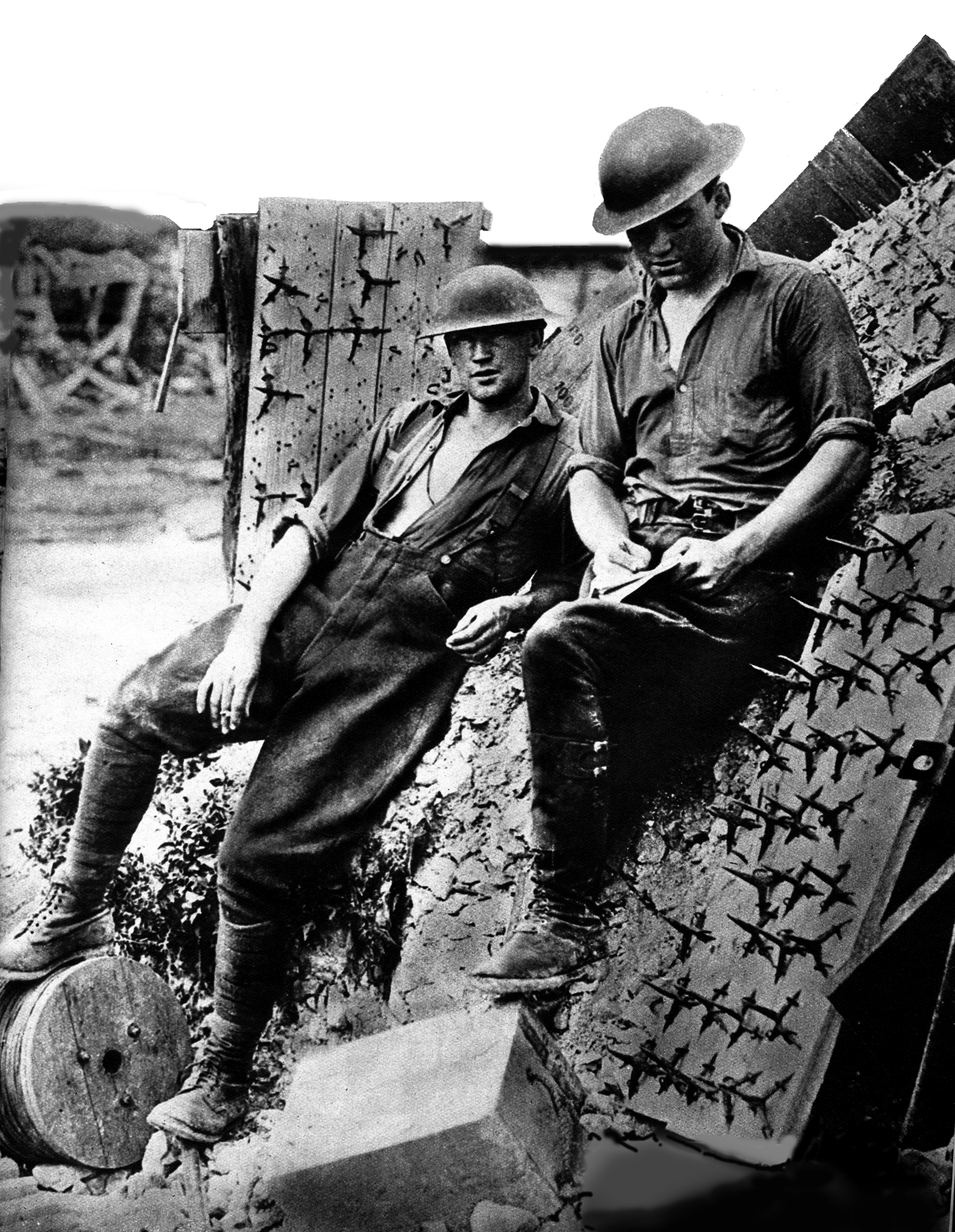
Source 2B
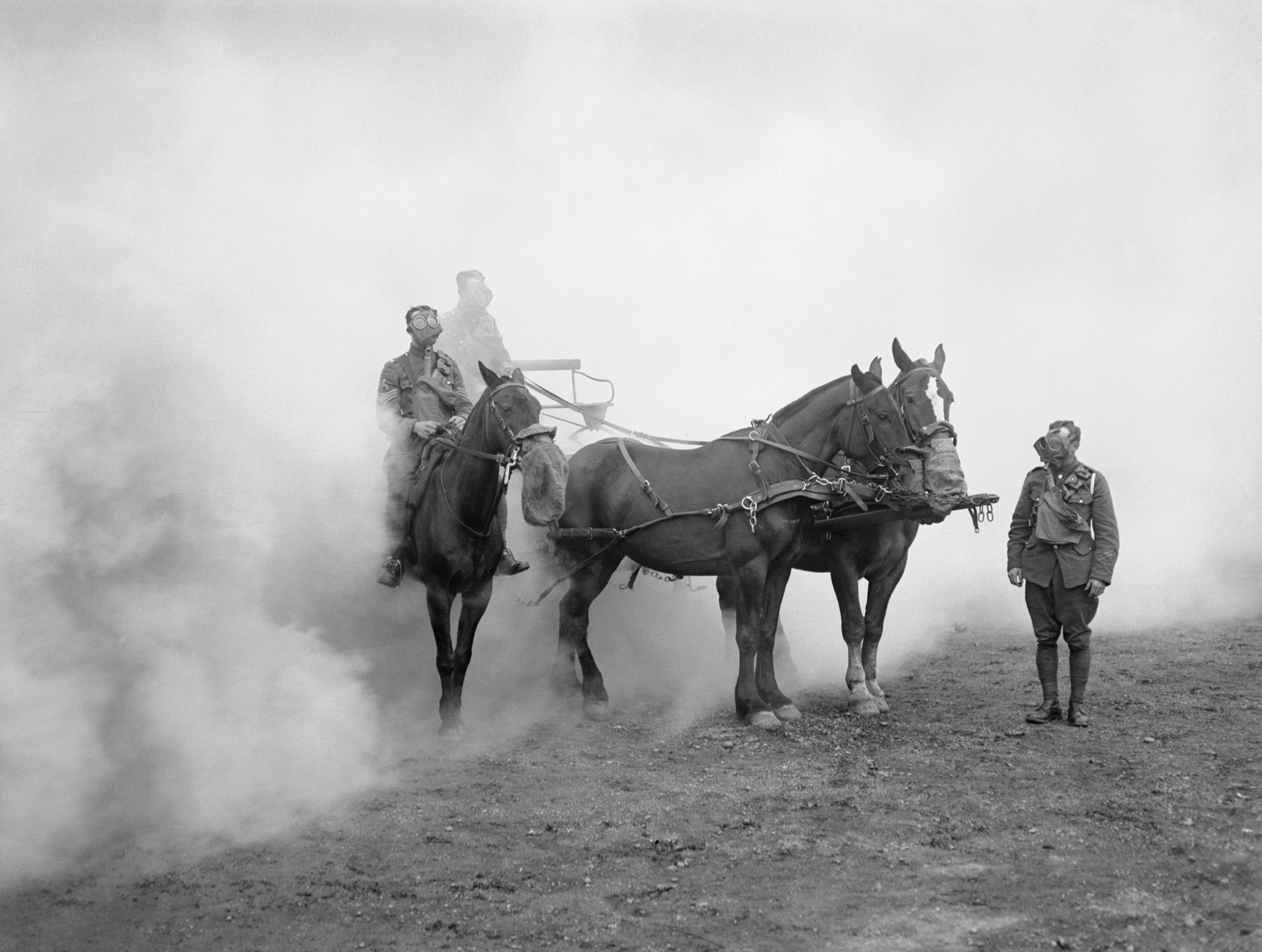
Source 2C
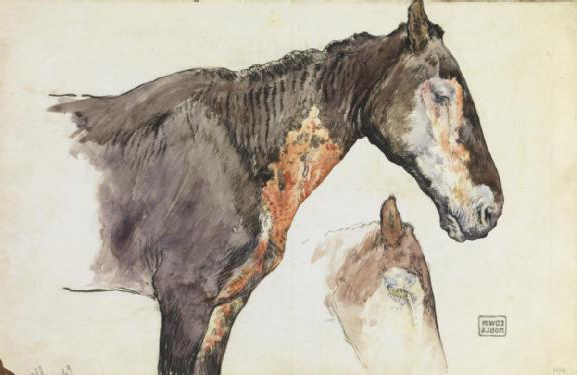
Source 2D

Source 2E
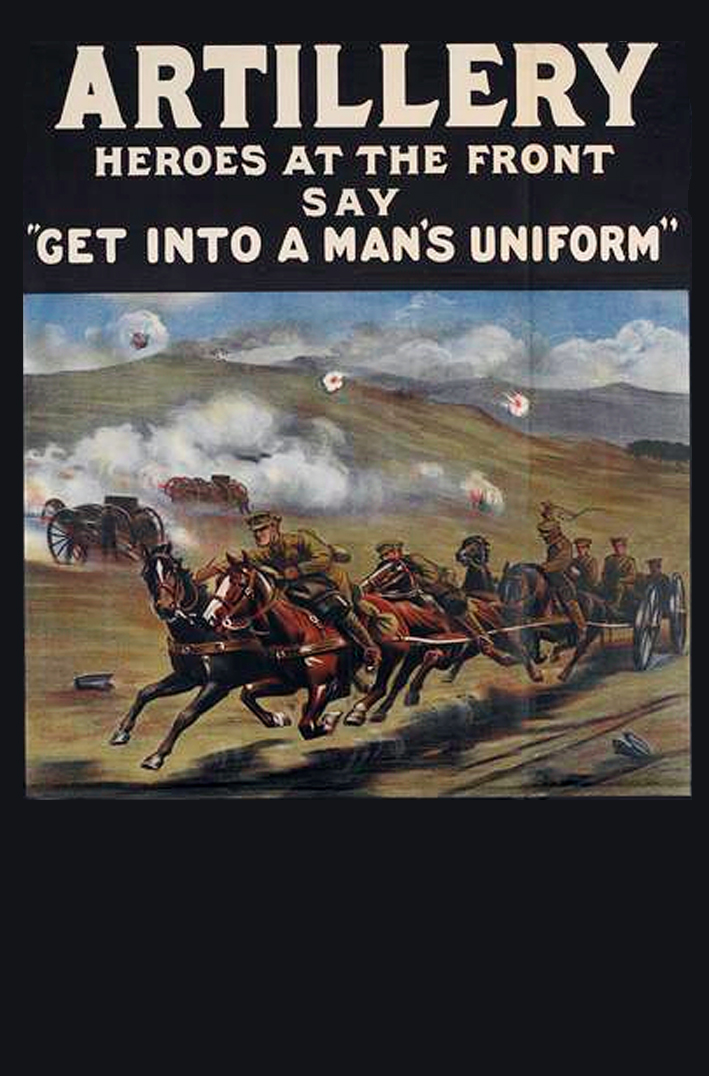
Source 2F
Sort them into primary and secondary sources; more reliable and less reliable sources; useful and less useful sources; or any other grouping that helps to answer the question. Decide which evidence they would give most weight to, and why.
• Do you have enough evidence to answer the question. What else might they need to know? Where might they find this? Do they have any information about other fronts, not just the Western Front in France and Belgium?
Write an argument with pros and cons on the treatments of horses in the war, use evidence in sources above and discuss the question.
-
EXPLORE / TŪHURA learning intentions:
- We are EXPLORING how places reflect past interactions of people with the environment;
- We are EXPLORING causes and effects of events that have shaped the lives of a group of people;
- We are EXPLORING how and why people experience events in different ways.
Animals in WarLesson 4Review Slide 2 of Lesson 2 with the image of Field Marshal Sir Douglas Haig and his quotation."The power of the army as a striking weapon depends on its mobility. Mobility is largely dependent on the
suitability and fitness of animals for work."
Discuss in pairs what he meant by this statement. (Many generals thought that horses
and cavalry would play a decisive role in the conflict as they had done in the past. There were few
motorised vehicles and so armies relied on horses to move supplies and equipment.)Source Evaluation1) Use sources to identify changes in tactics and technology in WWI:
Working in pairs, to study the sources 2 - 5 and use the evidence they provide to answers these questions:
• Why was the cavalry not able to play a decisive role on the Western Front in WWI?
• What happened when the cavalry were sent into battle? Why?
• From the evidence you have here, in what ways did the role of horses change between 1914 and
1918?
• Was it for the better or worse for the soldiers and/or the horses?
2) Using the evidence, propose a hypothesis for ‘The First World War was a period of change for the role of horses in war’Present hypotheses to the class.Homework/extension
a) Write up your hypothesis in report form, citing evidenceorb) Produce a PowerPoint making the case for your hypothesis. -
EXPLORE / TŪHURA learning intentions:
- We are EXPLORING how places reflect past interactions of people with the environment
- We are EXPLORING causes and effects of events that have shaped the lives of a group of people;
- We are EXPLORING how and why people experience events in different ways.
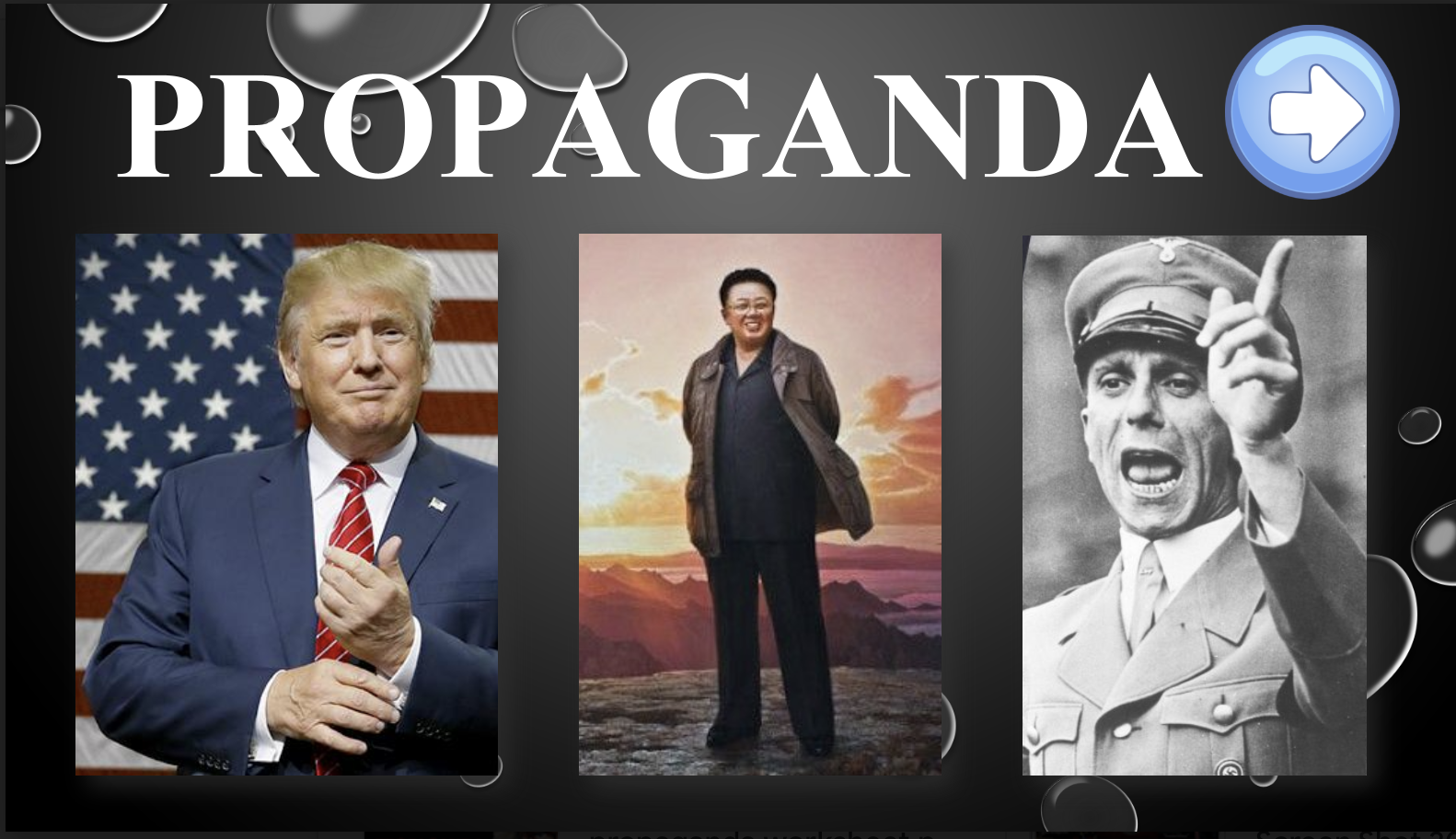
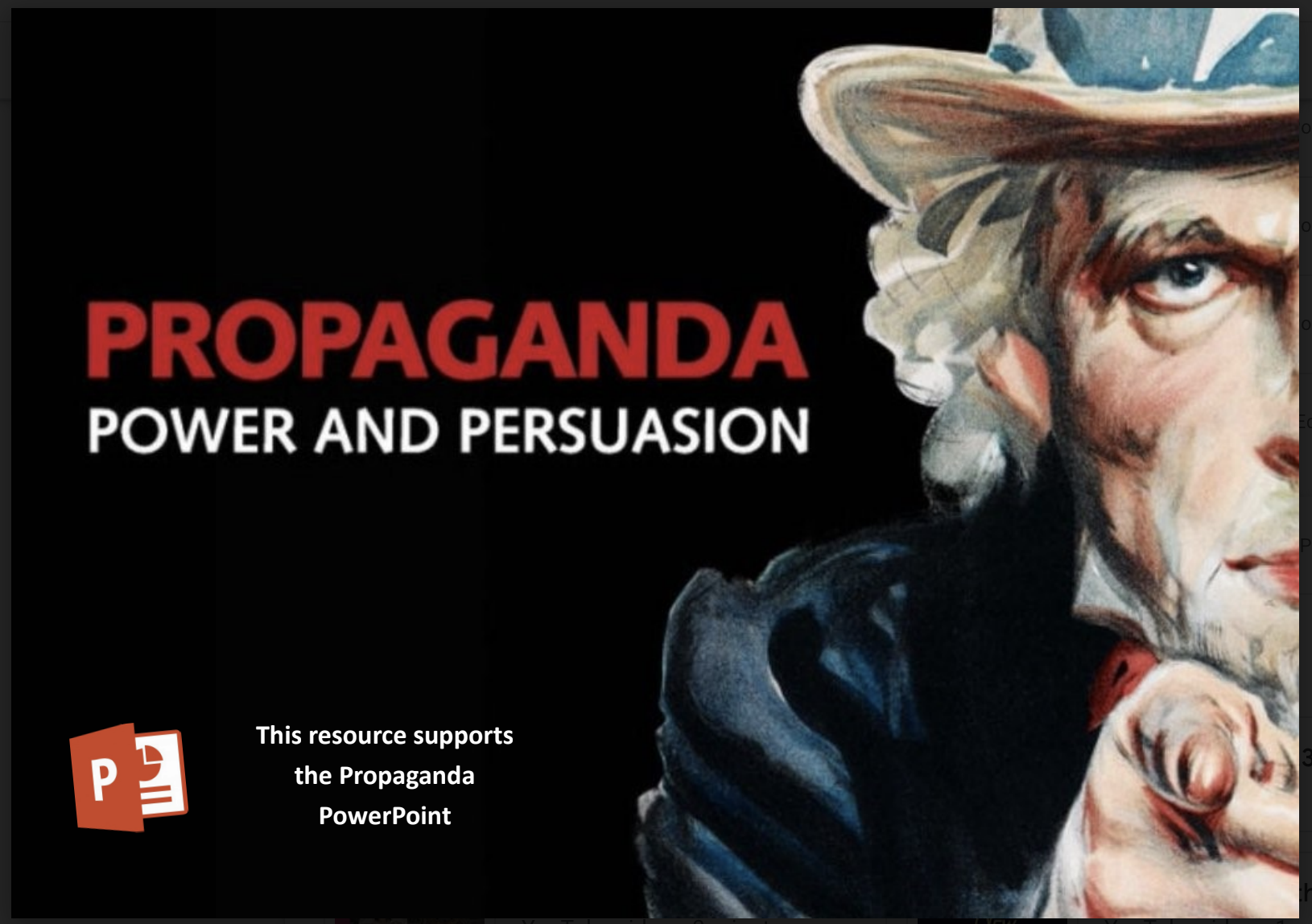
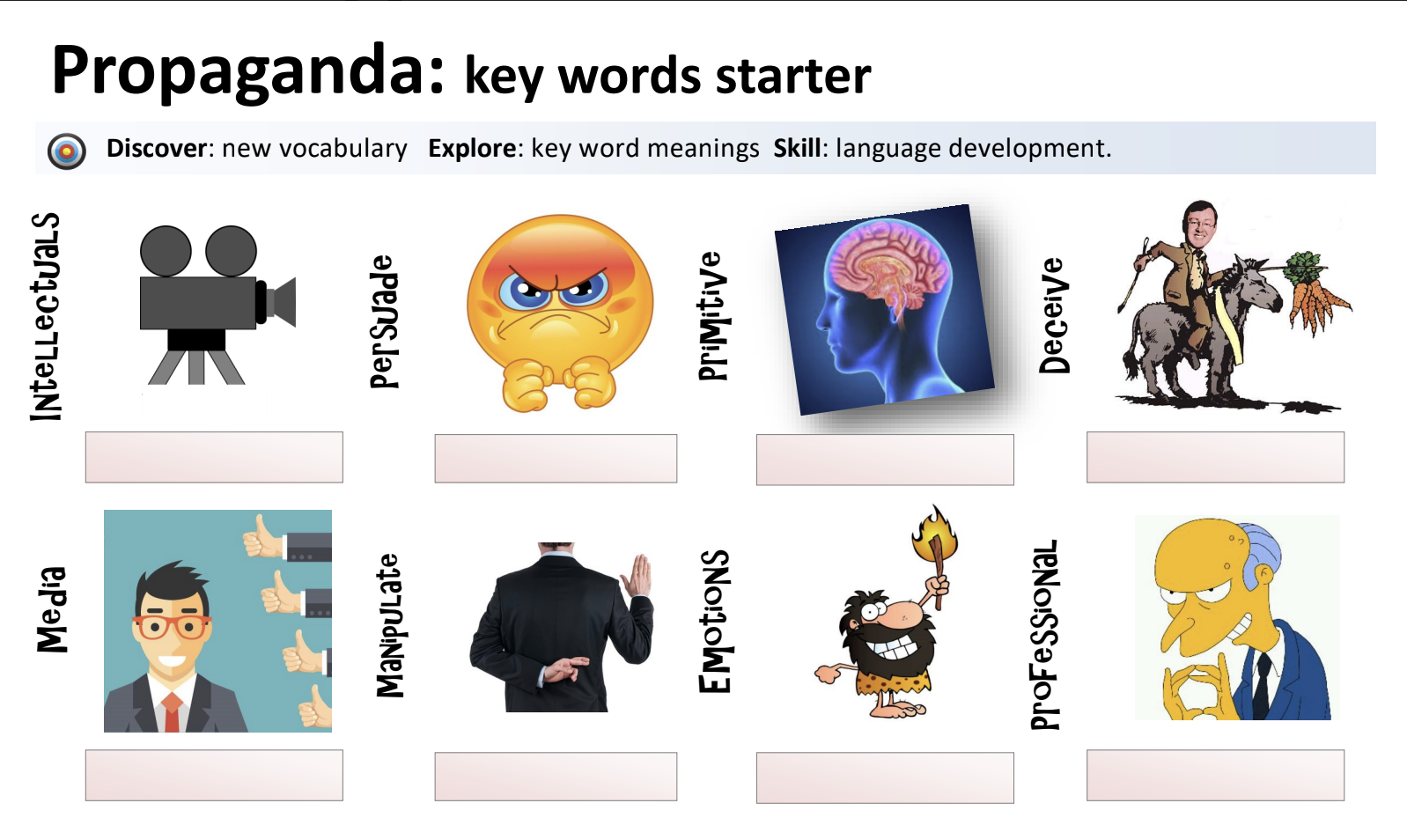
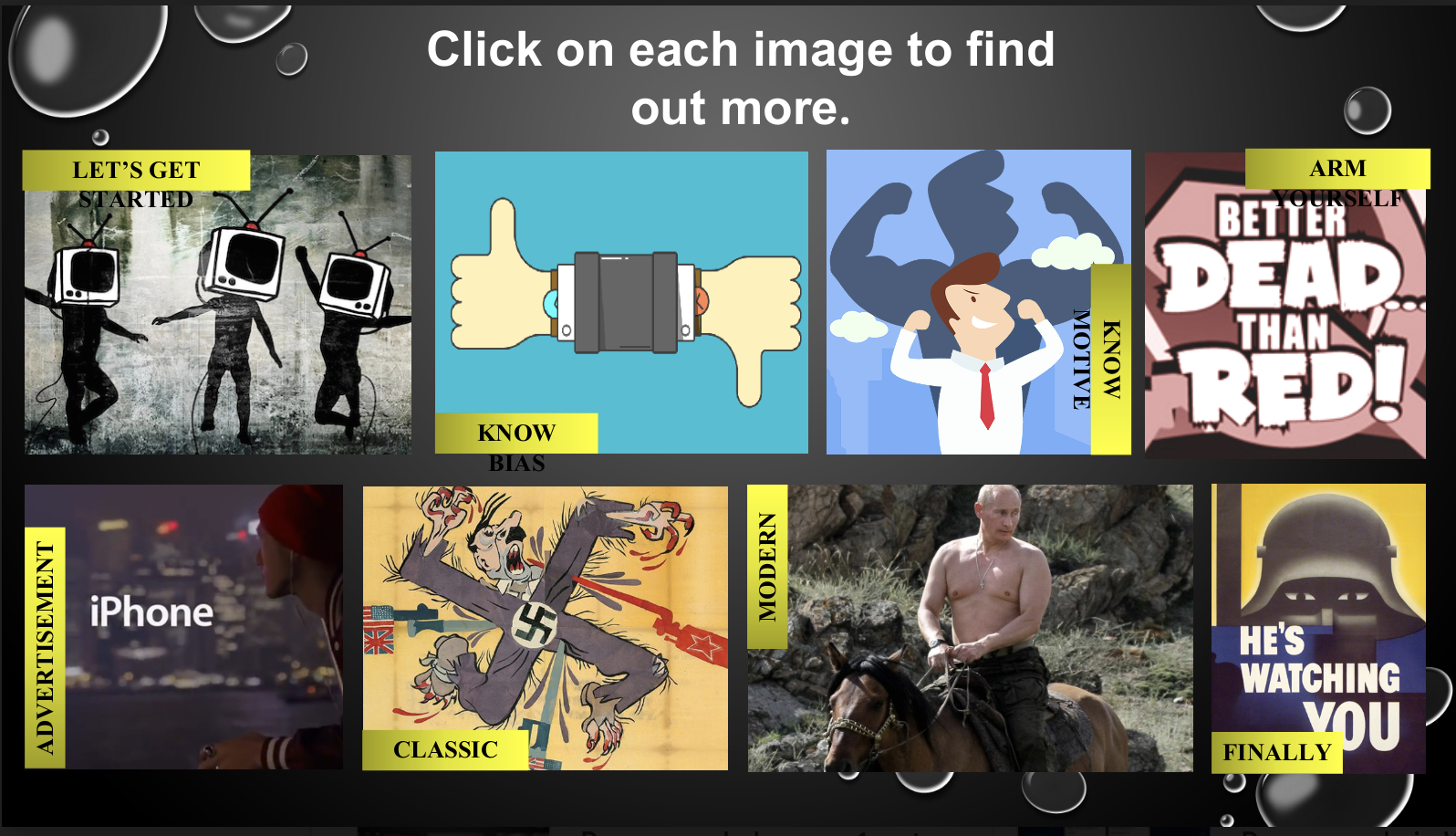
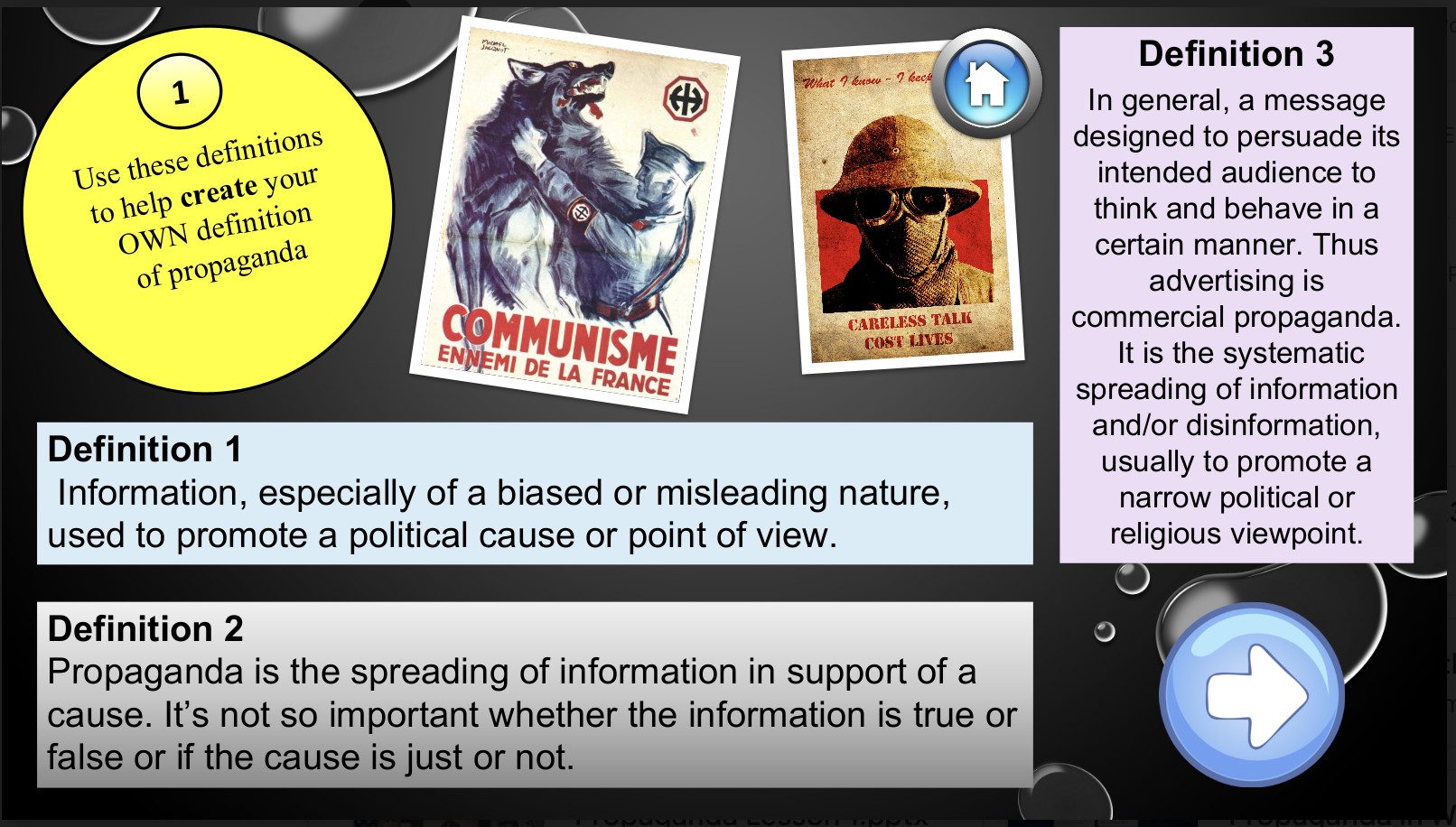
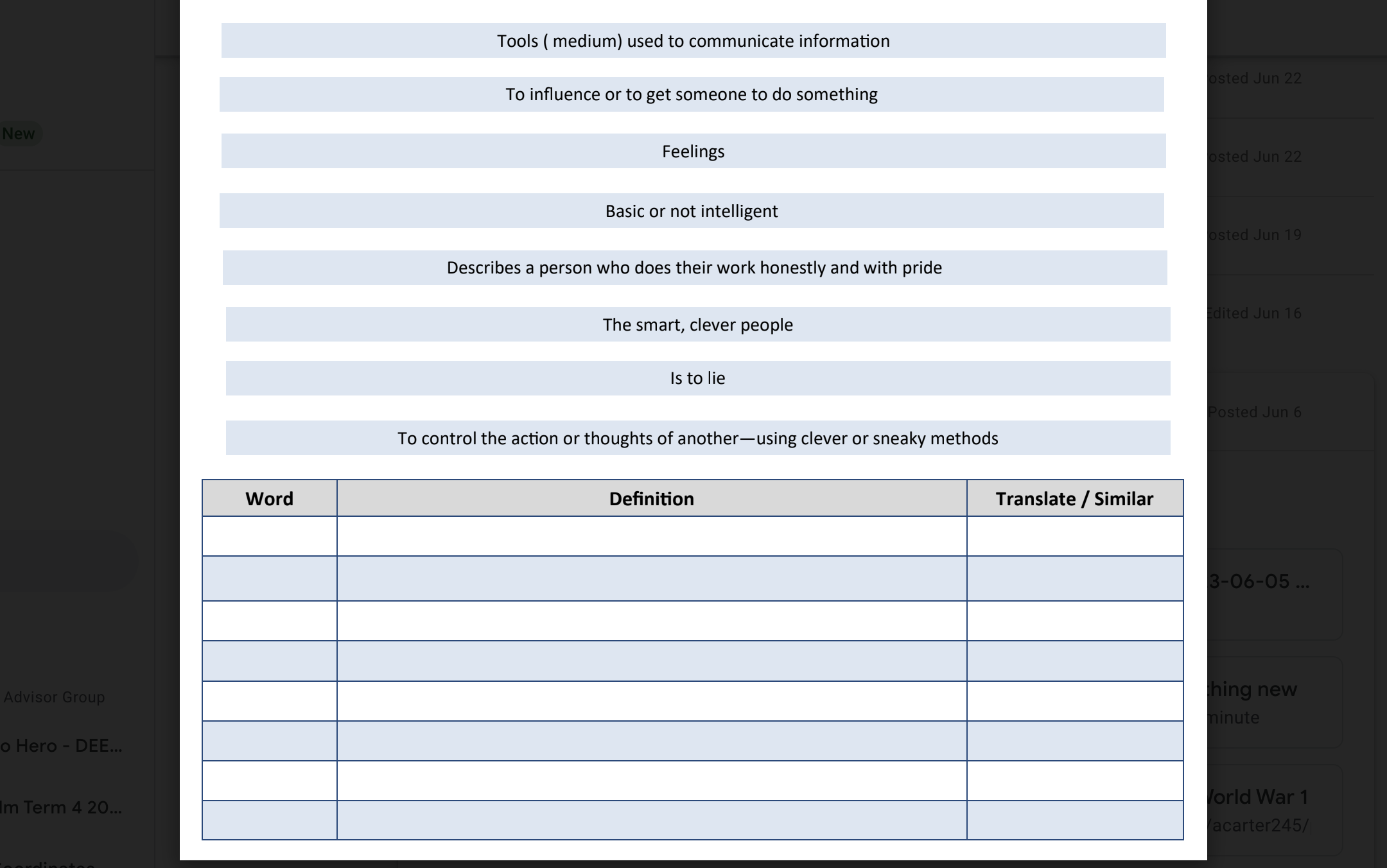
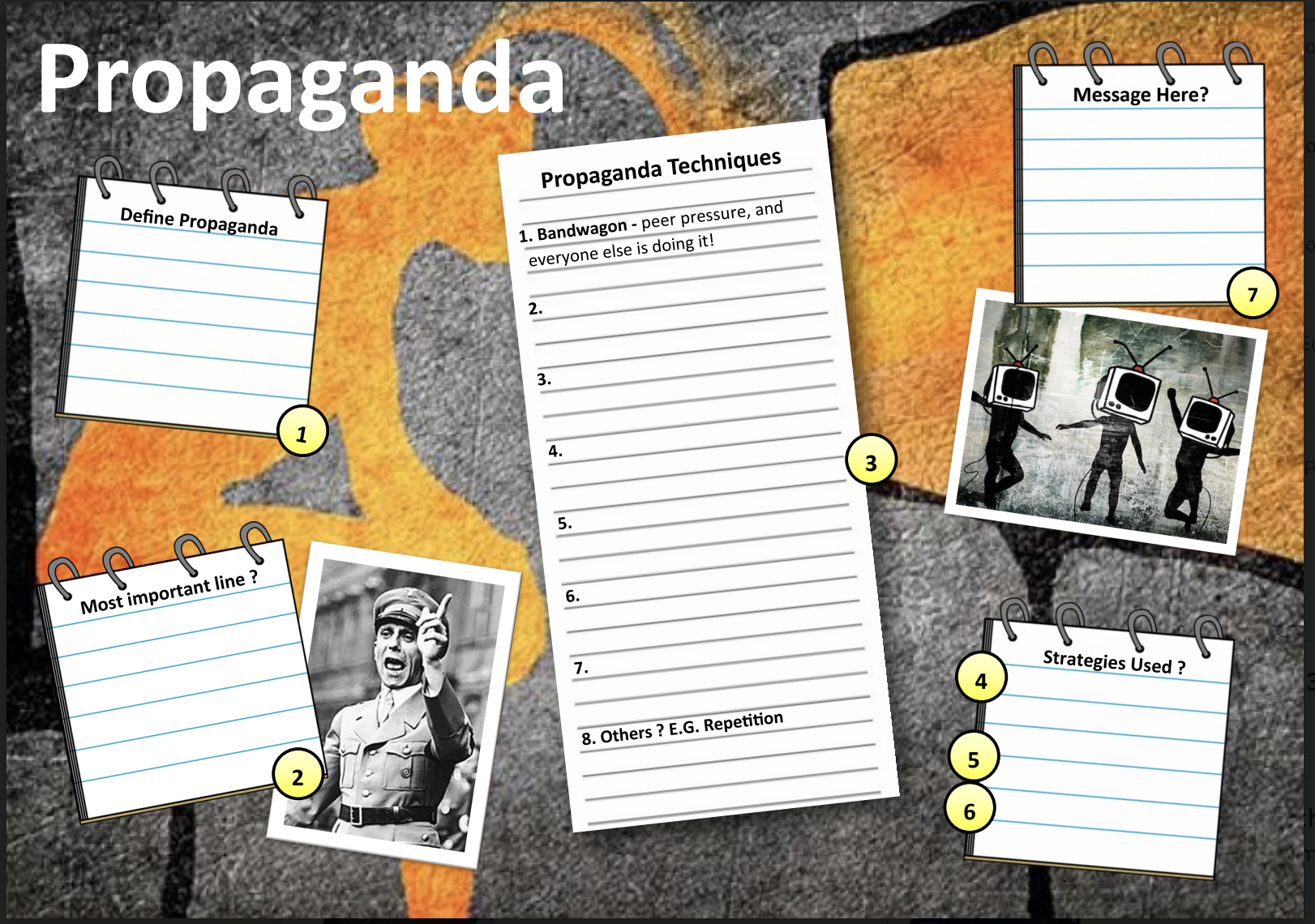
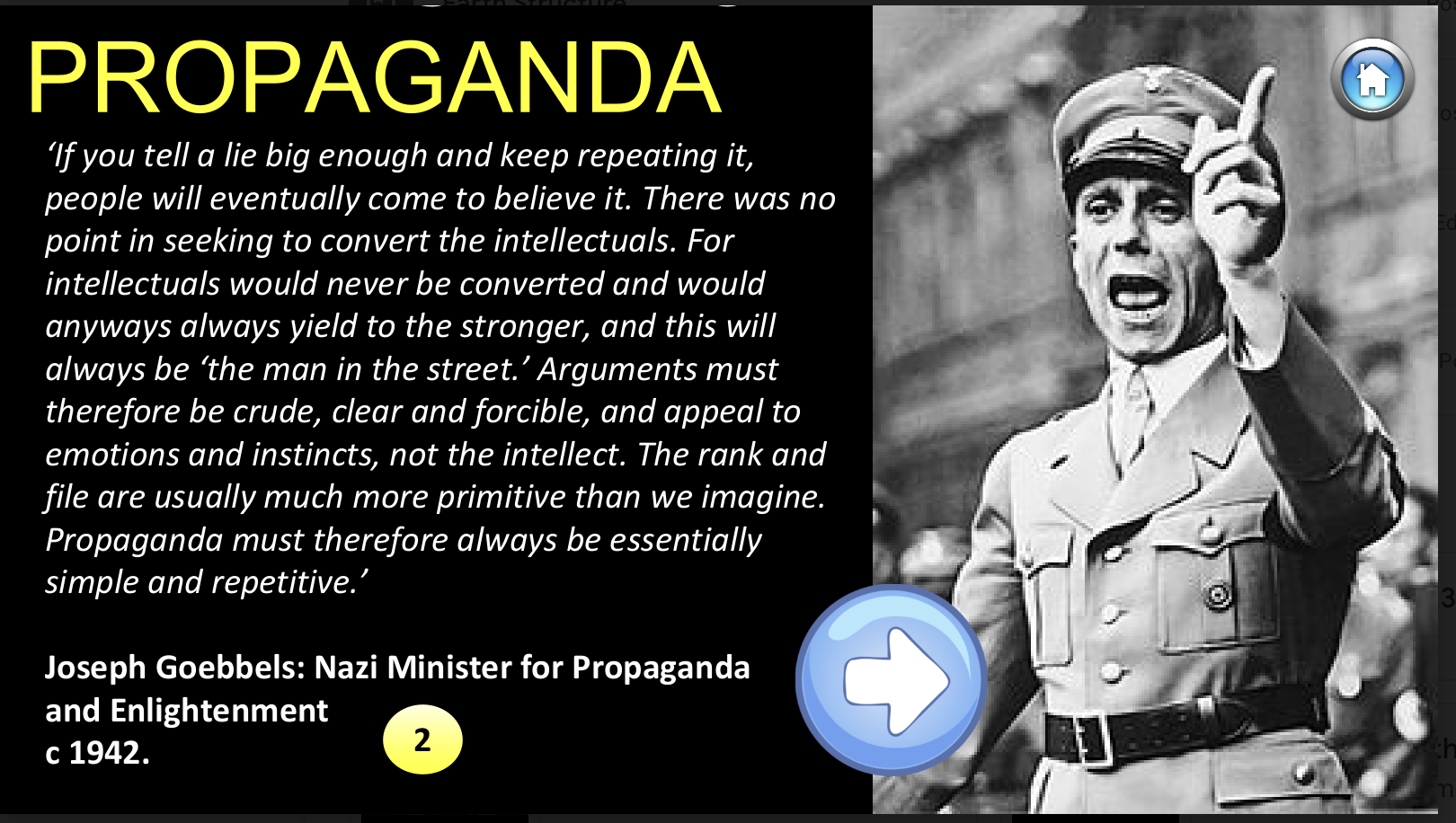

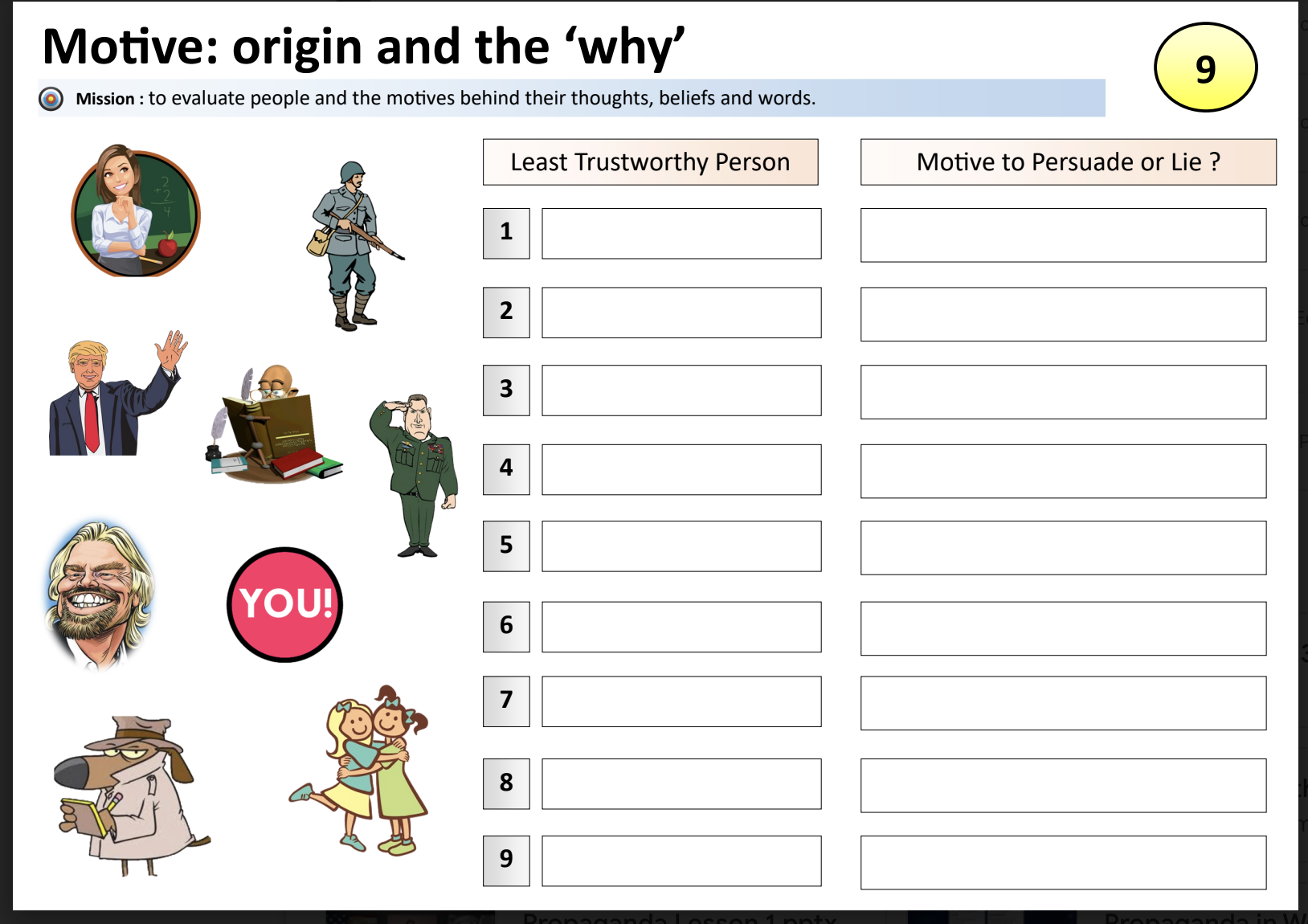
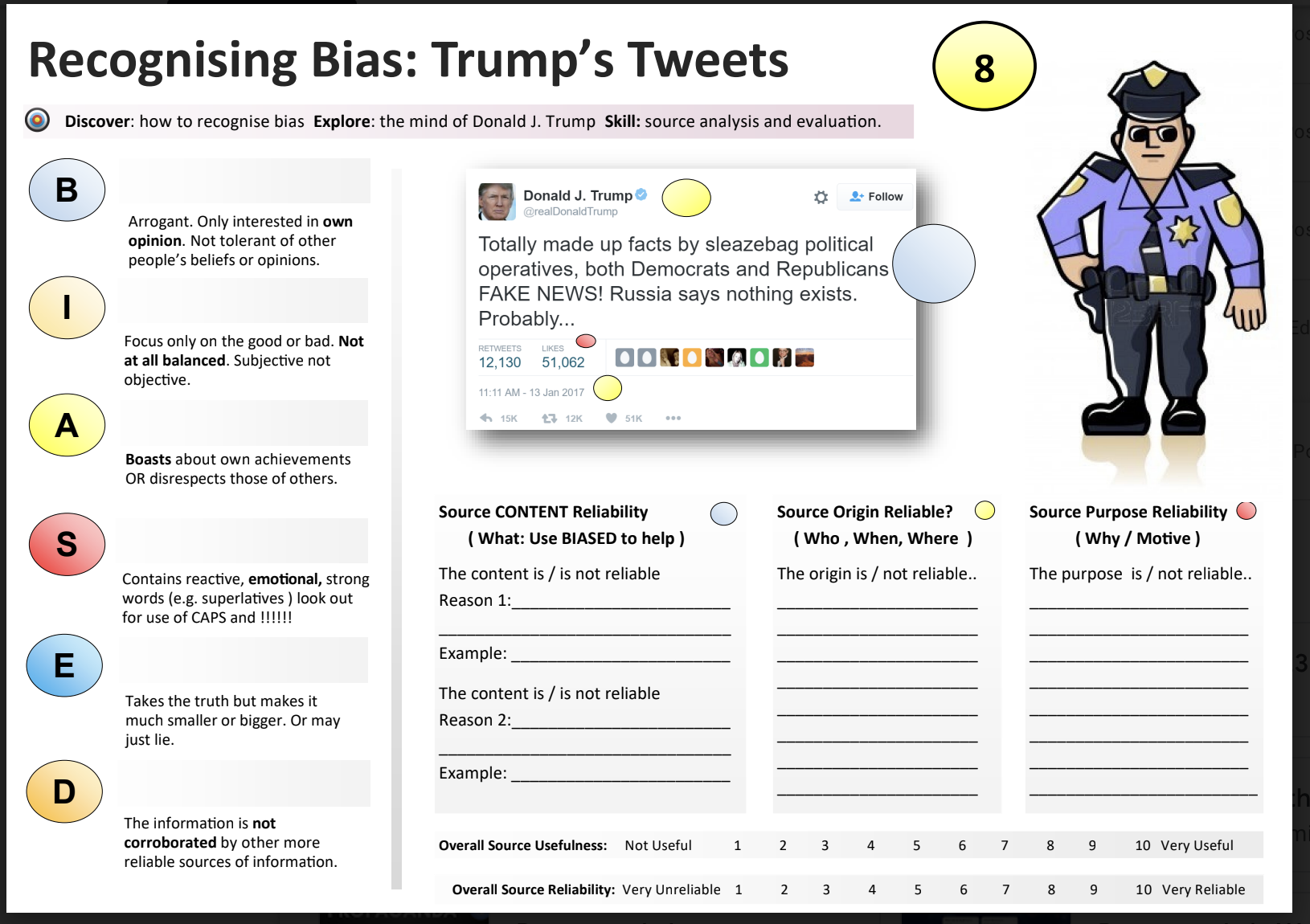
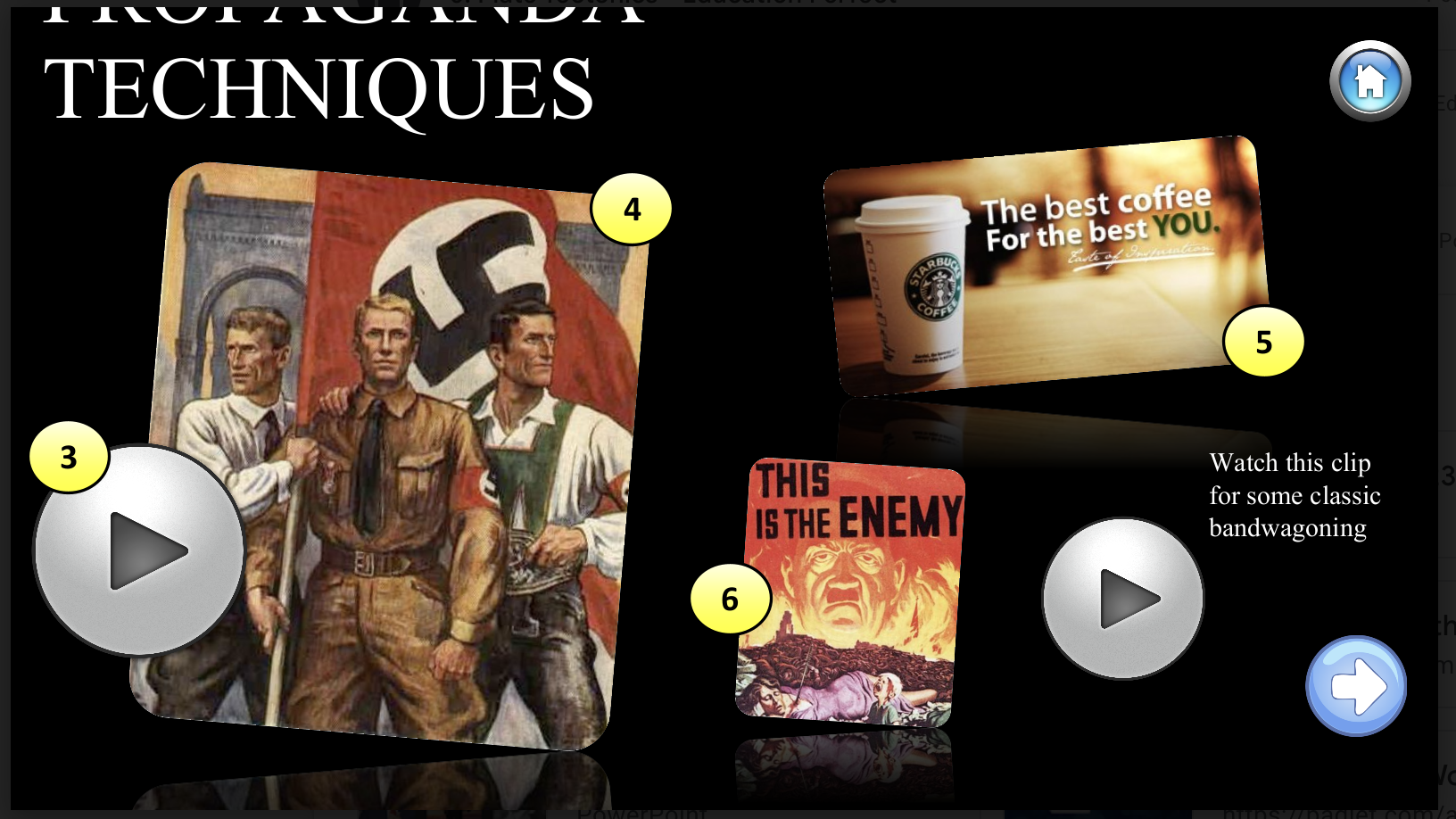
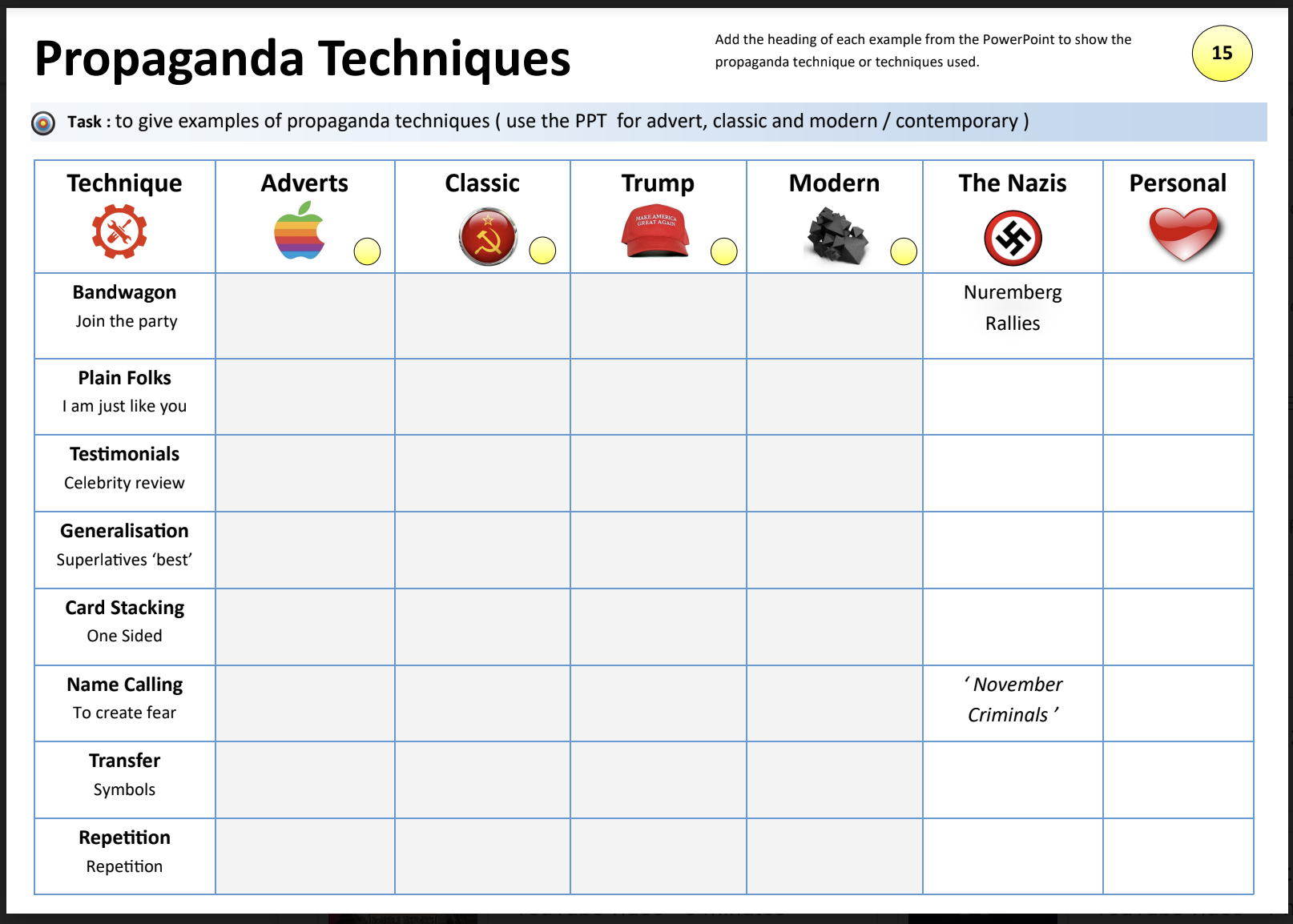
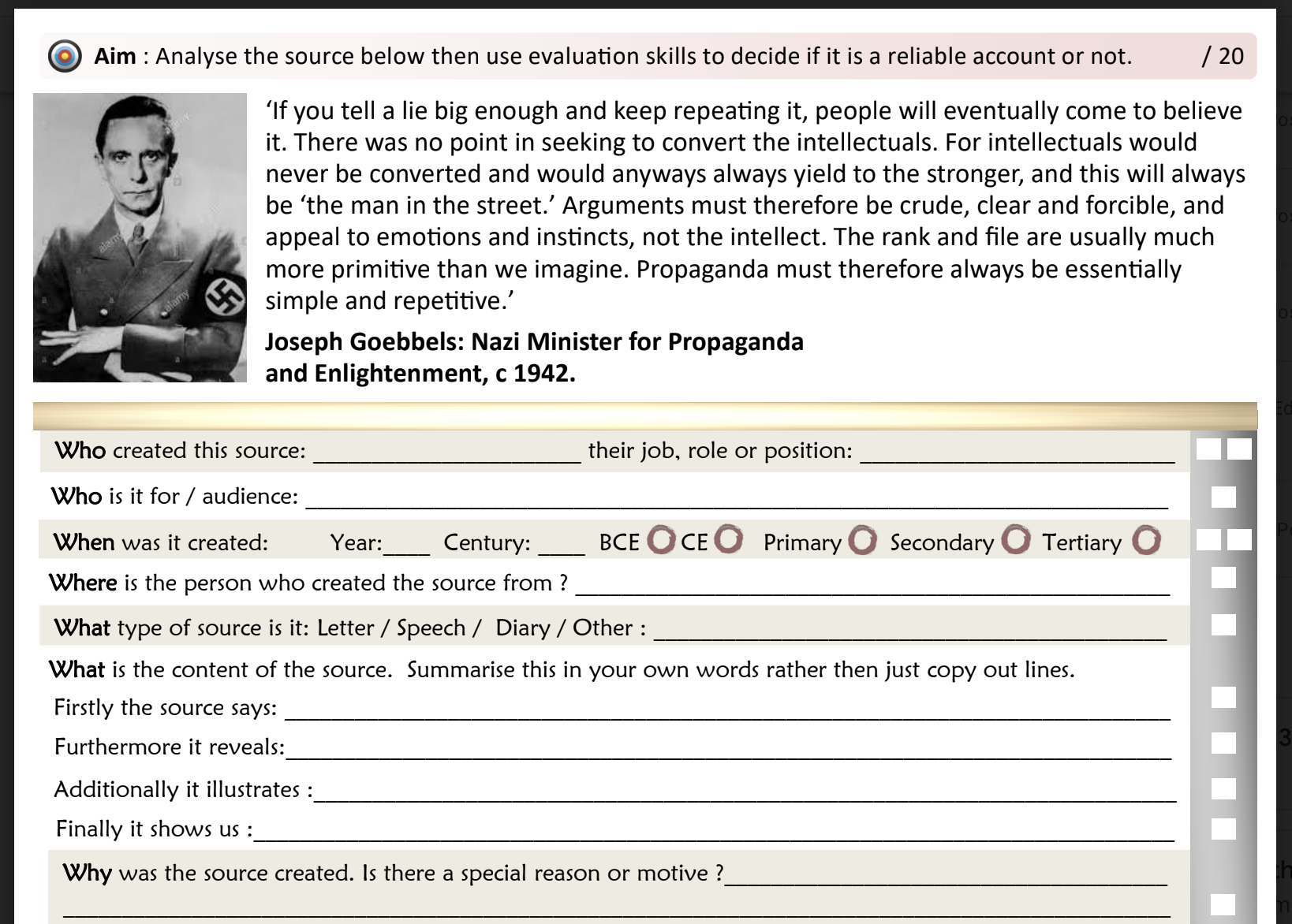
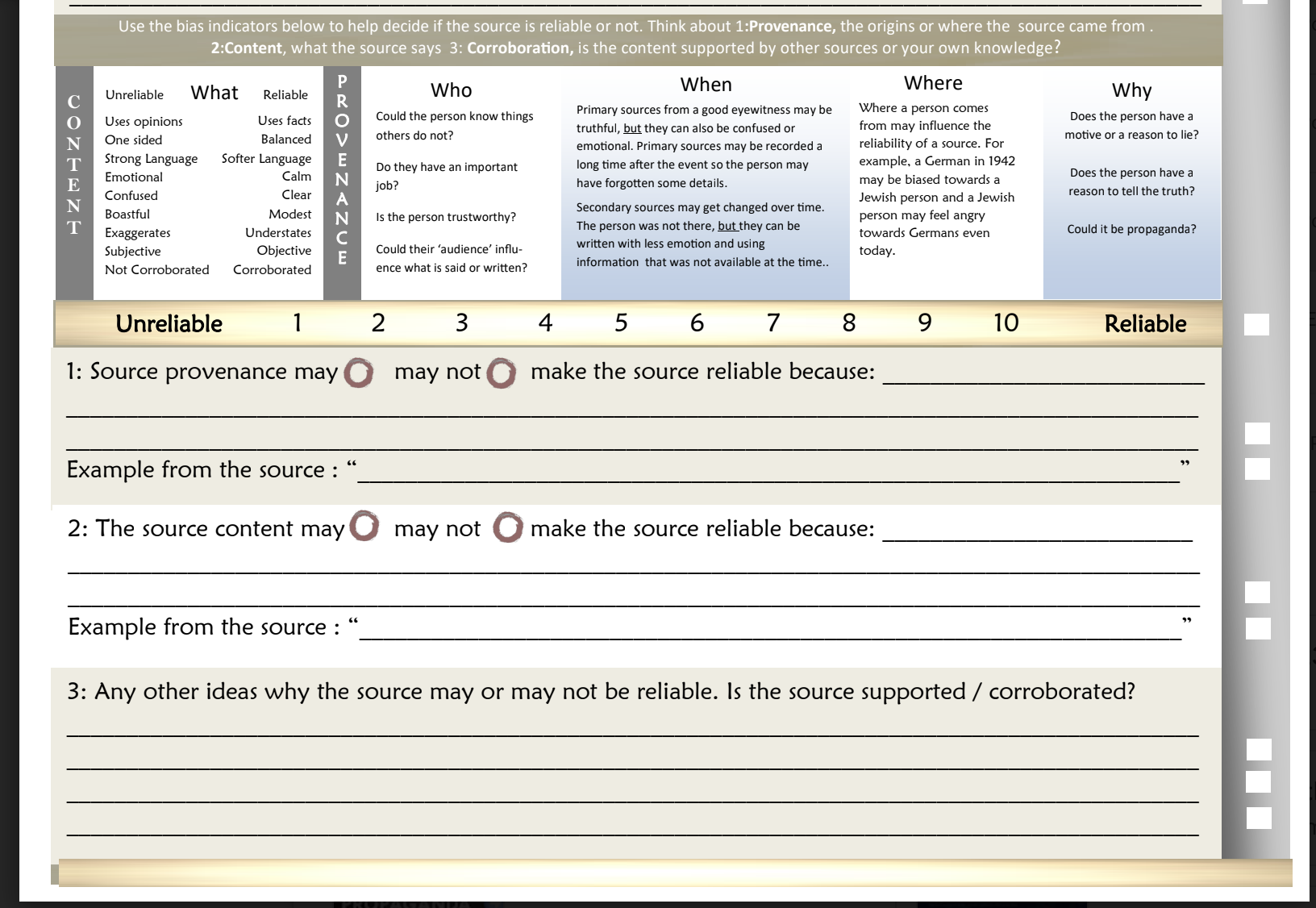
-
EXPLORE / TŪHURA learning intentions:
- We are EXPLORING to be able to weigh up the strengths and weaknesses of sources and decide how reliable a source is.
- We are EXPLORING the Earth’s age and history. explain the structure of the Earth.
- We are EXPLORING the explain the structure of the Earth and how it has changed over time.
Earth – Where do Volcanoes Come From?
Lesson Aim: TBAT describe Earth’s age and history and explain the structure of the Earth.
What do you know about Earth and volcanoes?
Task:
Mind map what your table knows about the Earth and volcanoes – do this on the A3 paper provided.
Move to a different table in the room and each take note of something different on that groups mind map.
Come back to your table and add what you have found out.
Be prepared to share your mind map with the rest of the class.
4.5billion years ago – Earth was formed (The Big Bang)
65 million years ago – dinosaurs disappeared
4 million years ago – apes appeared
100,000 years ago to present day – Homo Sapiens (modern human)
10,000 years ago – starting point of modern recorded History
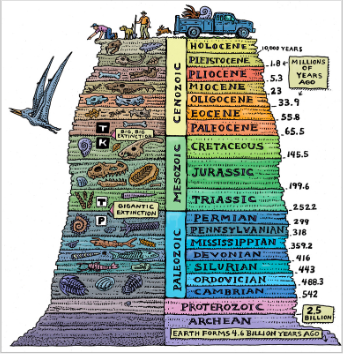
Task:
On a full page make a sketch of the diagram on the board in your book.
Listen and watch the video clip and add some notes to each section of the earth.
The Earth’s Four Layers…
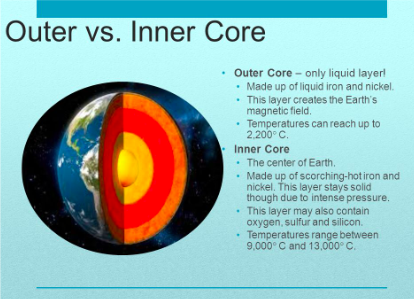
The Inner Core
Solid
5,150-6,360km below the Earths surface
Iron and some nickel
The Outer Core
Liquid
2,890-5,150km below the Earths surface
Iron and nickel
The Mantle…
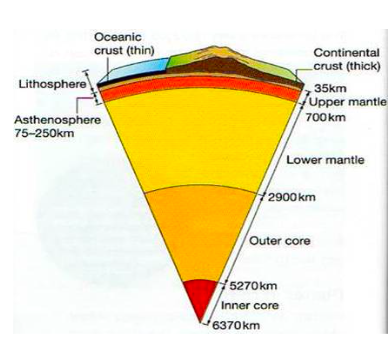
Thickest layer of earth
35-2,890km below the surface of the Earth
Solid
Molten hot rock known as magma
Tectonic plate movement
The Crust…
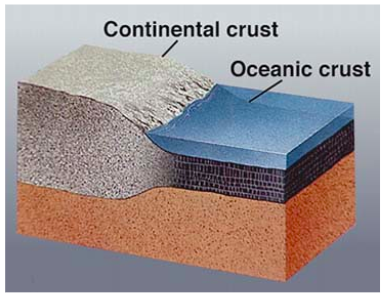
Thinnest layer of the Earth
Two types of crust: oceanic and continental
0-35km thick
Solid
Oceanic:
Basalt
Under the sea
Young
Thinner
denser
Continental:
Granite
Under the continents
Old
Thicker
Less dense
Plenary - show me what you know.
Rewrite the paragraph in your book using the words below to fill in the blanks.
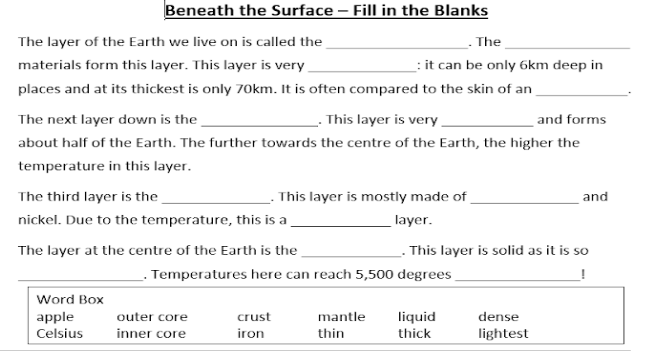
-
EXPLORE / TŪHURA learning intentions:
- We are EXPLORING how places reflect past interactions of people with the environment
Task: Mind map what your table knows about the Earth and volcanoes – do this on the A3 paper provided.Move to a different table in the room and each take note of something different on that groups mind map.Come back to your table and add what you have found out.Be prepared to share your mind map with the rest of the classWrite a paragraph about what you have learnt from the video.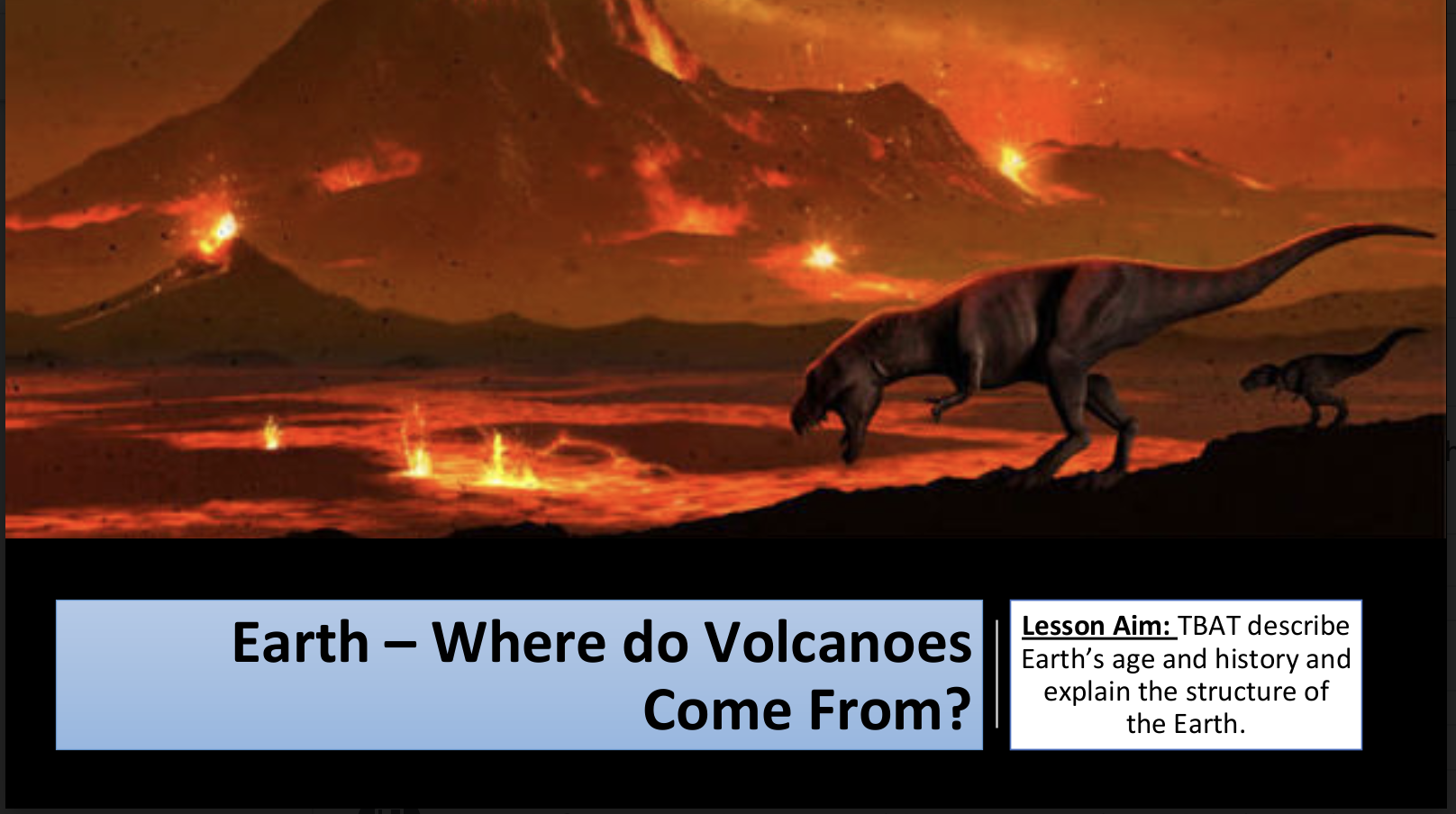
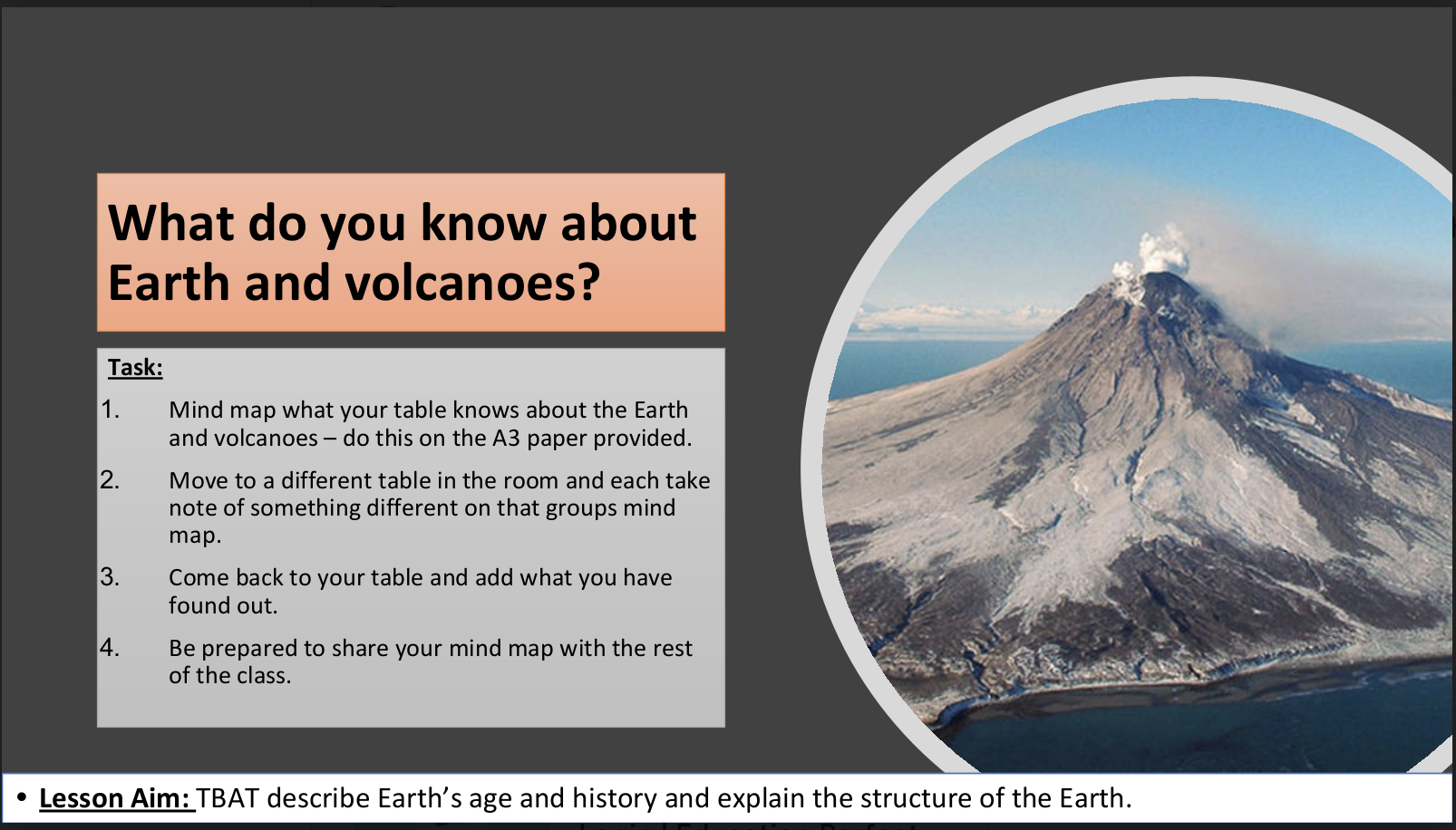
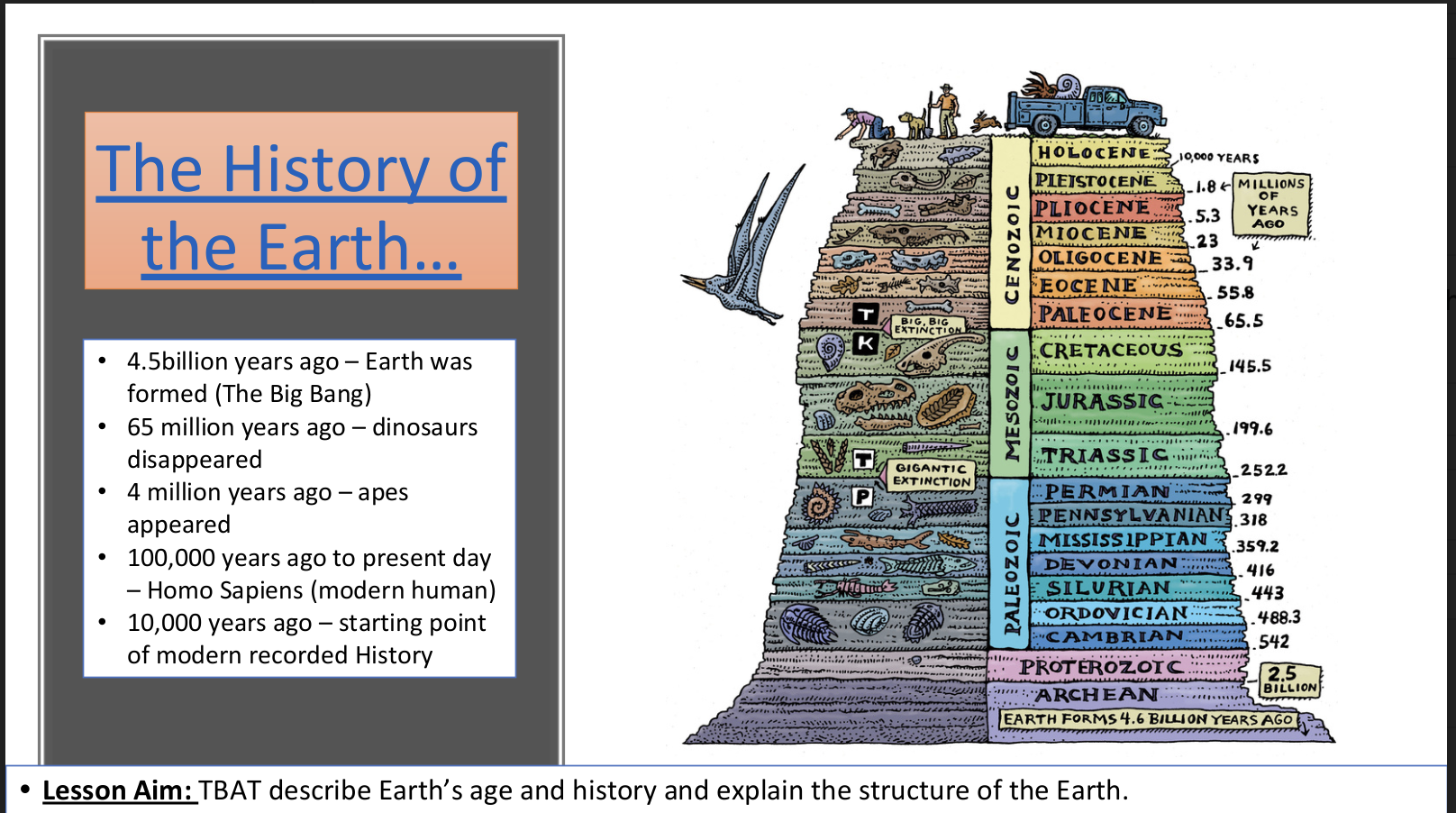
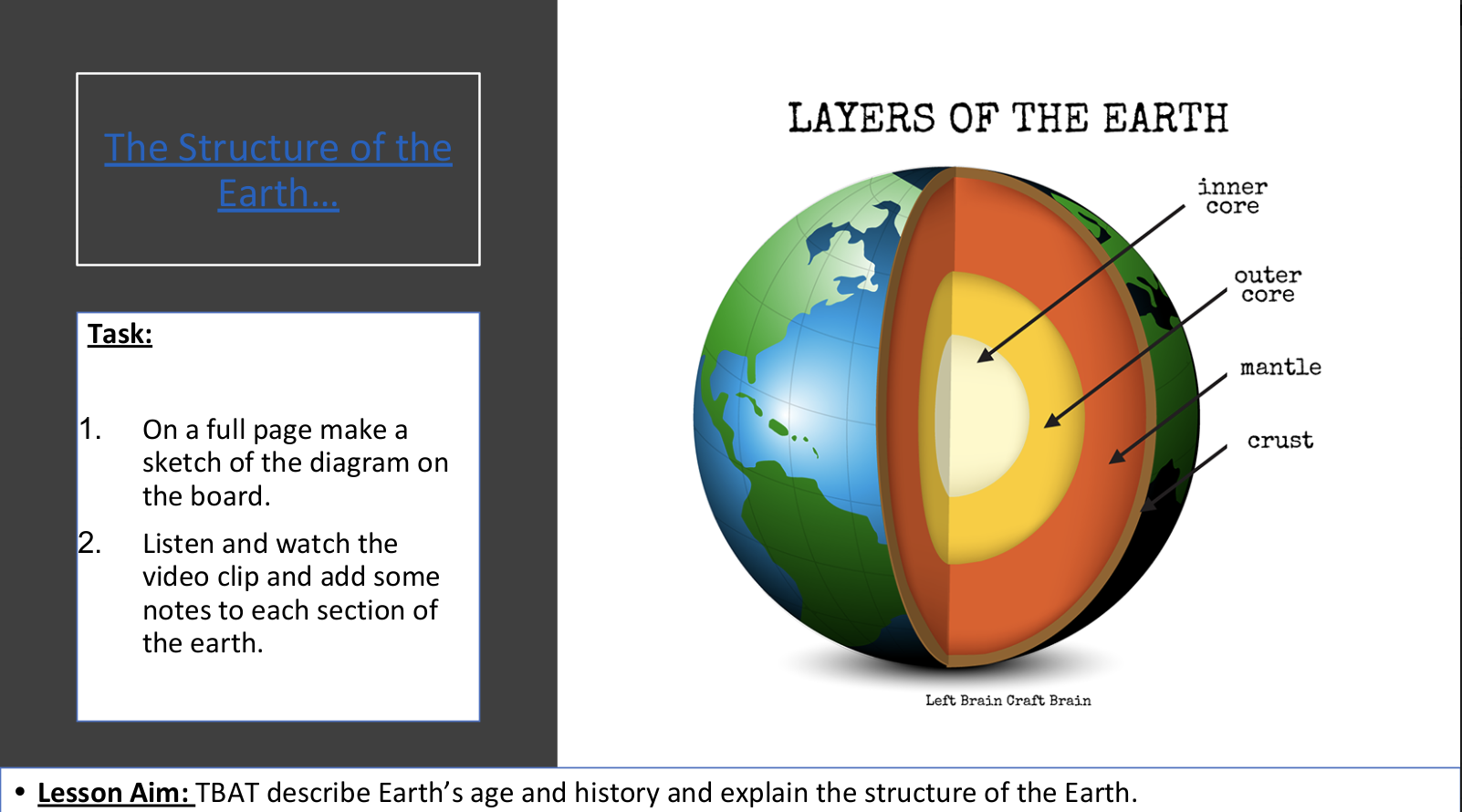
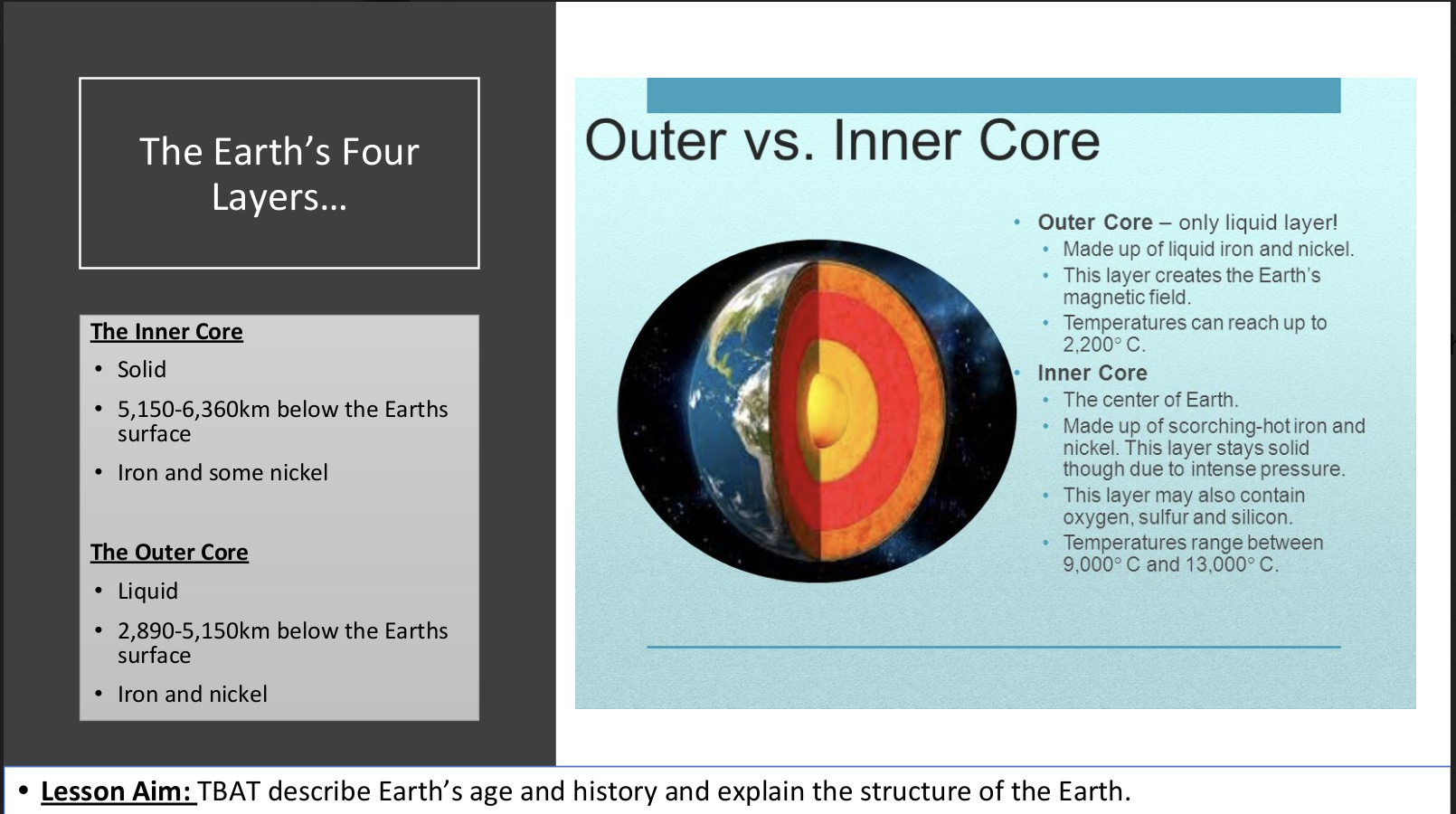
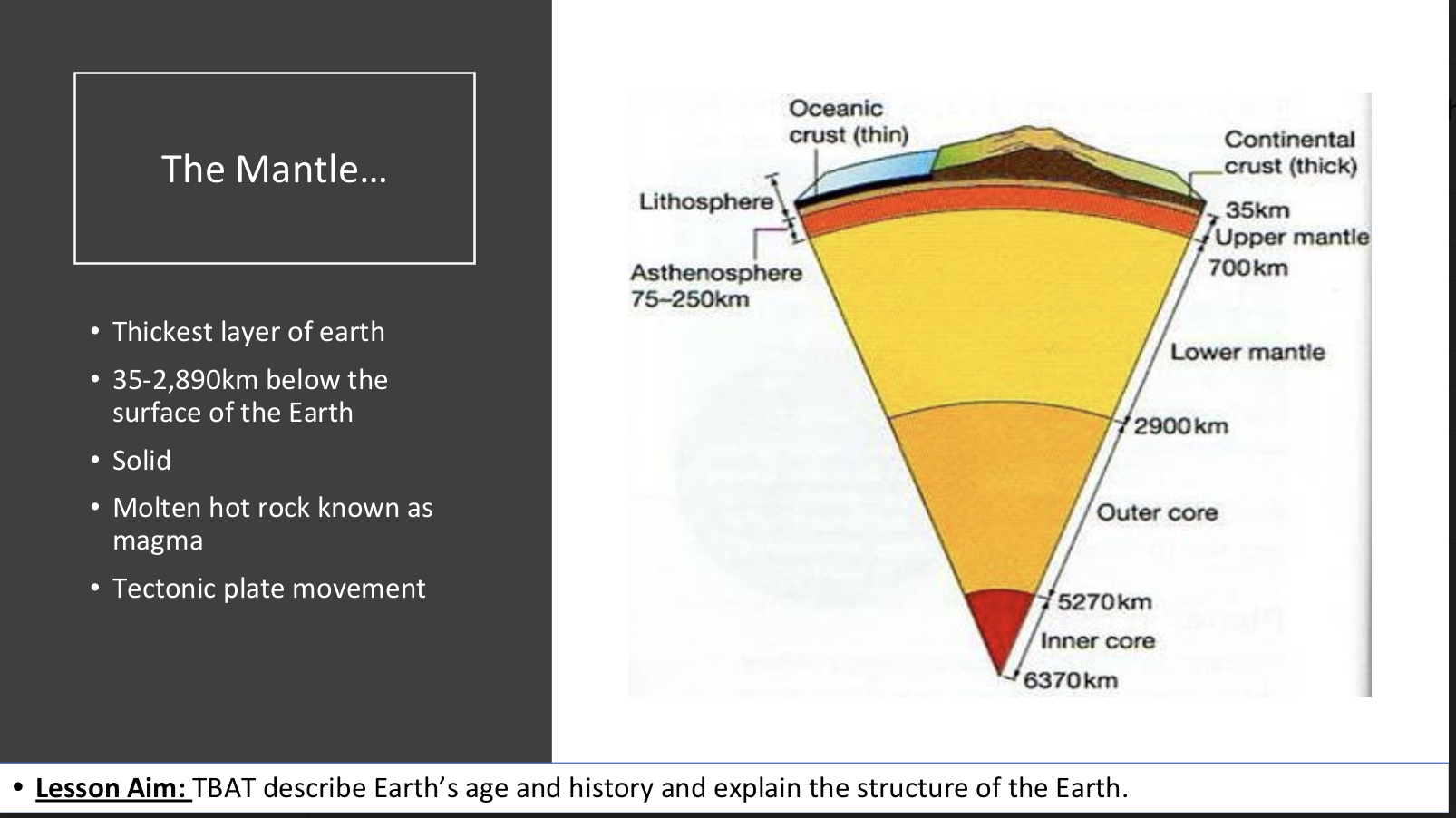
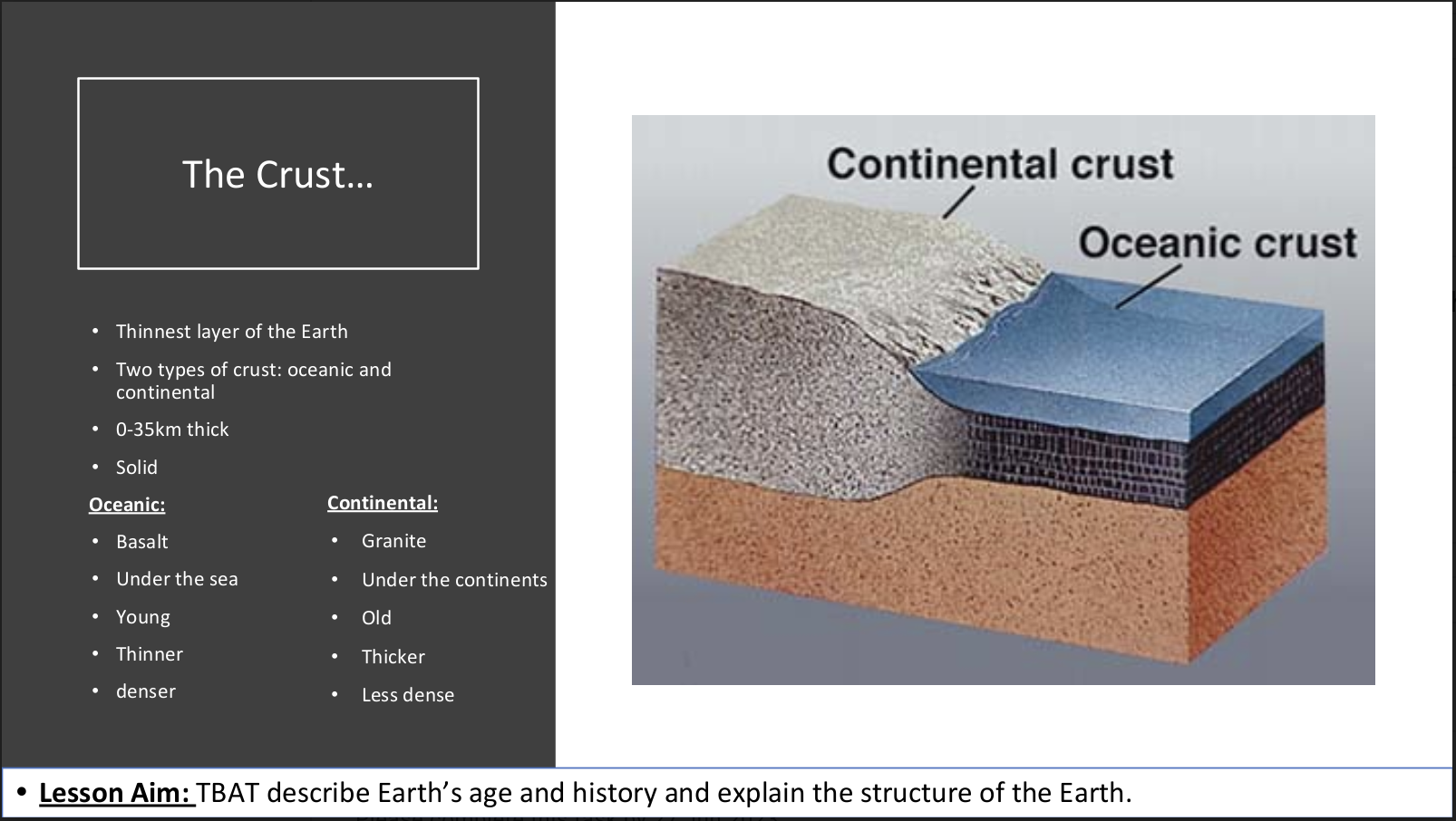
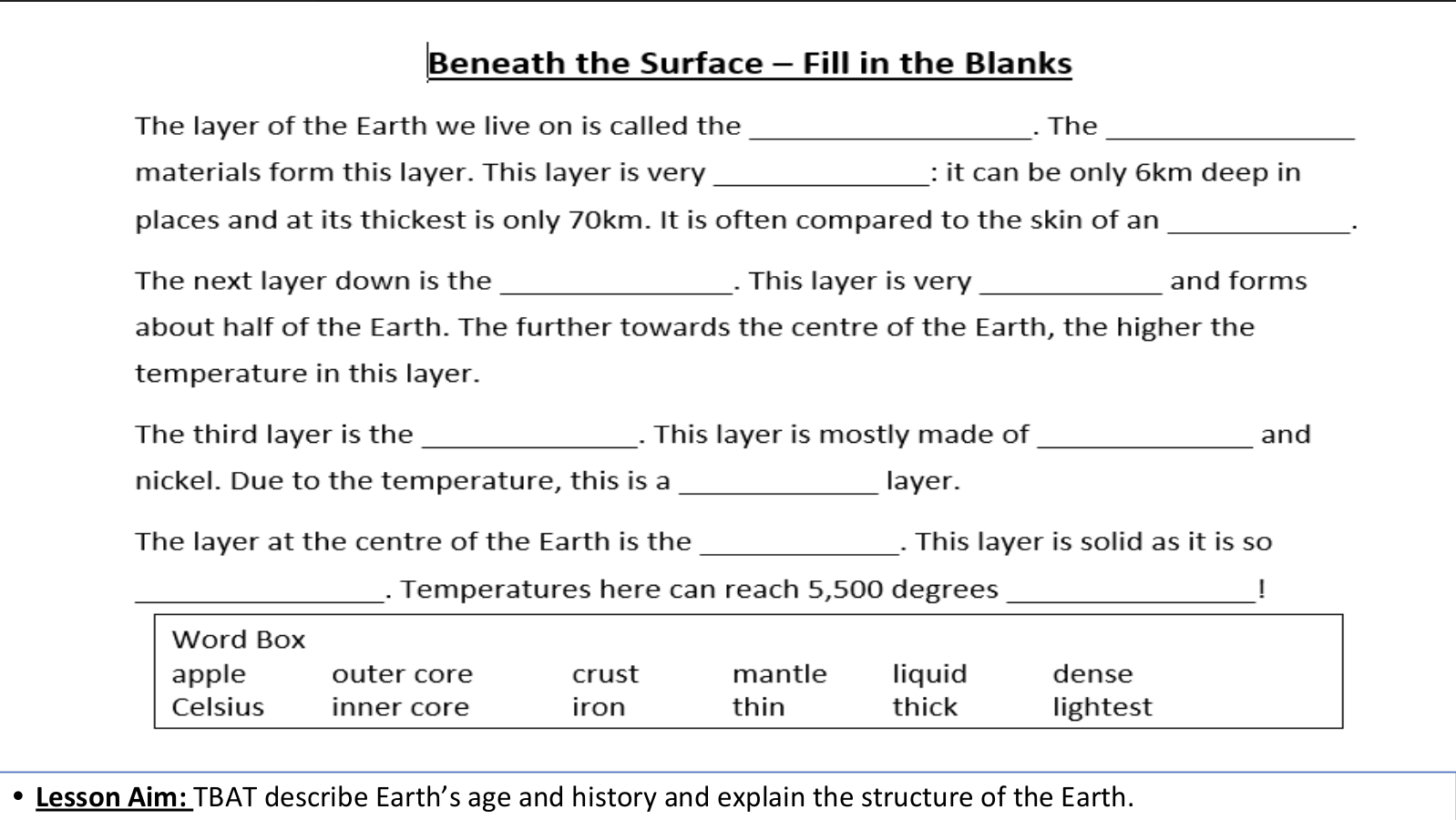
- We are EXPLORING how places reflect past interactions of people with the environment
-
EXPLORE / TŪHURA learning intentions:
- We are EXPLORING how places reflect past interactions of people with the environment
- We are EXPLORING causes and effects of events that have shaped the lives of a group of people;
- We are EXPLORING how and why people experience events in different ways.
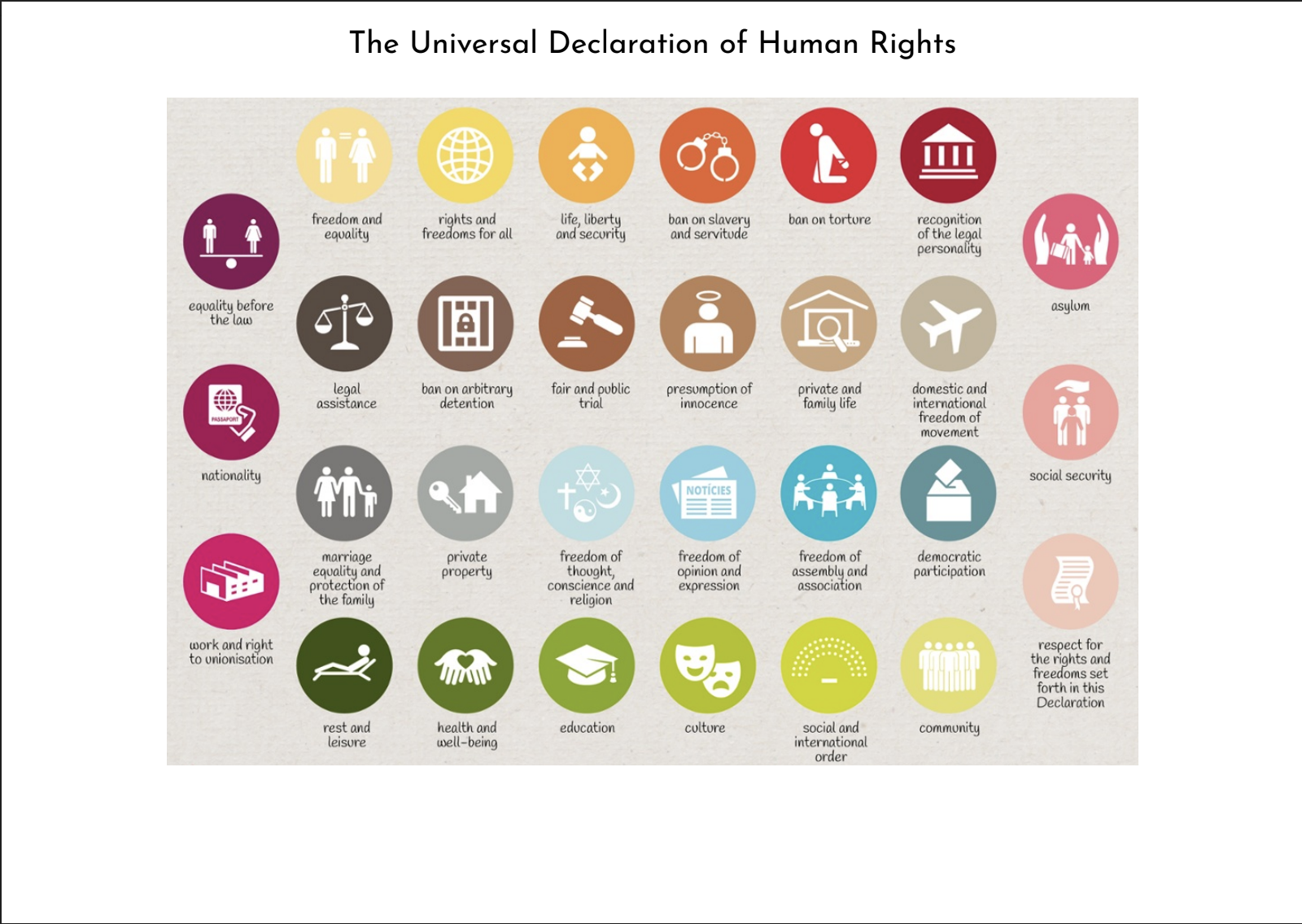
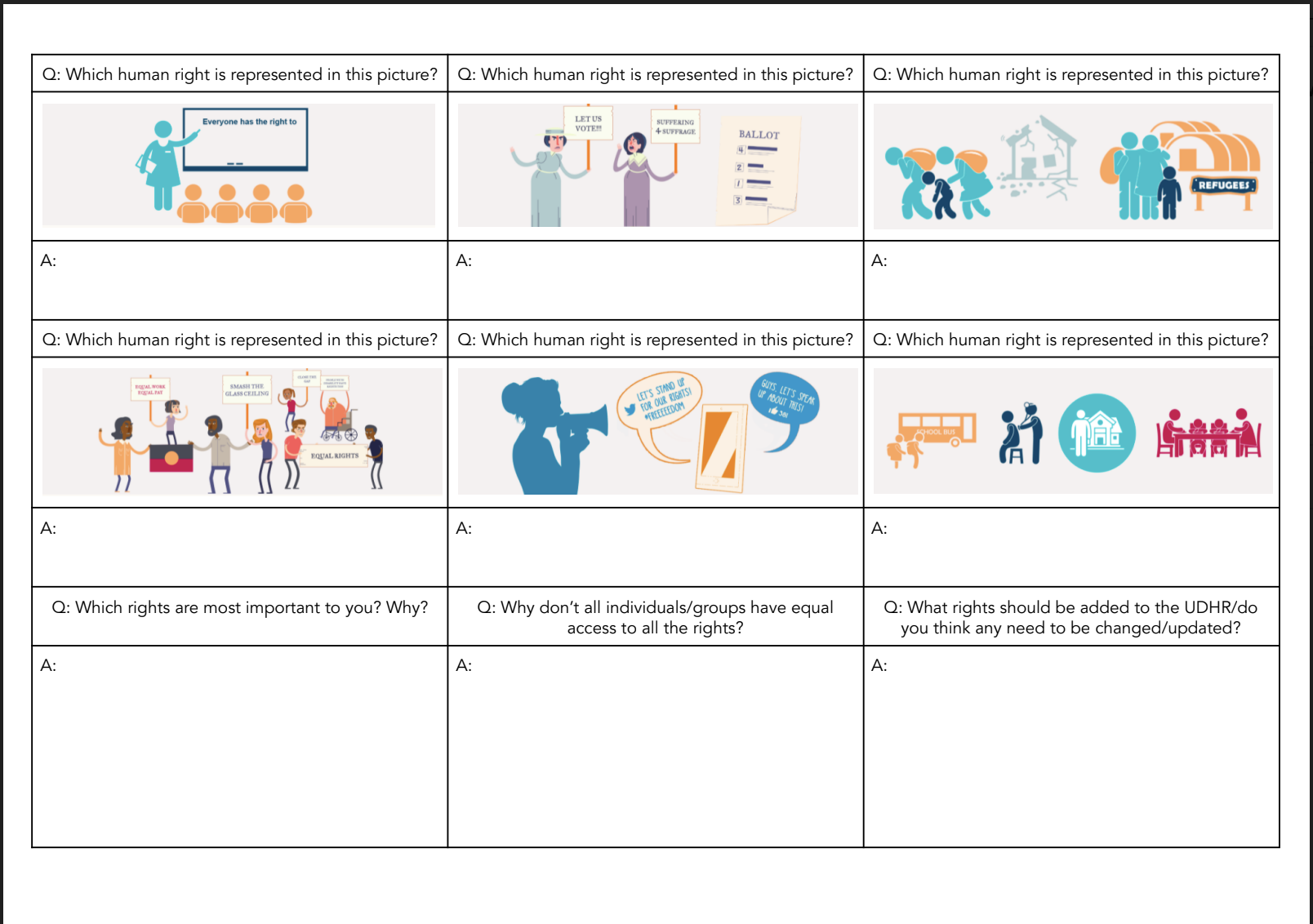
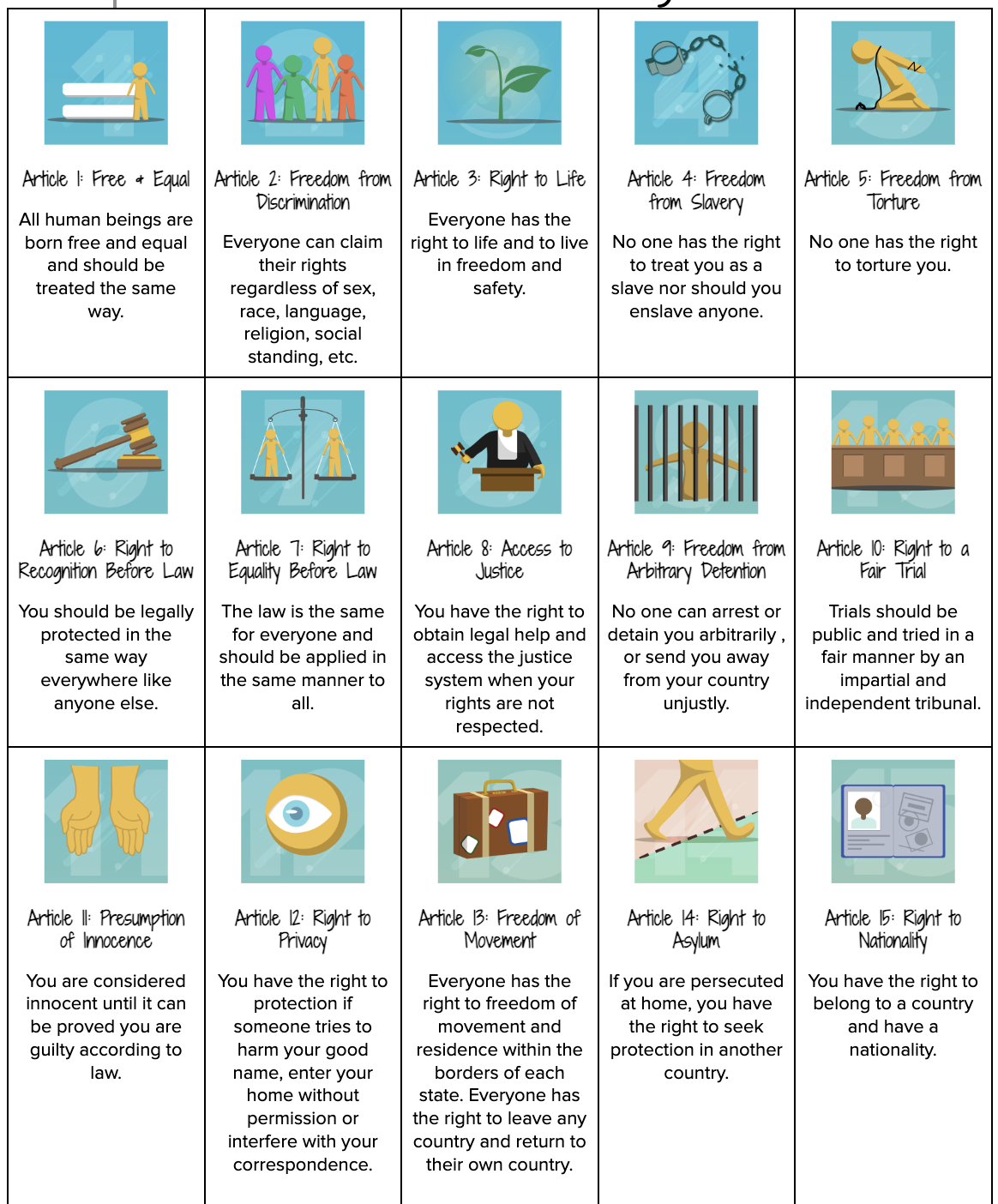
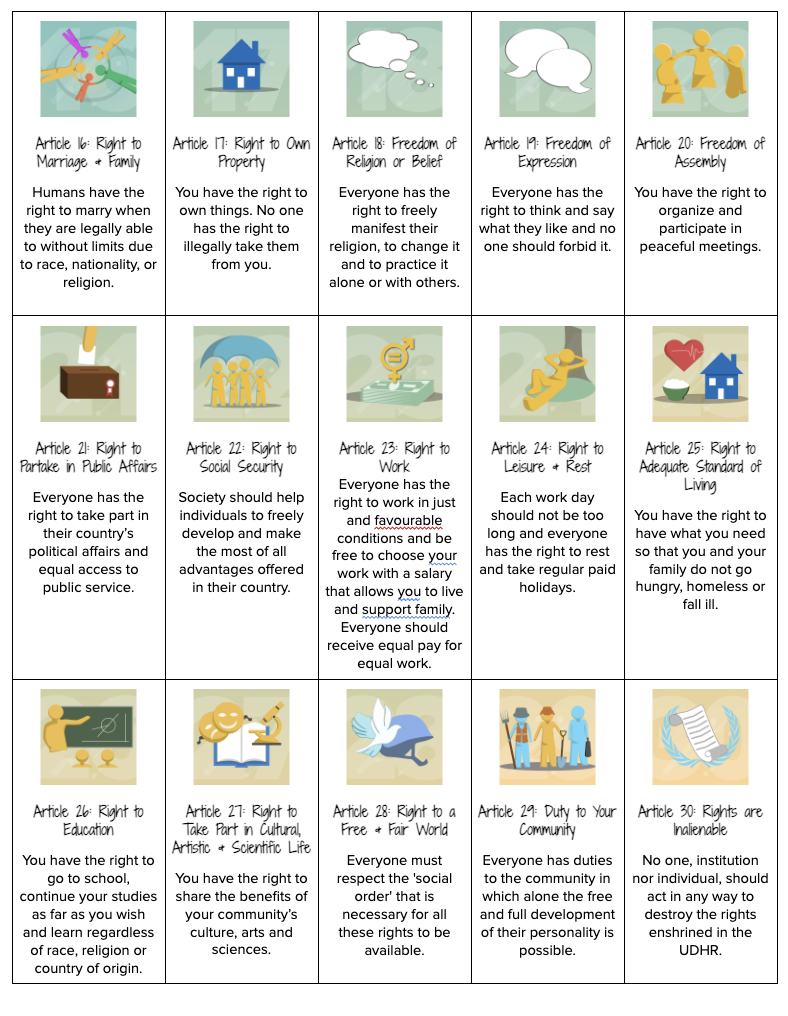
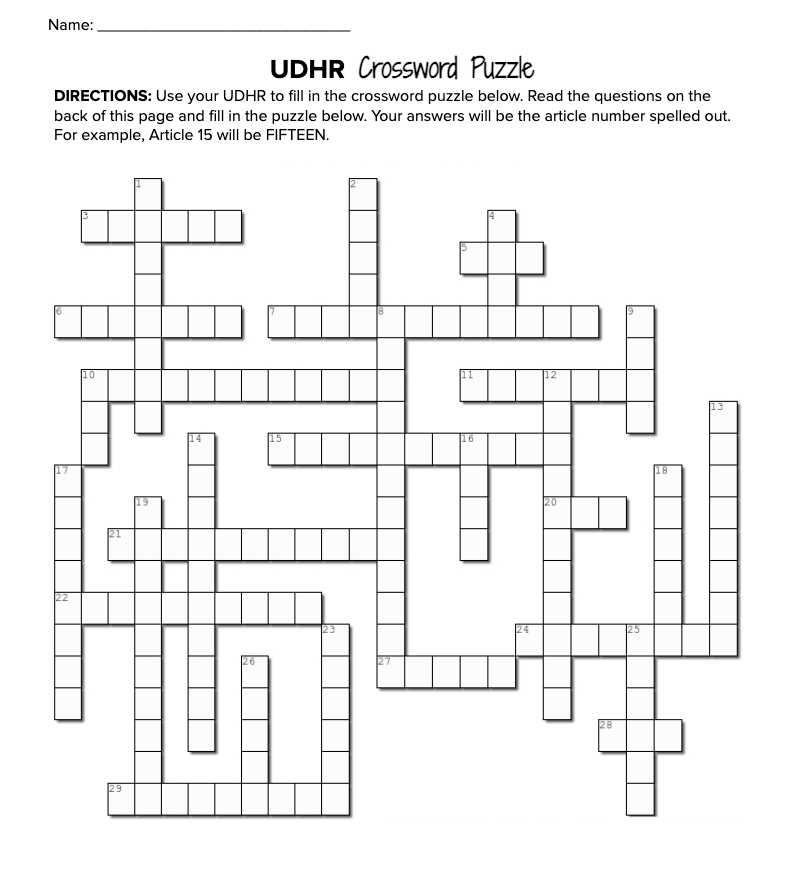
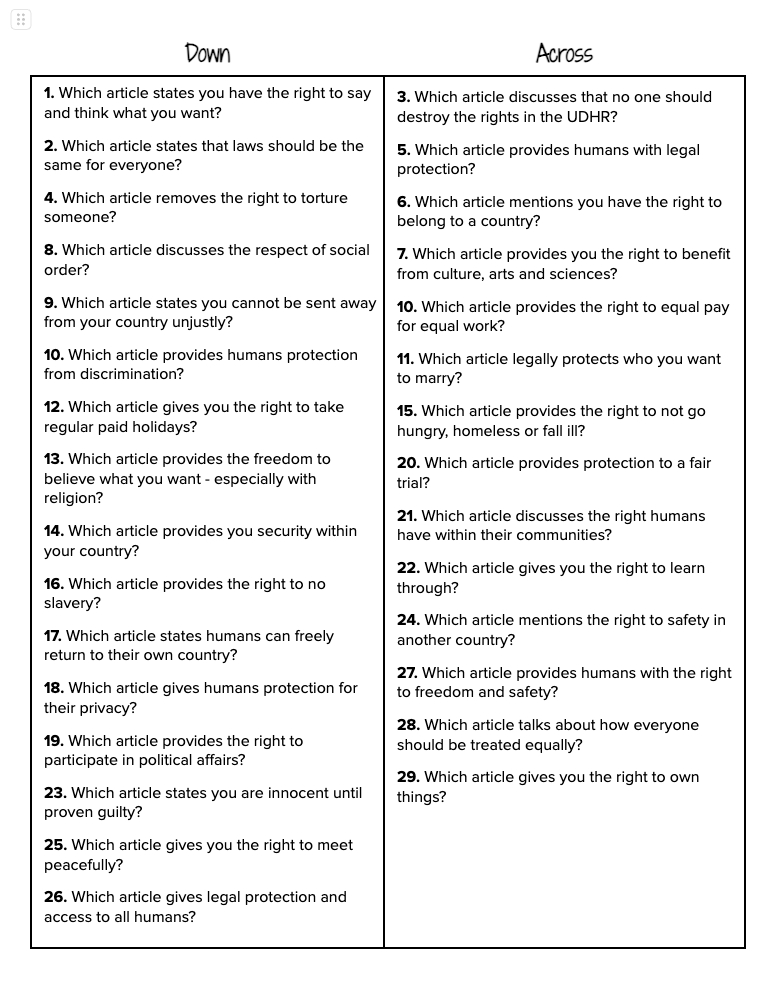
Do Now
Copy down the following definition for Human Rights.
Human rights are the basic rights and freedoms that belong to every person in the world, from birth until death.
This term in Global Studies we will be looking at how we can reduce inequalities We will…
FOCUS on human rights & the issue of poverty in New Zealand
EXPLORE New Zealand’s election system and how our government functions
PLAN & DO by participating in a whole whānau election and creating political parties
- REFLECT on how we can create change through our political system
You will have a chance to complete an NCEA standard in Global Studies this term.
Standard 1.4: Report on my involvement in a social action
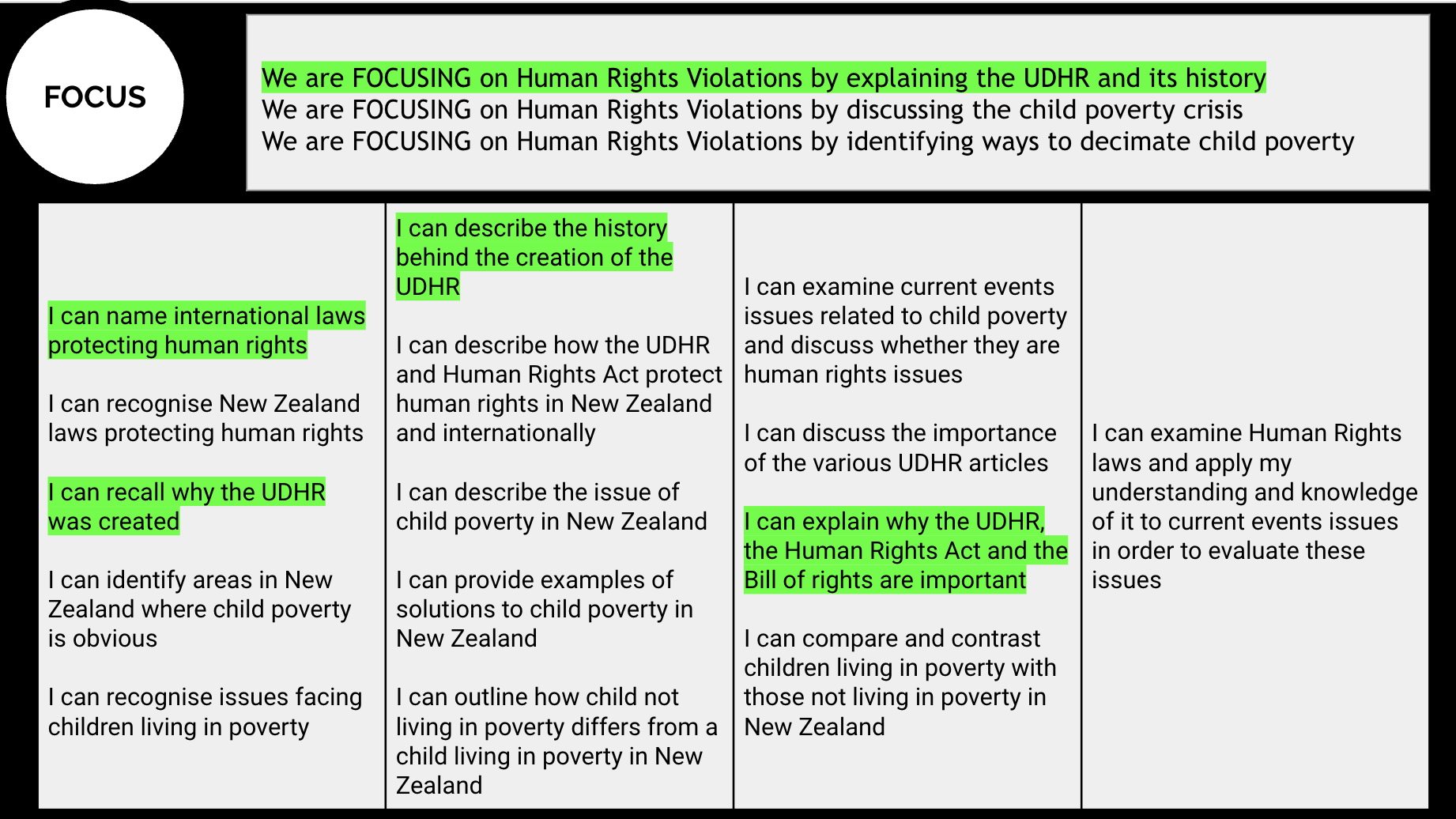
What would you do?
It’s 1945. WWII has just ended and the world is beginning to see the impact of some of the terrible events that occurred.
Across Europe, the events of the Holocaust are just coming to light. News of Auschwitz and other Concentration Camps are making headlines around the world.
In Japan, the dropping of the Atomic bomb on Hiroshima and Nagasaki has killed over 200,000, injured many more and completely destroyed the cities.
Imagine you are a world leader. What do you do?
In response to the deadly events of WWII the United Nations (an international government) was formed and the Universal Declaration of Human Rights (UDHR) was created.
Complete the History of the Universal Declaration of Human Rights activity on Google Classroom
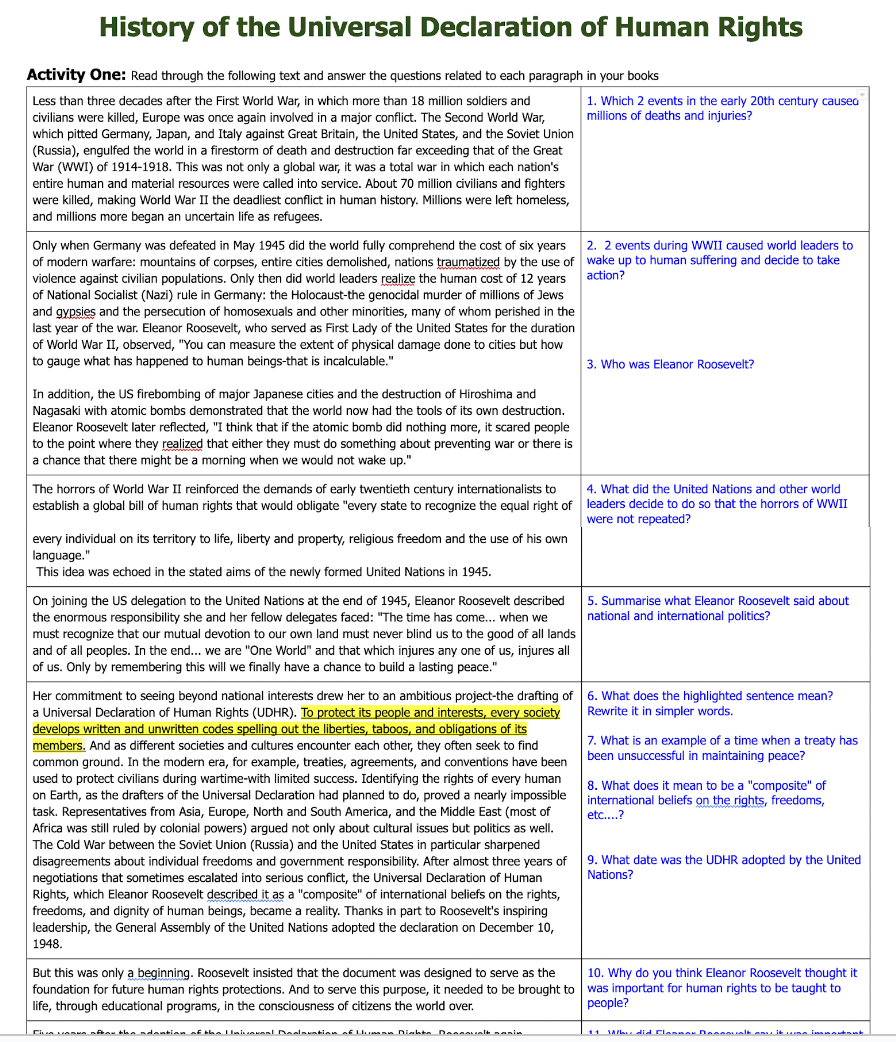
Do Now: Fill in the gaps
There are two main New Zealand laws that specifically ______ human rights. One is the Human Rights Act 1993, and the other is the _____ of Rights Act 1990. The Human Rights Act 1993 protects people in New Zealand from __________ in a number of areas of life. The Human Rights Act’s intention is to help ensure that all people in New Zealand are treated fairly and _______. The Bill of Rights Act sets out a range of civil and ______ rights, which arise from the United Nations ________ Covenant on Civil and Political Rights. These include the rights to ________ of expression, religious belief, freedom of ______, and the right to be free from discrimination.
discrimination, protect, freedom, movement, Bill, equally, political, International
INTERNATIONAL HUMAN RIGHTS & NZ
New Zealand is committed to upholding human rights. It has participated actively in human rights discussion at the United Nations and it has a history of promoting the human rights of women, indigenous people and children.
New Zealand supports the Universal Declaration of Human Rights and has also ratified (approved) numerous other human rights treaties, including the Bill of Rights and the Human Rights Act.
-
FOCUS / ARONGA learning intentions:
- We are FOCUSING on Human Rights Violations by explaining the UDHR and its history
- We are FOCUSING on Human Rights Violations by discussing the child poverty crisis
- We are FOCUSING on Human Rights Violations by identifying ways to decimate child poverty
HUMAN RIGHTS 101Lesson Overview
In this lesson, we will explore the concept of human rights and the Universal Declaration of Human Rights (UDHR). Learning activities include a warm up discussion to check existing knowledge of human rights, “Human Rights” bingo, source-based questions, videos, and links to maps and inspiring stories of progress made on the 74th anniversary of the UDHR. The culminating task is a summarizing paragraph.
Guiding Questions
What are human rights?
What is the Universal Declaration of Human Rights (UDHR)?
74 years since the adoption of the UDHR, how much progress has been made when it comes to advancing human rights? Where have we fallen short?
Learning Objectives
After this lesson, you will be able to:
Define human rights.
Explain the history of the rights, the UN and the UDHR.
Explain where and how human rights have advanced and where progress remains.
Instructions:
Together, we will read, watch and discuss the following quote and short video clip.
According to Facing History and Ourselves:
The horrors of World War II reinforced the demands of early twentieth century internationalists to establish a global bill of human rights that would obligate "every state to recognise the equal right of every individual on its territory to life, liberty and property, religious freedom and the use of his own language." This idea was echoed in the stated aims of the newly formed United Nations in 1945.
What do you know about the horrors of WWII and how they led to the creation of the United Nations and to the Universal Declaration of Human Rights?
What do you know about human rights?
What comes to mind when you hear the word dignity? What is the opposite of dignity?
What comes to mind when you hear the word justice? What is the opposite of justice?
Together we will watch a short video and define human rights.
-
FOCUS / ARONGA learning intentions:
- We are FOCUSING on Human Rights Violations by explaining the UDHR and its history
- We are FOCUSING on Human Rights Violations by discussing the child poverty crisis
- We are FOCUSING on Human Rights Violations by identifying ways to decimate child poverty
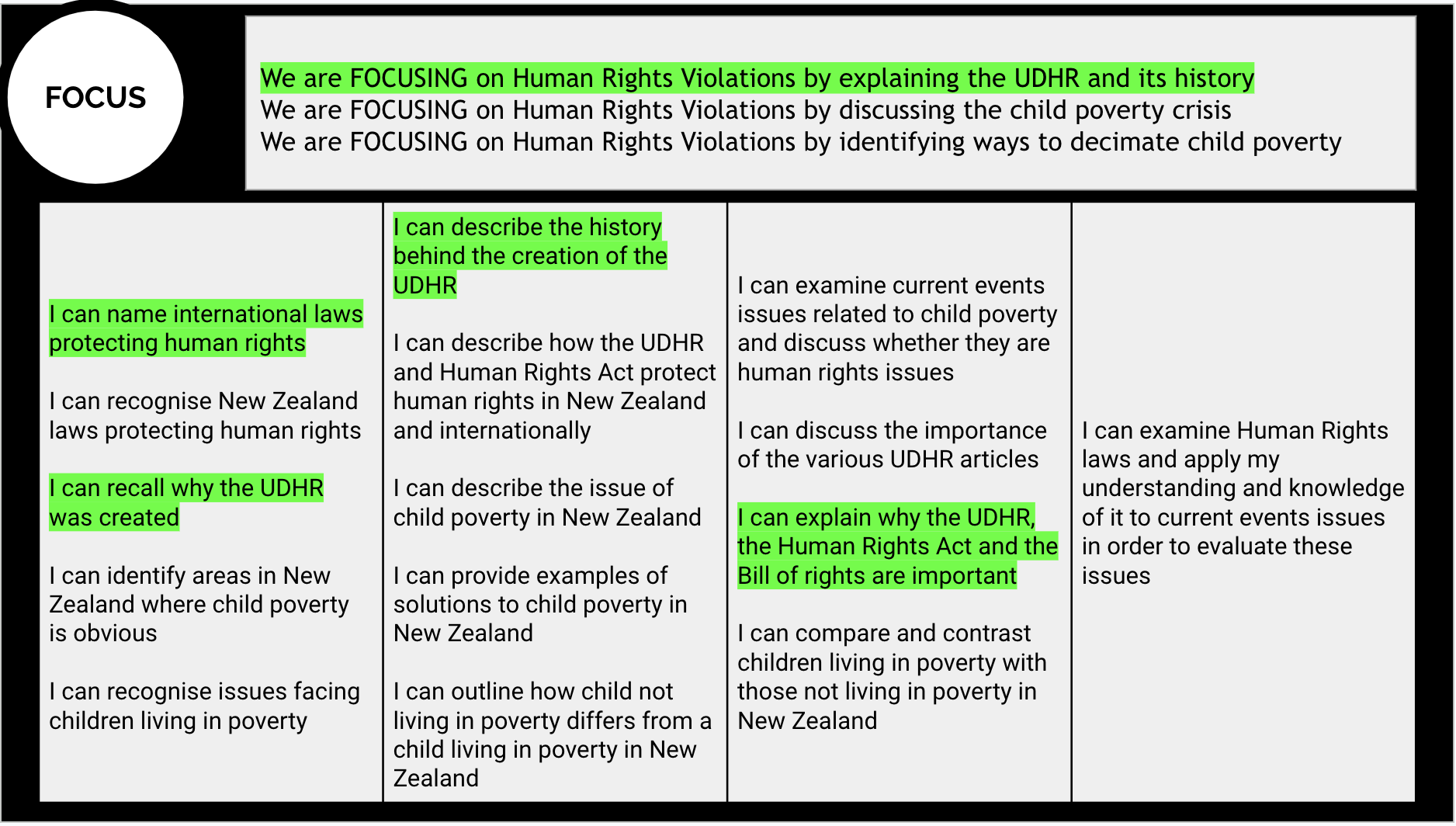
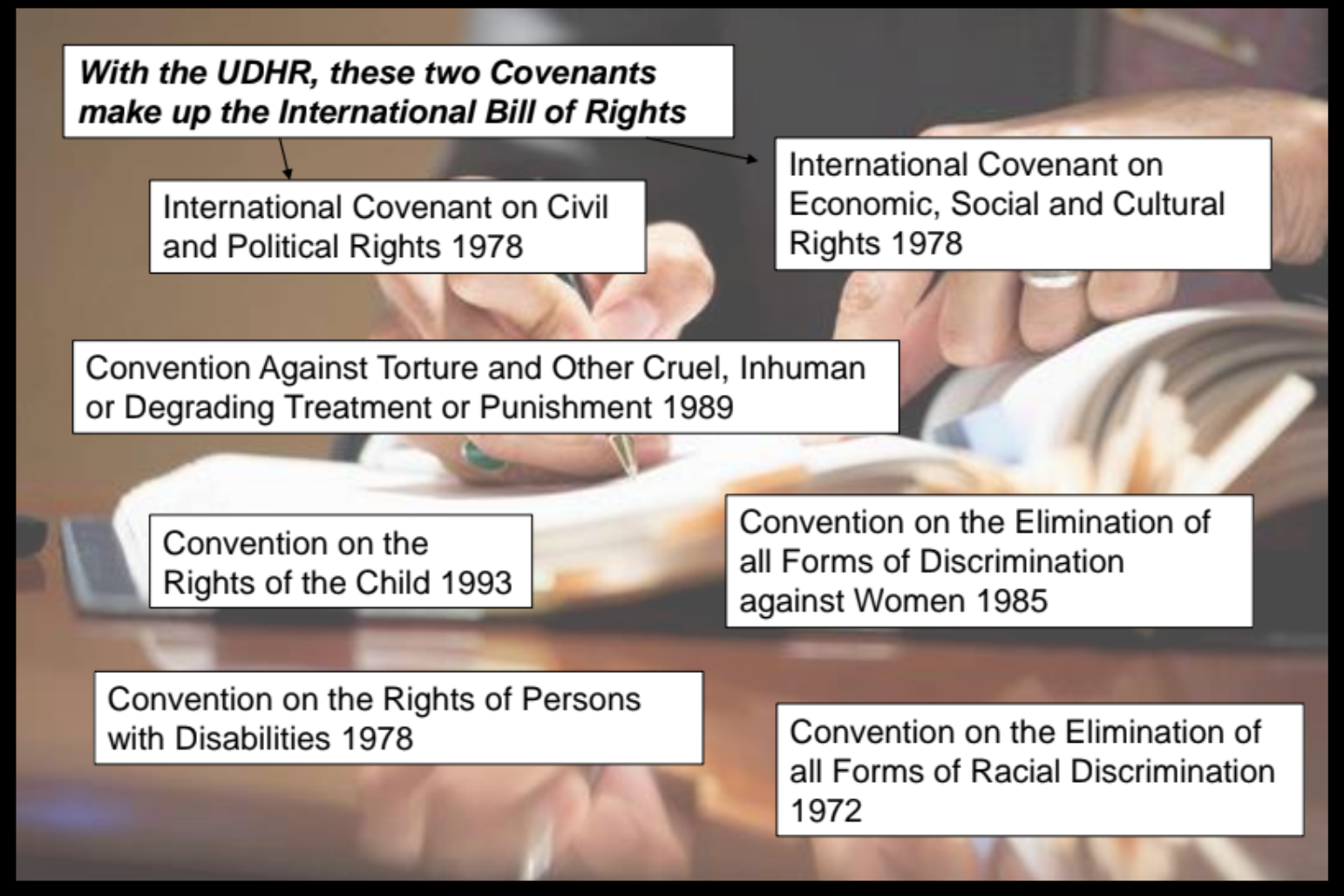
Write a brief explanation of each of these covenants and conventions (one sentence)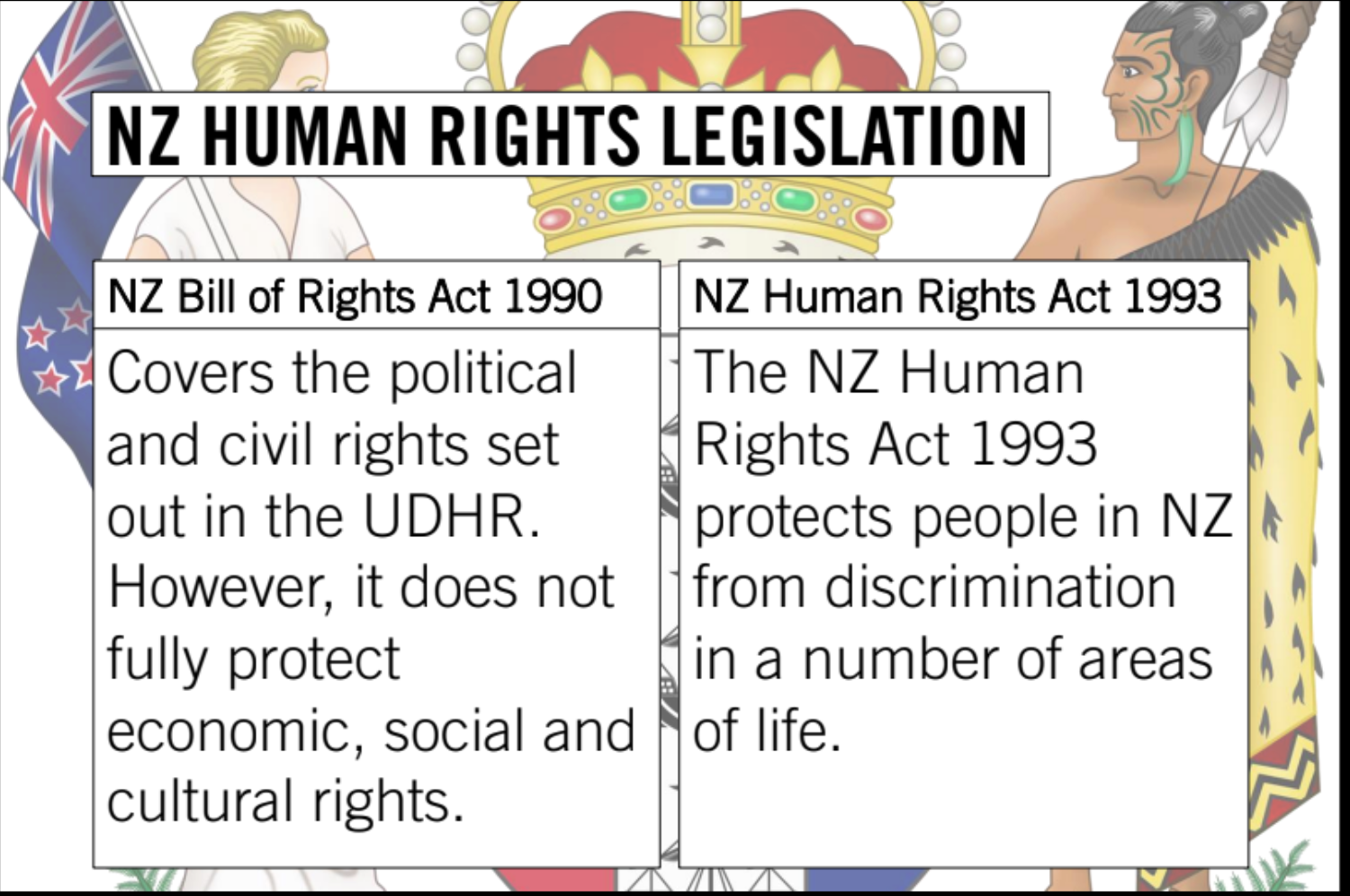
What Are Human Rights?
‘Human rights’ are rights that belong to every individual regardless of race, sex, religion, nationality, ethnicity etc. Following the Second World War, the need to prevent such atrocities happening again in the future was evident and as a result, the UN (United Nations) drafted the ‘Universal Declaration of Human Rights’ as a standard by which all nations should adhere in order to protect the rights of every individual across the world.
In your books, draw a table and write a brief explanation of each of the following human rights listed below.
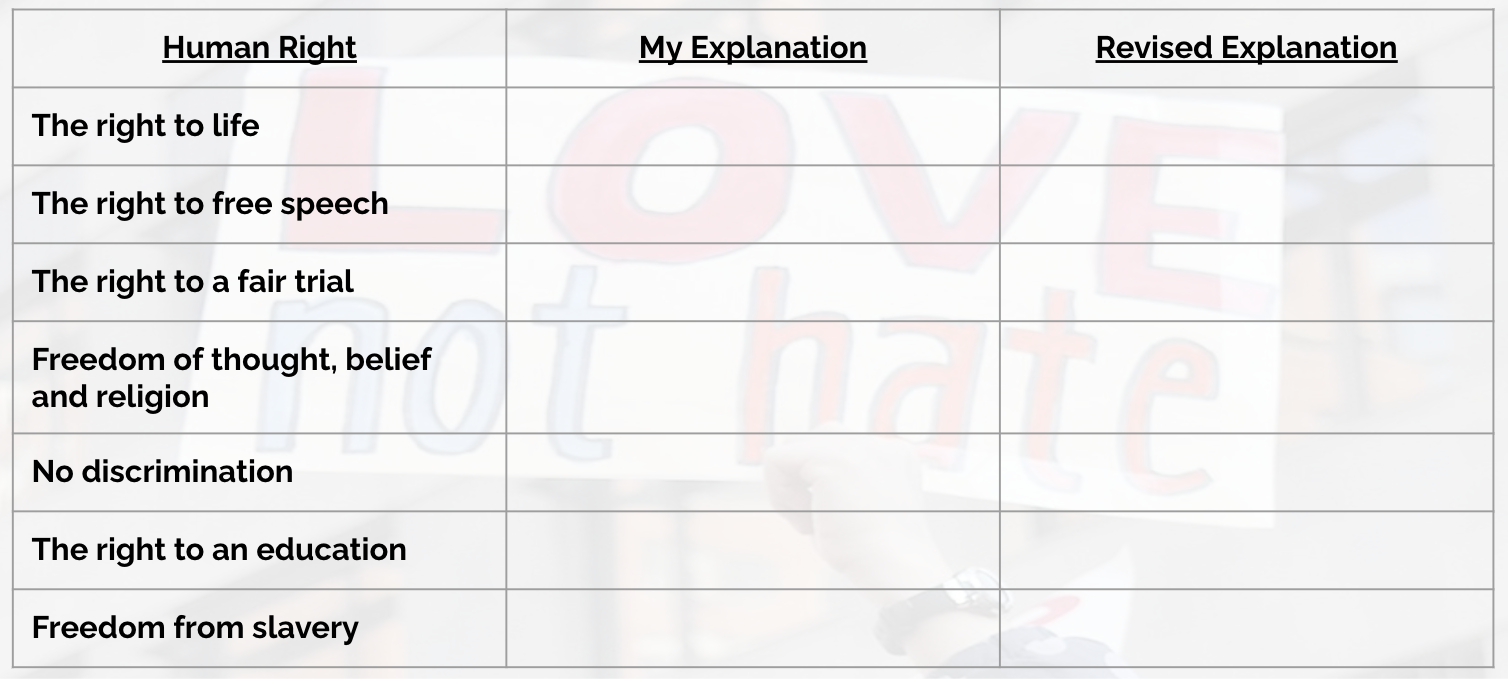
What do these Human Rights mean?
Match these in your book.
Universal Declaration of Human RightsRights Violations
In groups, discuss each of these scenarios. Using the definitions you have been given, decide which human rights have been violated.
- Fahima has travelled to the New Zealand illegally from Sudan in search of a safer life. She has been told by a family that she now lives with that she is safe. They have taken her passport and forms of identity and are making her work for no money.
- Gurinder is 14. As a Sikh, he wears a turban as part of his religious beliefs. His school have informed his parents that his turban is not part of his school uniform and he can no longer wear it to school. He has been told that he can return to school when he is no longer choosing to wear the item.
- David is 40 and suffers from severe Alzheimer’s disease. He knows that it will develop to the stage where he will not be able to do anything for himself. David wants to end his life using euthanasia.
- Malala Yousafzai, an activist campaigning for female education, is shot and near-fatally injured by a Taliban gunman in response to her activist work.
Summarise your learning by choosing one of the following tasks:
Write an acrostic poem using the word ‘freedom’ as a guide to explain what you have learned about human rights and the UN.
Choose three human rights you feel to be the most important and explain, in detail, why you think this.
-
Human Rights, the United Nations and the Universal Declaration of Human Rights (UDHR)
Instructions:
Read the sources on human rights and then respond to the questions below. Be prepared to share your answers with your classmates.
Source A: What are human rights?
Excerpt from the Advocates for Human Rights
Human rights are standards that allow all people to live with dignity, freedom, equality, justice, and peace. Every person has these rights simply because they are human beings. They are guaranteed to everyone without distinction of any kind, such as race, color, sex, language, religion, political or other opinion, national or social origin, property, birth or other status. Human rights are essential to the full development of individuals and communities.
Many people view human rights as a set of moral principles that apply to everyone. Human rights are also part of international law, contained in treaties and declarations that spell out specific rights that countries are required to uphold. Countries often incorporate human rights in their own national, state, and local laws.
In your own words, what are human rights?
Type your answer here.
Source B: What is the United Nations and the UN Charter?
Human rights entered into international law in June 1945 when the United Nations was created.
The preamble of the Charter of the United Nations, which was adopted by 50 countries in 1945, makes clear that human rights are fundamental to the UN. It reads “… to reaffirm faith in fundamental human rights, in the dignity and worth of the human person, in the equal rights of men and women and of nations large and small…” Moreover, article 1 of the United Nations Charter makes it very clear that one of the main purposes of the UN is to promote and encourage "respect for human rights and fundamental freedoms for all without distinction as to race, sex, language or religion."
The UN Charter is not the same thing as the Universal Declaration of Human Rights. The UN Charter was written in 1945. It states the purpose of the UN, criteria for membership in the UN, arrangements about international law and sets up the UN bodies.
When was the UN created? By how many countries?
Type your answer here.
What is the UN charter?
Type your answer here.
Source C: What is the Universal Declaration of Human Rights (UDHR)?
The Universal Declaration of Human Rights (UDHR) was adopted by the UN General Assembly on December 10th, 1948, three years after the UN was created and in the aftermath of WWII. According to the UN: “With the end of that war, and the creation of the United Nations, the international community vowed to never again allow atrocities like those of that conflict to happen again. World leaders decided to complement the UN Charter with a road map to guarantee the rights of every individual everywhere.”
The Universal Declaration of Human Rights emphasizes that human rights are:
Universal: belong to all people regardless of status
Inalienable: cannot be taken away
Interconnected: the fulfillment or violation of one right affects the fulfillment of others
Indivisible: no right can be treated in isolation
This document contains 30 articles and sets out the basic civil, political, economic, social and cultural rights that belong to all humans. The UDHR has since been translated into over 500 languages.
What rights are listed among the 30 articles in the UDHR?
Here is a very brief summary of the UDHR:
Article 1: Right to Equality
Article 2: Freedom from Discrimination
Article 3: Right to Life, Liberty, Personal Security
Article 4: Freedom from Slavery
Article 5: Freedom from Torture and Degrading Treatment
Article 6: Right to Recognition as a Person before the Law
Article 7: Right to Equality before the Law
Article 8: Right to Remedy by Competent Tribunal
Article 9: Freedom from Arbitrary Arrest and Exile
Article 10: Right to Fair Public Hearing
Article 11:Right to be Considered Innocent until Proven Guilty
Article 12: Right to Privacy
Article 13: Right to Free Movement in and out of the Country
Article 14: Right to Asylum
Article 15: Right to a Nationality and the Freedom to Change It
Article 16: Right to Marriage and Family
Article 17: Right to Own Property
Article 18: Freedom of Thought and Religion
Article 19: Freedom of Opinion and Expression
Article 20: Right of Peaceful Assembly and Association
Article 21: Right to Participate in Government and in Free Elections
Article 22: Right to Social Security
Article 23: Right to Desirable Work and to Join Trade Unions
Article 24: Right to Rest and Leisure
Article 25: Right to Adequate Living Standard
Article 26: Right to Education
Article 27: Right to Participate in the Cultural Life of Community
Article 28: Right to a Social Order that Articulates this Document
Article 29: Community Duties Essential to Free and Full Development
Article 30: Freedom from State or Personal Interference in the above Rights
You can also click here for a summary of the UDHR by Amnesty International and/or here to read the full UDHR.
What is the UDHR?
Type your answer here.
What is significant about the time period when the UN was created and the UDHR was written and then adopted?
Type your answer here.
What did you learn while reading the summary of the UDHR or the full document?
Type your answer here.
Which rights do you feel are protected by your government? Are there rights that you enjoy that may not be enjoyed by others? Which ones?
Type your answer here.
Source D: Who wrote the Universal Declaration of Human Rights?
The UDHR was written by the Commission on Human Rights, which was made up of 18 members from various political, cultural and religious backgrounds. Representatives came from France, Lebanon, China, Canada, Australia, Chile, France, the United Kingdom and the Union of Soviet Socialist Republics.
Eleanor Roosevelt, widow of American President Franklin D. Roosevelt, was the chair of the UDHR drafting committee and is seen as the driving force for the Declaration’s adoption.
Give evidence from the text to support the claim that the UDHR was written by representatives from a variety of legal traditions and cultural backgrounds.
Type your answer here.
Source E: Which UN member countries voted against the UDHR?
Not one UN member country voted against the UDHR. In 1948, at the time of the adoption of the UDHR, there were 56 UN member countries. Of these, 48 countries voted in favor of the UDHR and 8 countries abstained. None voted against it. One of the abstaining states was South Africa because it was just beginning to put into place its apartheid policy and was opposed to a declaration that states would have to prohibit racial discrimination. The other abstaining states were Saudi Arabia, which objected to the right to choose and change one's religion, and the USSR and its satellite states who feared the UDHR might be a pretext for other states to interfere in their national affairs (their sovereignty).
How many countries voted in favor of the UDHR? How many countries voted against it? How many countries abstained from voting?
Type your answer here.
What is the UN charter?
Type your answer here.
Source F: Is the UDHR a law?
No, the UDHR is not legally binding and does not have the force of law. However, it is the framework for over 70 treaties which do have the force of law and which have been ratified by countries around the world. (We will look at treaties in a later lesson).
According to the Advocates for Human Rights: “The 30 articles of the Declaration together form a comprehensive statement covering economic, social, cultural, political, and civil rights. The document is both universal and indivisible. A declaration, however, is not a treaty and lacks any enforcement provisions. Rather it is a statement of intent, a set of principles to which United Nations member states commit themselves.”
Does the UDHR have the force of law?
Type your answer here.
What is one question you have about the UDHR?
Type your answer here.
-
PLAN & DO / WHAKAMAHI learning intentions:
- We are PLANNING a social action on Child Poverty in Aotearoa New Zealand so that we can provide examples of solutions to child poverty in New Zealand.
FOCUS / ARONGA learning intentions:
- We are FOCUSING on Human Rights Violations by discussing the child poverty crisis
- We are FOCUSING on Human Rights Violations by identifying ways to decimate child poverty
Please complete assignment set on Friday
Documents and resources are in Google Classroom- The Cycle of Child Poverty
- Write a paragraph explaining the cycle of poverty in Aotearoa New Zealand.
- Child Poverty in New Zealand
- Mapping of Child Poverty in NZ attached. - new research
This is to be completed and handed in by the end of Monday. -
PLAN & DO / WHAKAMAHI learning intentions:
- We are PLANNING a social action on Child Poverty in Aotearoa New Zealand so that we can provide examples of solutions to child poverty in New Zealand.
This assessment activity requires you to become informed about Child Poverty in Aotearoa which is a social justice/human rights issue. You are also required to investigate the possible Social Actions organisation / Social Actions a person could take in response to this issue. Your Social Action must be associated with an established Social Action organisation. You are then required to participate in your chosen social justice and human rights action. Finally, you will then prepare a report describing your personal involvement in the social action.
If you wish to attempt the NCEA Achievement Standard, within your prepared report describing your personal involvement, you will need to:
provide personal reasons for involvement/an evaluation of personal involvement/
reflect on personal involvement that includes alternative and/or additional actions/evaluate the effectiveness of these alternative and/or additional actions.
This assessment is due: Friday 1st September, 3pm
ASSESSMENT CONDITIONS
In- class/out of class time allowed:
The assessment will be handed out to you in Week 4, Term 3. You will be given 1 week (3 sessions) to complete your social action and (6 sessions, 2 weeks) in (Global Studies) to work on your report. You will also be expected to work at home on this assessment.
Use resources and templates in Google Classroom.
-
PLAN & DO / WHAKAMAHI learning intentions:
- We are PLANNING a social action on Child Poverty in Aotearoa New Zealand so that we can provide examples of solutions to child poverty in New Zealand.
This week we are beginning on writing our report on Child Poverty in New Zealand. Begin on the planning sheet, then progress to the Report Format given in Google Classroom.
Session One
Focus on your Research write up.STEP ONE – Research
Become informed about the Human Rights Issue:
In class, we will together complete a series of learning activities with teacher scaffolding. We will also learn to use the research process and develop our research skills. You will be required to use uses provided to you to write an outline of the issue for your report. You will also be required to do your own research about Child Poverty in New Zealand to add to your report.
All source reference details (refer to the bibliography guidance document)
A range of evidence about the issue. This may include; quotes, photographs, political cartoons, newspaper articles, magazine articles, maps, extracts from books/websites
We will be focusing on our Social ActionSTEP TWO _ What can you do about this issue to make a difference?
You are required to carry out an established Social Action.
Possible Social Actions - What Social Action could be taken? What organisations/charities are already working to improve Human Rights/Social Justice for these people?
STEP THREE – Plan and take Social Action
Decide on the best social action and plan how you will participate in the chosen social action.
Carry out the chosen action.
Collect evidence (including dates and locations) of your involvement. Your evidence can be in any medium as long as it can be stored and retrieved, for example, text, photos, audio recording, and/or video footage.Session 3
Putting it all together - begin on your report format.
STEP FOUR – Report on personal involvement in a Social Justice and Human Rights Action
Working INDEPENDENTLY, plan and write a report.
Use the evidence of your participation to write a report describing your involvement in the action. Include evidence of your understanding of relevant social studies concepts, for example, social justice, human rights, group, roles, responsibilities, family, community, and society.
-
PLAN & DO / WHAKAMAHI learning intentions:
- We are PLANNING a social action on Child Poverty in Aotearoa New Zealand so that we can provide examples of solutions to child poverty in New Zealand.
MHJC Great Learner Learning to Learn / Ako: Learning and Thinking Strategy
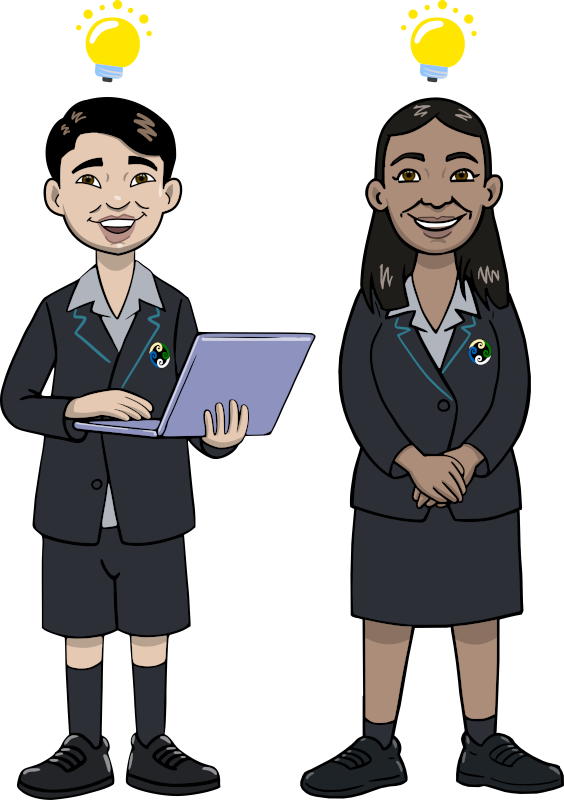
We will be writing out report on our Social Action.
Week 7 Tuesday - Writing Session 4 of 6
Week 7 Wednesday - Writing Session 5 of 6
Week 7 Thursday - Writing Session 6 of 6
Due Friday 1st September at 3pm. -
EXPLORE / TŪHURA learning intentions:
- We are EXPLORING a variety of historical government systems in order to understand how the Aotearoa New Zealand political system devleoped.
- We are EXPLORING...
- We are EXPLORING...
Athenian democracy developed around the fifth century BC in the Greek city-state (known as a polis) of Athens, comprising the city of Athens and the surrounding territory of Attica, and is the first known democracy in the world. It was a system of direct democracy, in which participating citizens voted directly on legislation and executive bills. Participation was not open to all residents: to vote one had to be an adult, male citizen who owned land and was not a slave, and the number of these "varied between 30,000 and 50,000 out of a total population of around 250,000 to 300,000."
Cleisthenes is credited with the reformation of the constitution of Ancient Athens and setting it on a democratic footing. He is considered the "Father of Athenian Democracy."
Aristotle was an ancient Greek philosopher and scientist. At seventeen or eighteen years of age, he joined Plato's Academy in Athens and remained there until the age of thirty-seven (c. 347 BC). His writings constitute the first comprehensive system of Western philosophy. Shortly after Plato died, Aristotle left Athens and, at the request of Philip of Macedon, tutored Alexander the Great beginning in 343 BC.
Socrates was a classical Greek (Athenian) philosopher credited as one of the founders of Western philosophy. He is an enigmatic figure known chiefly through the accounts of classical writers, especially the writings of his students Plato and Xenophon and the plays of his contemporary Aristophanes.
Plato was a philosopher in Classical Greece and the founder of the Academy in Athens, the first institution of higher learning in the Western world. He is widely considered the most pivotal figure in the development of philosophy, especially the Western tradition. Unlike nearly all of his philosophical contemporaries, Plato's entire work is believed to have survived intact for over 2,400 years. Along with his teacher, Socrates, and his most famous student, Aristotle, Plato laid the very foundations of Western philosophy and science.
Xenophon of Athens was an ancient Greek philosopher, historian, soldier and mercenary, and a student of Socrates. As a historian, Xenophon is known for recording the history of his contemporary time, the late-5th and early-4th centuries BC, such as the "Hellenica", about the final seven years and the aftermath of the Peloponnesian War (431–404 BC).
Thucydides was a Athenian historian and general. His "History of the Peloponnesian War" recounts the 5th century BC war between Sparta and Athens to the year 411 BC. Thucydides has been dubbed the father of "scientific history" because of his strict standards of evidence-gathering and analysis of cause and effect without reference to intervention by the gods, as outlined in his introduction to his work.
Watch videos on Google Classroom and answer questions on worksheet. -
REFLECT / WHAIWHAKAARO learning intentions:
- We are REFLECTING on Aotearoa's political system by discussing problems in our society
DEFINITIONs
Complete the definitions.
ANARCHY: A state of political confusion, the state of being ____________ rule.
DEMOCRACY: The form of government where the supreme power lies with the ____________ who vote for their leaders.
DICTATORSHIP: Where a country is ruled by a person with _______________ control.
Paragraph Writing:
You are going to PLAN and then WRITE a structure paragraph to the question below:
Why is it important for us to study government and what could happen if we do not use our rights and responsibility to vote for our leaders?
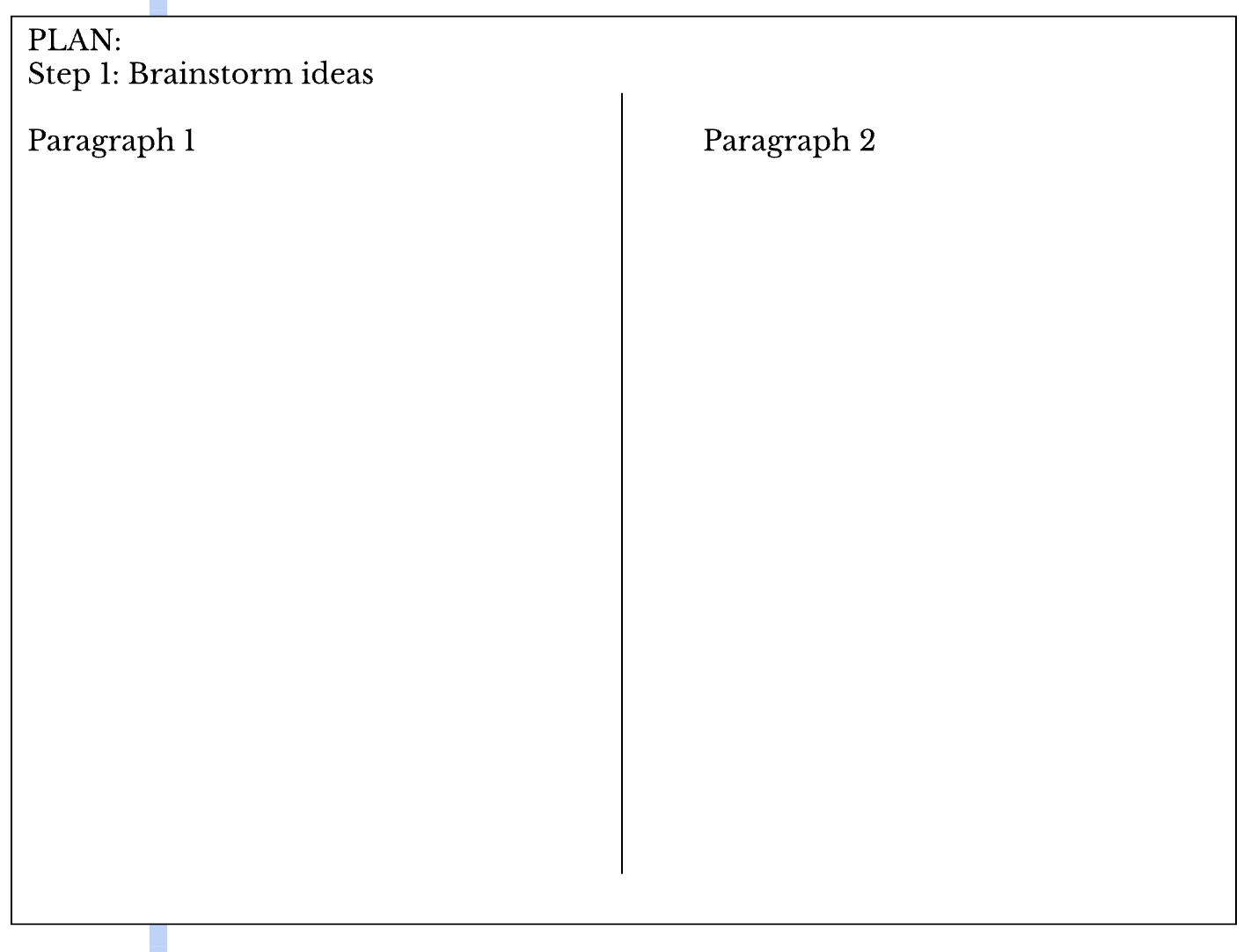
Write a 2 short paragraph to answer the question.
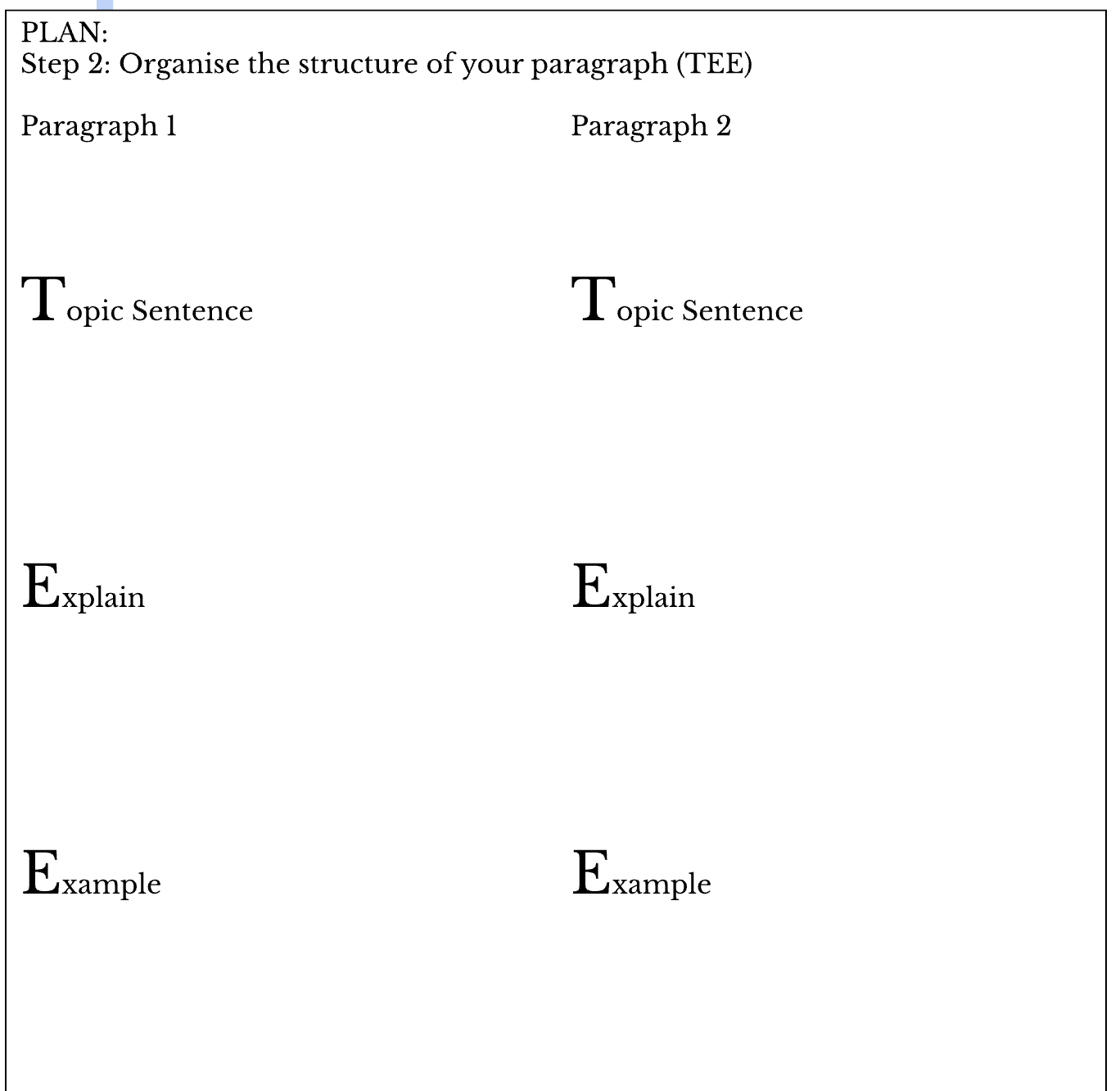
NOW you are ready to write your paragraphs:
-
REFLECT / WHAIWHAKAARO learning intentions:
- We are REFLECTING on Aotearoa's political system by discussing problems in our society
I believe we can make a difference; for myself, for others and for my community:
- Emerging:
- I understand that mistakes are essential for learning
- I use positive self talk as I seek to achieve my goals
- I seek input from others to help me make decisions
- Growing:
- I am robust as I overcome challenges and upsets
- I am positive and persistent as I strive to achieve my goals
- I can make independent decisions, seeking input from others when needed
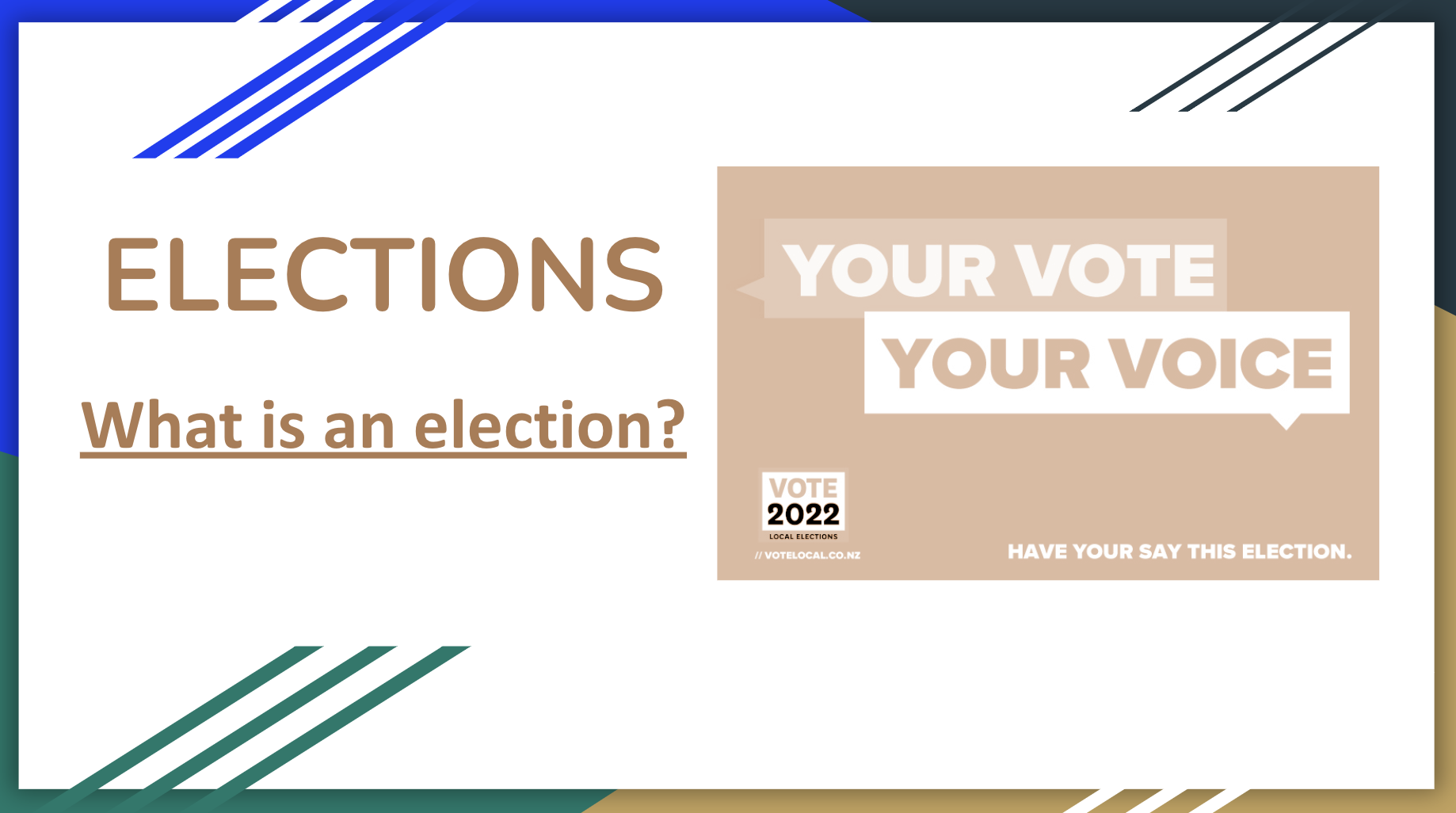
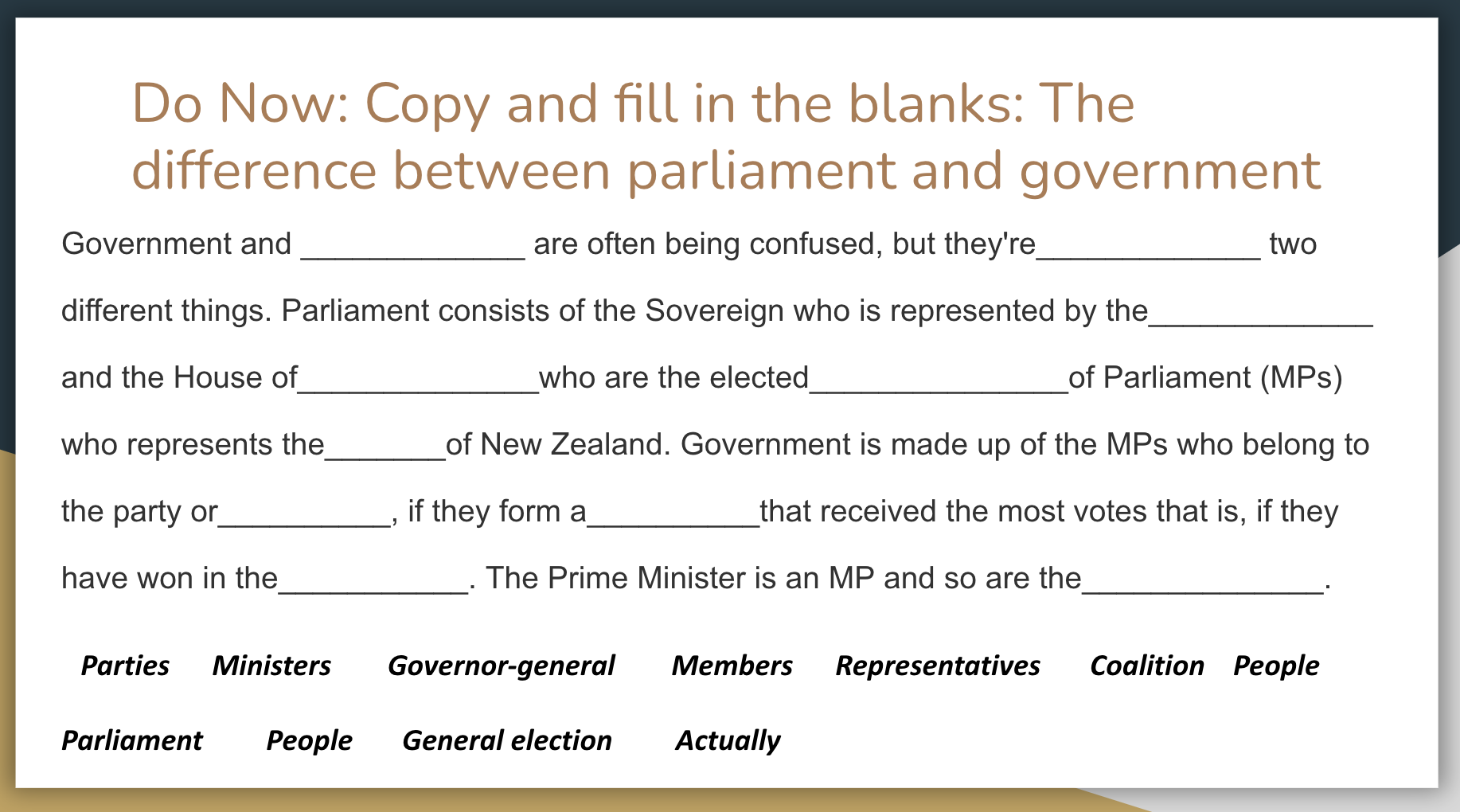
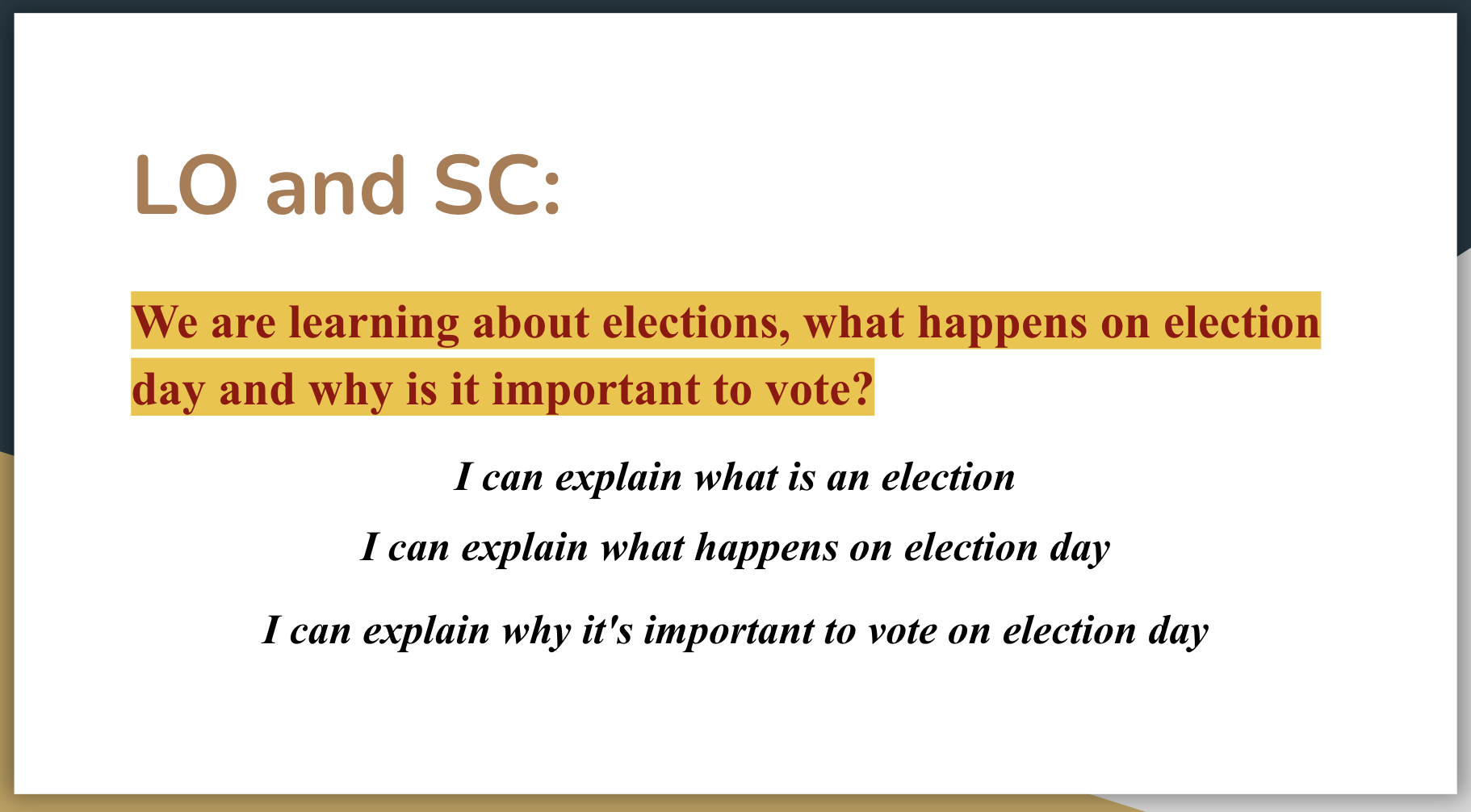
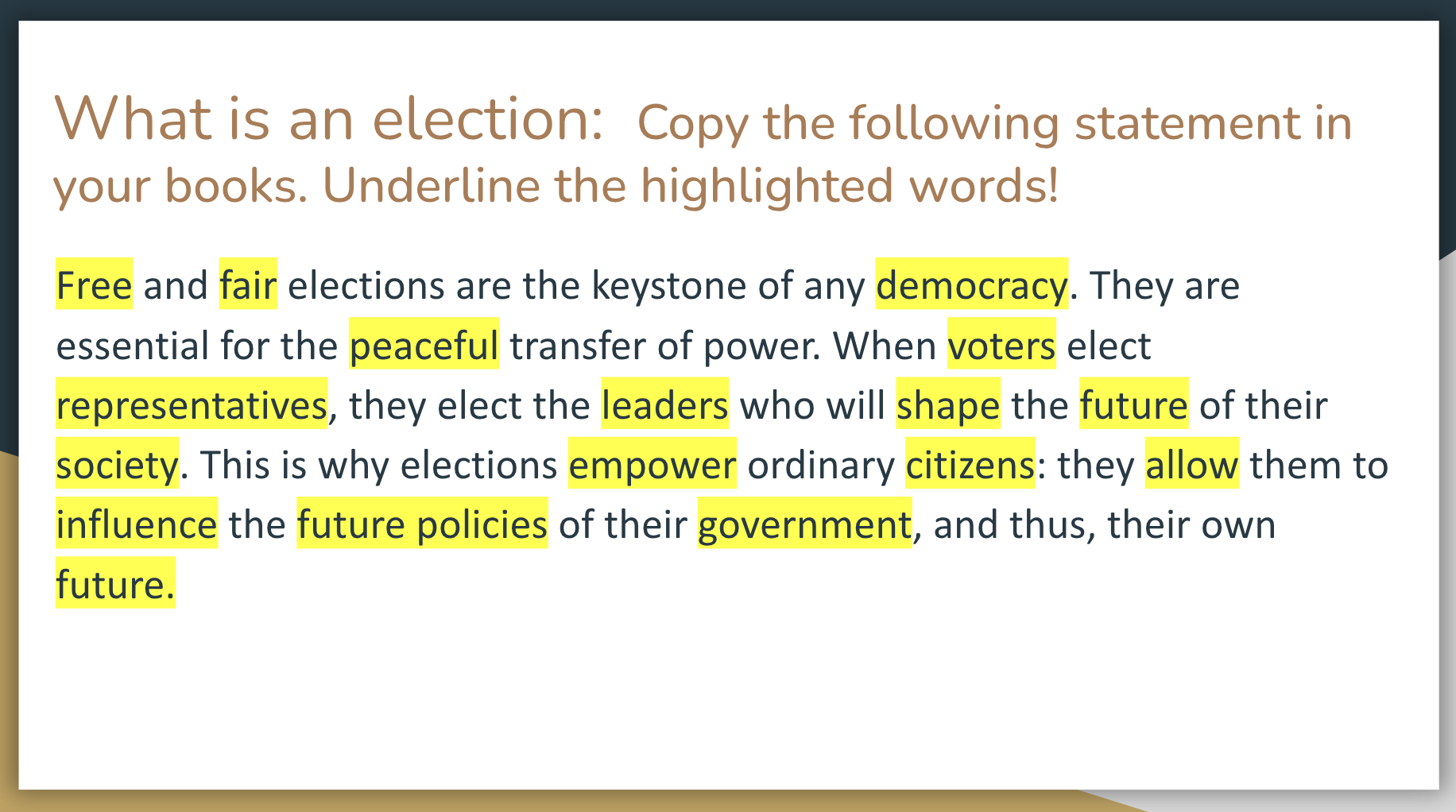
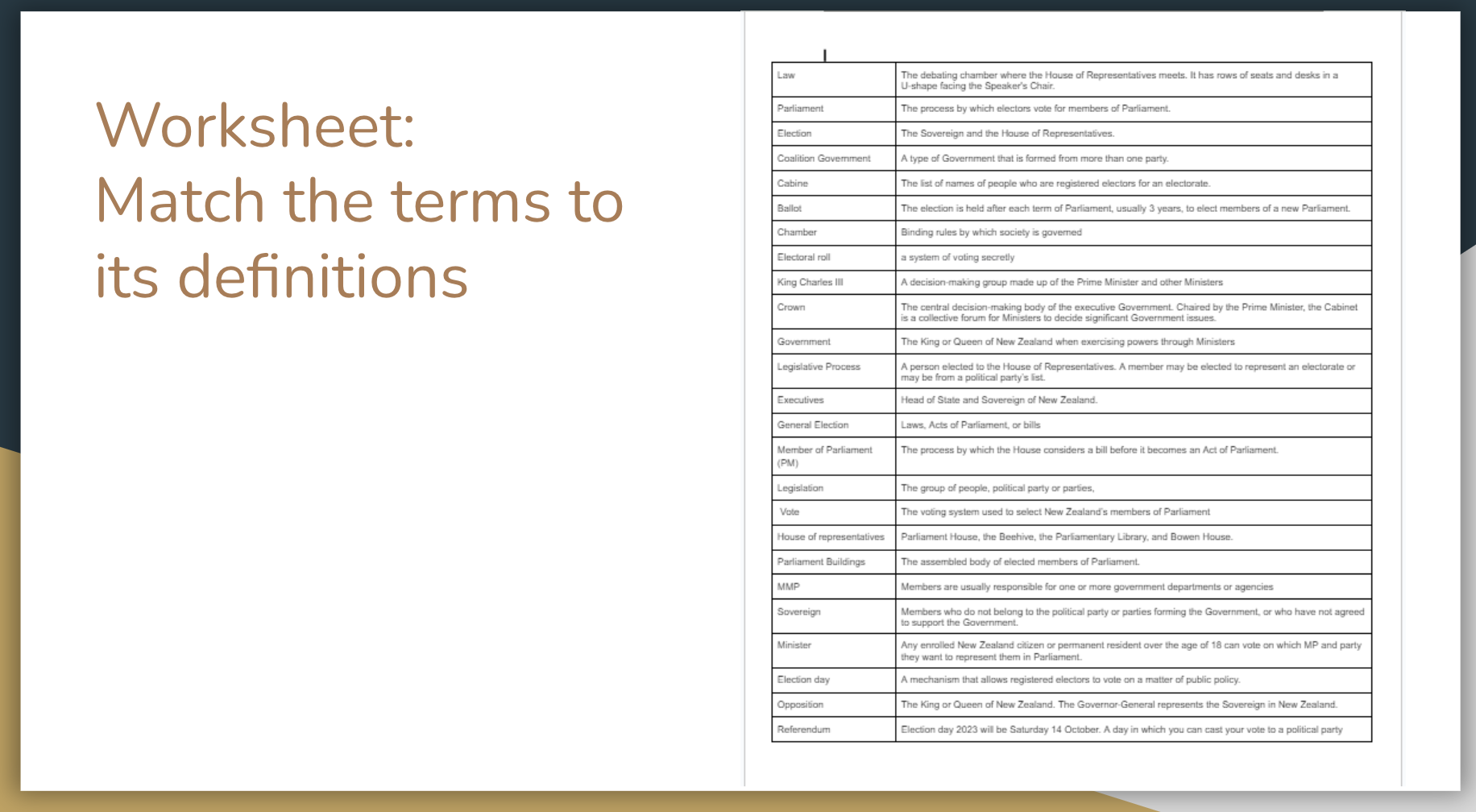
Worksheets and more information such video links are on Google Classroom -
EXPLORE / TŪHURA learning intentions:
- We are EXPLORING how by getting involved we can make an impact on our community or environment.
Learning Outcome(s) and Success Criteria
Lesson 1:
LO: we are learning about policy writing
SC: I can explain ‘what is a policy?’
: I can outline examples of policies that have already been carried out
: I can identify the two types of policies
: I can outline the reasons of why we need policies
Lesson 2:
LO: we are learning about policy writing
SC : I can demonstrate understanding of doing research for my policy document
: I can identify relevant sources for gathering information
: I can demonstrate effective research skills in the context of policy writing
Lesson 3:
LO: we are learning about writing a policy
SC: I can understand the importance of writing a policy
: I can outline the structure of a policy document
: I can write a policy by using the appropriate structure
-
EXPLORE / TŪHURA learning intentions:
- We are EXPLORING how by getting involved we can make an impact on our community or environment.
- We are EXPLORING a variety of career pathways to discover what options are out there for us to pursue
- We are EXPLORING...
Policy Presentations
Learning Outcome(s) and Success Criteria
Lesson 1:
LO: We are learning to present our policy document and record it
SC: I can present my policy on climate change and transport
: i can record my policy document for my political party
Lesson 2: Same as lesson 1
LO: We are learning to present our policy document and record it
SC: I can present my policy on climate change and transport
: i can record my policy document for my political party
Lesson 3:
LO: We are learning to prepare a 5 minute campaign presentation
SC: I can prepare a campaign presentation
: I can convince the voters to vote for me -
You may have an idea of a career you want to look into, or you may not have decided what career pathway you will choose. This week, we will be exploring a variety of career pathways so that you have some ideas about what options are out there!
Quick fire career study: exploring a variety of careers and identifying key skills employers want to see (this differs depending on the career pathway)
Step 1: Careers Quiz
Take this career quest quiz to see where your interests could lead you:
https://www.careers.govt.nz/tools/careerquest/question
Note: if the site asks you to sign in, just look under the button and you have the option to start the quiz without signing in
Step 2: Career Quest….the Results!
Write down 4-5 of the suggestions which sound interesting to you - add one or two that were unexpected too!
For each, follow the link on the Careers site and find out what qualifications you need for this career.
For each job/career, the webpage will give you information about pay, job opportunities, working conditions, and “what is the job really like?”. At the bottom of the page, you will find the ENTRY requirements and the PERSONAL requirements
Note: you only need to use www.careers.govt.nz for this activity.
Career suggested by the Quiz (it’s not binding, just suggestions!!)
What are the ENTRY requirements?
What are the PERSONAL requirements? (jot down the top 3-4)
1
2
3
4
5
Did your careers quiz suggestions offer any ideas that you hadn’t previously considered?
What new information did you discover about careers which interest you?
What do you notice about the personal requirements for all of the careers you investigated? List them below.
What questions do you have?
How might you be able to explore your preferred career options through our work experience program?
-
PLAN & DO / WHAKAMAHI learning intentions:
- We are PLANNING our study time and study materials so that we can prepare for our various CAT and Co-Req tests over the next few weeks.
Not like this!!
Co-Req and Cat Prep Week
Review your EP tasks and complete the practise CAT in Google Classroom.
How do I start preparing for CAT?Practising previous years' question papers and mock tests helps you identify your strengths and weaknesses.One of the most important factors in cracking CAT is the choice of questions. Make sure you analyse a question carefully before you attempt it, and go forward only if you are confident enough to solve it.
Words to Watch for in Essay Questions
The following words are commonly found in essay test questions. Understanding them is essential to success on such questions. If you want to do well on essay tests, then study this page thoroughly. Know these words backward and forward. To heighten your awareness of them, underline the words when you see them in a test question.
Discuss: Consider and debate or argue about the pros and cons of an issue. Write about any conflict. Compare and contrast.
Enumerate: List several ideas, aspects, events, things, qualities, reasons, etc.
Evaluate: Give your opinion or cite the opinion of an expert. Include evidence to support the evaluation.
Explain: Make an idea clear. Show logically how a concept is developed. Give the reason for an event.
Illustrate: Give concrete examples. Explain clearly by using comparisons or examples.
Interpret: Comment upon, give examples, describe relationships. Explain the meaning. Describe, then evaluate.
Outline: Describe main ideas, characteristics, or events. (Does not necessarily mean to write a Roman Numeral/Letter outline.)
Prove: Support with facts (especially facts presented in class or in the text.)
State: Explain precisely. Relate: Show the connections between ideas or events. Provide a larger context.
Summarize: Give a brief, condensed account. Include conclusions. Avoid unnecessary details.
Trace: Show the order of events or progress of a subject or event.
Define: Give the meaning; usually a meaning specific to the course or subject. Explain the exact meaning. Definitions are usually short.
Describe: Give a detailed account. Make a picture with words. List characteristics, qualities, and parts.
Analyze: Break into separate parts and discuss, examine, or interpret each part.
Contrast: Show differences. Set in opposition.
Compare: Examine two or more things. Identify similarities and differences.
Criticize: Make judgments. Evaluate comparative worth. Criticism often involves analysis.
If any of these terms are still unclear to you, go to an unabridged dictionary. Thorough knowledge of these words helps you give the teacher what he/she is requesting. -
PLAN & DO / WHAKAMAHI learning intentions:
- We are PLANNING our study time and study materials so that we can prepare for our various CAT next weeks.
Not like this!!
Cat Prep Week
Review your EP tasks and complete the practise CAT in Google Classroom.
How do I start preparing for CAT?Practising previous years' question papers and mock tests helps you identify your strengths and weaknesses.One of the most important factors in cracking CAT is the choice of questions. Make sure you analyse a question carefully before you attempt it, and go forward only if you are confident enough to solve it.Short answer questions
Short answer questions range from a sentence or two through to a paragraph in length.
- Keep to the point. Short answers are usually two-three sentences.
- Main ideas. Your answers should incorporate the key points, words, ideas and phrases the marker will be looking for.
- Leave one or two lines after each answer. This is so you can add important points later on.
- Try to answer all the questions. If you don’t know the complete answer, put down what you do know, as this is likely to get you some marks.
Exam essay questions
The advice here is in four parts: Time allocation | Task analysis | Planning | Presentation
Time allocation
- Use the reading time at the start of the exam to choose which essay questions you will answer.
- Check how much time you might have to answer each essay question, and stick to it. You can come back and add more to your answer in your revision time at the end of the exam session.
- If you haven’t finished your answer, jot down the rest in note form. This will show the marker what you know, and you might get some marks for it.
Task analysis
- Read the question carefully.
- Underline or highlight the content words. What is the topic?
- Pick out the instruction words in the question, e.g. identify, describe, compare and contrast, evaluate. What are you being asked to do with the topic?
Planning
- Take some time to think and plan your answer. For example: use the reading time to select which essay questions you will answer. Then use the start of the writing time (5-20mins) to make notes of all the points you remember that are relevant to the essay.
General guide for timing: for 30 minutes of writing, allow 5-7 minutes for planning. - Plan out the structure by organising your points into a logical order:e.g. by numbering them according to intended sequence.
- General writing rule for exam essays - one paragraph = one point. Follow standard essay-writing procedure, e.g. start with a topic sentence that contains your key point, and then support this with examples, explanations, and evidence.
Presentation
- Make sure your handwriting is legible. Markers should not have to decipher your handwriting. If your handwriting is illegible, it could compromise your marks.
- Make sure that you can express ideas effectively in terms of sentence structure and word use. Incoherent sentences and incorrect terminology will likely result in the marker not being able to understand your answer properly.
- Don’t worry too much about punctuation, grammar and spelling. Getting your ideas down is more important than ‘perfect’ writing (and markers usually take this into account given that students are writing under pressure in an exam situation). However, you do need a basic level of competency in these areas: an answer that lacks any punctuation and is full of spelling mistakes will probably be incoherent for the marker.
- Don't waffle. Get straight to the point in terms of your answer so that you don’t waste time and word space on unessential or irrelevant detail. Planning your essay beforehand is key to avoiding waffle.
-
Plan you time and prepare well.
-
Learning Intentions
After completing this lesson plan, and through regular engagement with Careers in Banqer High students will be able to:
Build a CV for employment purposes.
Evaluate and select an appropriate career path.
Understand the financial responsibilities and consequences of a student loan.
Demonstrate the responsibility and commitment required to advance in a career.
Review a payslip to understand income-related calculations.
Actively assess other employment options over time.
We are looking to explore different types of jobs that you may be interested in.
Task: Class Discussion
Start the class thinking about careers by asking students the following- What are some jobs that students can think of?
- Does anyone know what job they might like to do in the future?
- If students are looking for a job, where might they look?
Go to the Careers expansion and click “Do the Careers Quiz.”
The careers quiz is a 6 question multi-choice quiz. All of the answers are provided to the students alongside the question.
Task: Quiz
Read and interpret information to select the correct answer.
Topics covered include- CVs,
- Skills & Education,
- Work Experience,
- and References.
Fill out a CV via the Careers expansion.
Task: Video viewing
To understand the purpose of a CV, watch the ‘Writing a CV’ video (1 min 20) as a class or individually. This video can be found under the careers section on your dashboard.
Task: CV templates
Look at the two example CVs, questions and templates in the What to put on a CV worksheet and the CV Review worksheets. These provide you with a ‘good’ CV example and a ‘bad’ CV analyse these and get a better idea of what to put in your own CVs.
Task: Fill in your details- Fill in their CVs on Banqer High.
- Click ‘View and edit your CV’,
- Enter information such as ‘Skills’, ‘Education’
- Select someone to be a referee - possibly the person youa re doing Work Experience with next week.
- When finished CV, they can close the screen.
-
PLAN & DO / WHAKAMAHI learning intentions:
- We are DEMONSTRATING skills in the workplace to PROMOTE ourselves as future individuals.
-
REFLECT / WHAIWHAKAARO learning intentions:
- We are REFLECTING on our time at Work Experience and developing skills to be inclusive members of the community.
1. Self-reflection
Activity: Completed a diary during their placement, now is the time to revisit it. If you didn’t complete one, refresh their memories by asking them to complete your diary.
Think about what you've learned. It could be the importance of teamwork and organisation skills. You may have learned something as simple as performing tasks such as answering the telephone in a professional manner. These are all useful skills which are important in the workplace. If you took pictures of their work experience, hey may like to look back on these too. (Five – 10 minutes)
You may need to guide them through this process by asking them leading questions, such as:- What have you learned?
- Did you find anything difficult?
- Has it made you think about what you would or wouldn't like to do in the future?
- What did you enjoy the most?
- What did you like the least?
Write a short summary with three key points you've learned from your work experience placement.
Activity: Write down a challenge you overcame during their work experience. It could be based on how different you found work life from school or a problem-solving issue – such as how to work the photocopier, or take notes in a meeting.
Next, ask students to pair up and share their experiences with one another. Encourage them to discuss how you could've approached this situation differently, and what you found surprising or interesting about work experience.
Finally, ask each pair to share a learning with the class.2. Writing a thank you letter
Students are to:
- use their work experience diary to help shape your letter, by looking back over what you've learned during their placement
- put what you've learned into bullet points. This should help frame the letter
- think about the ‘transferrable’ skills you have learned or seen in practice in the workplace. For example, learning the importance of communication in meetings

